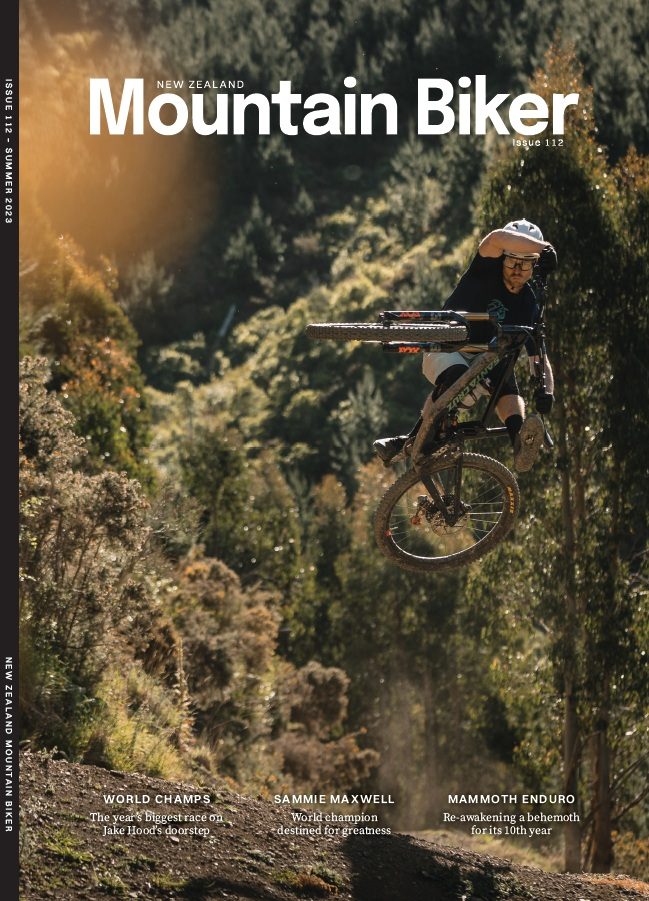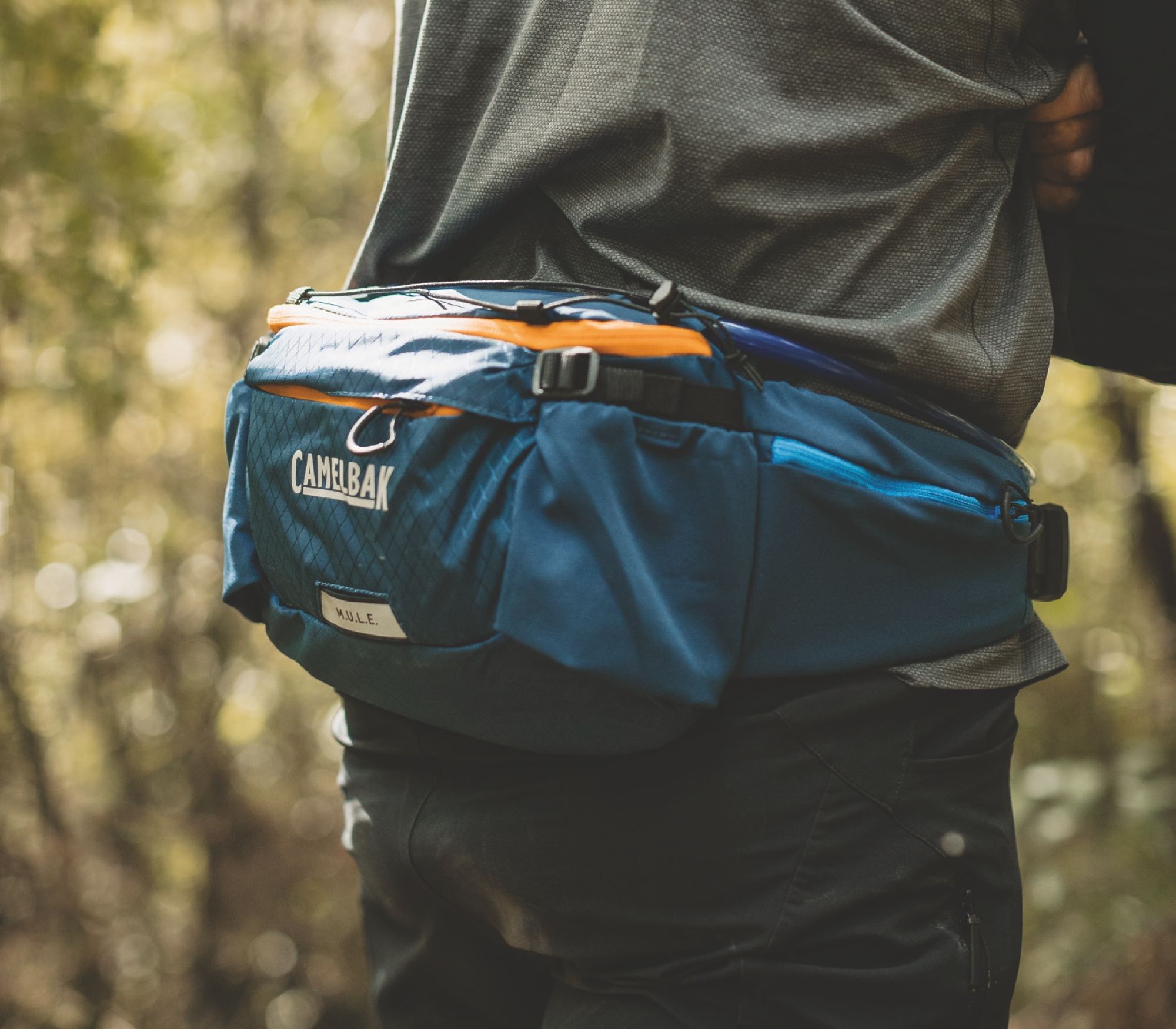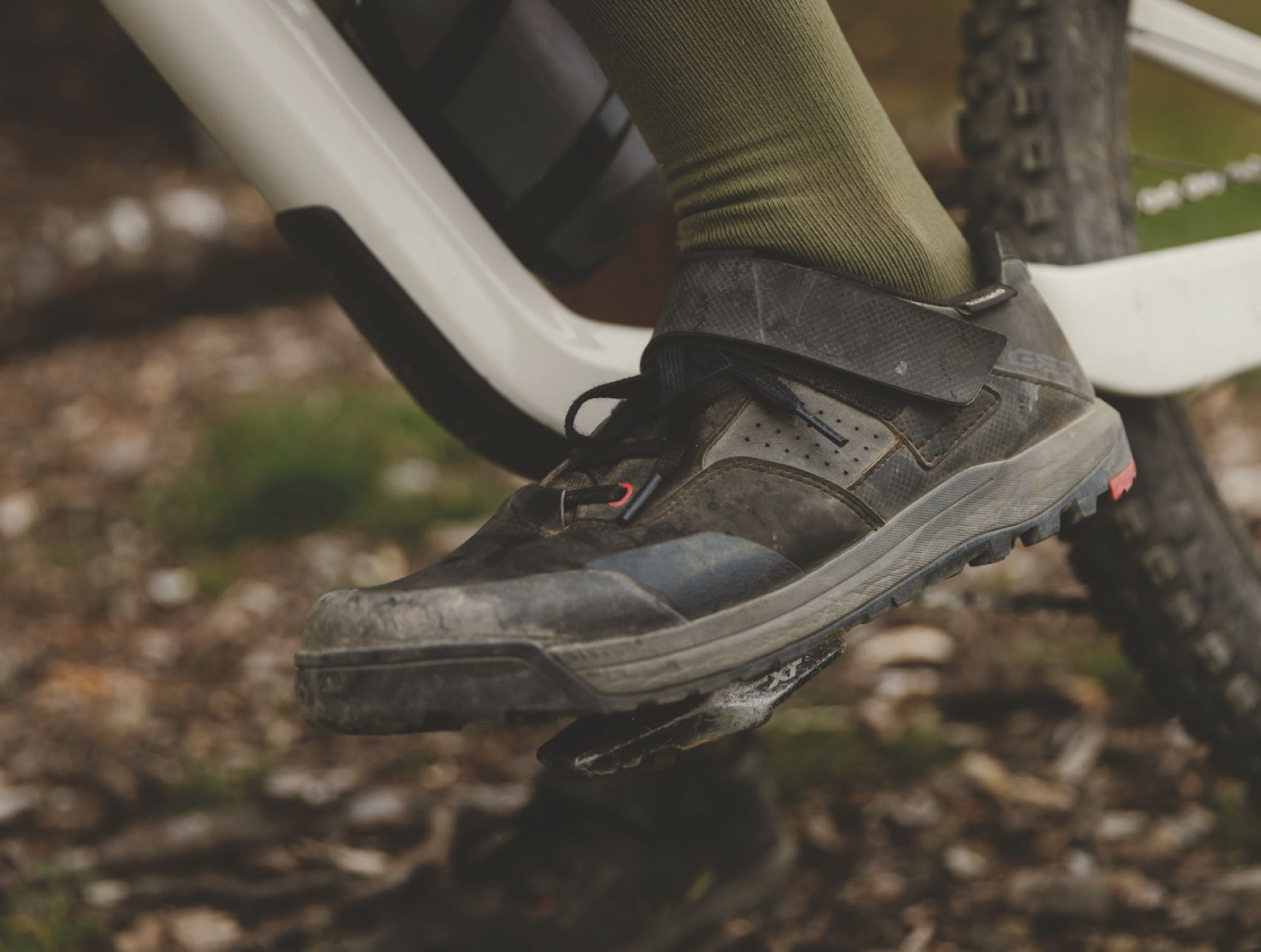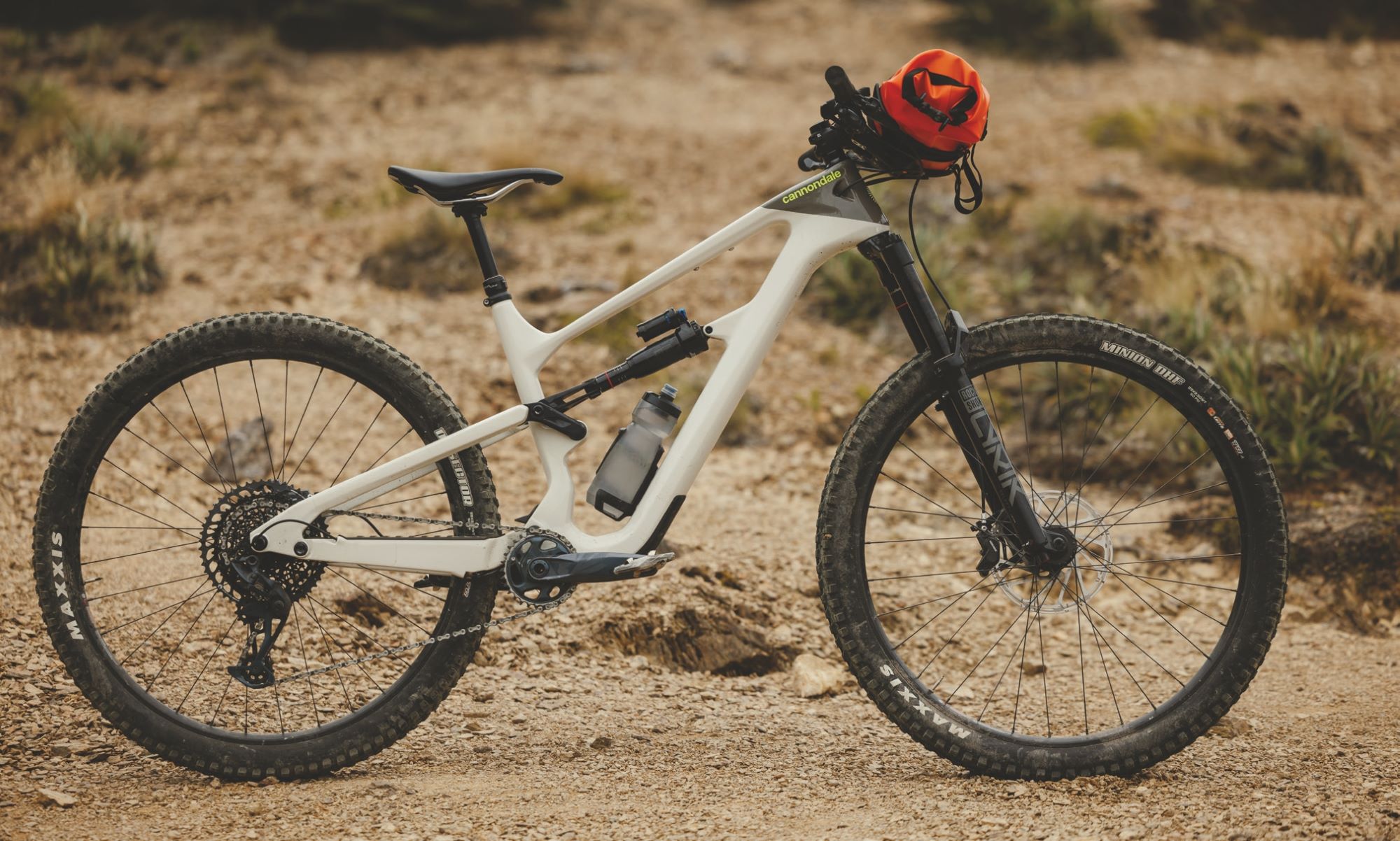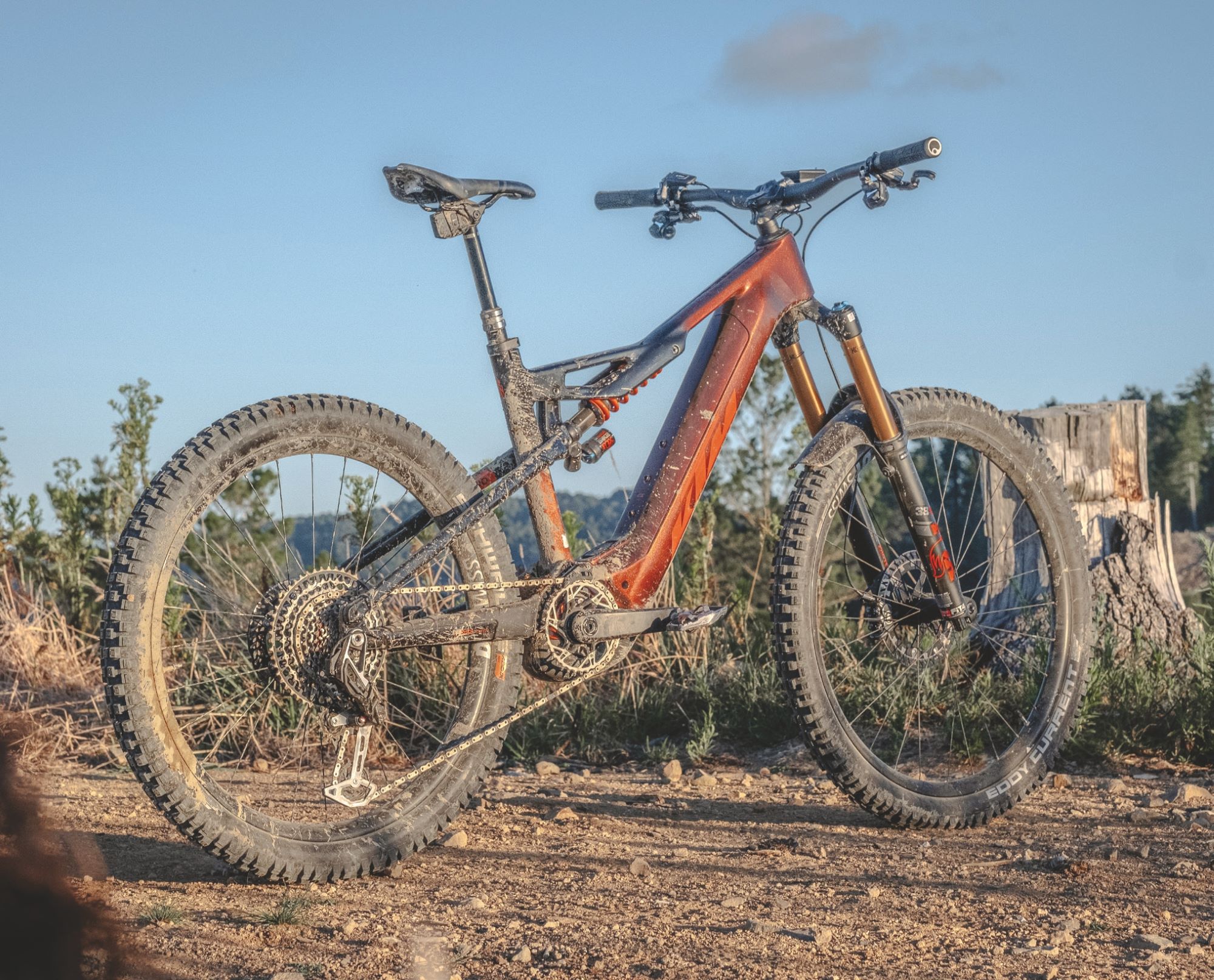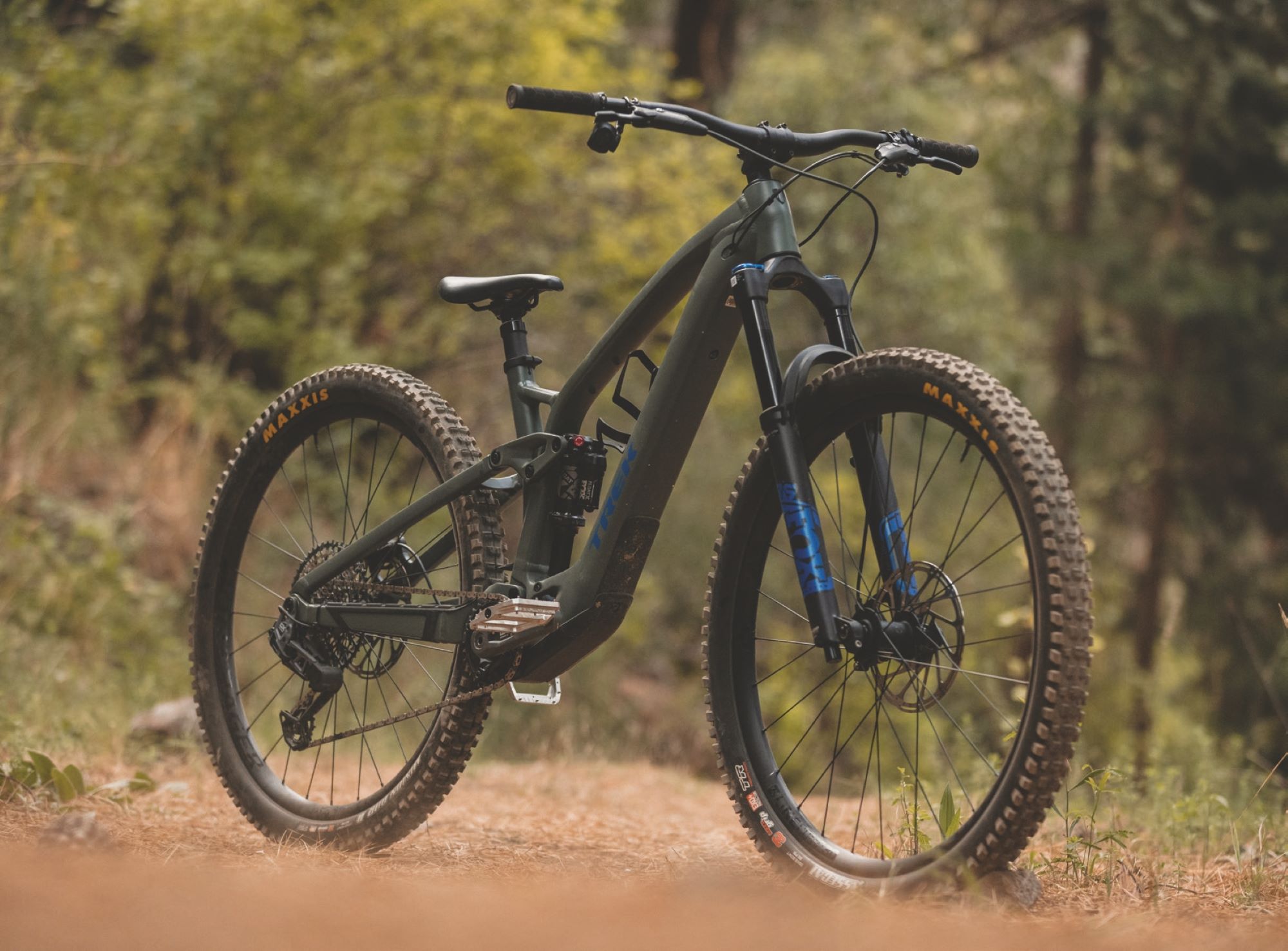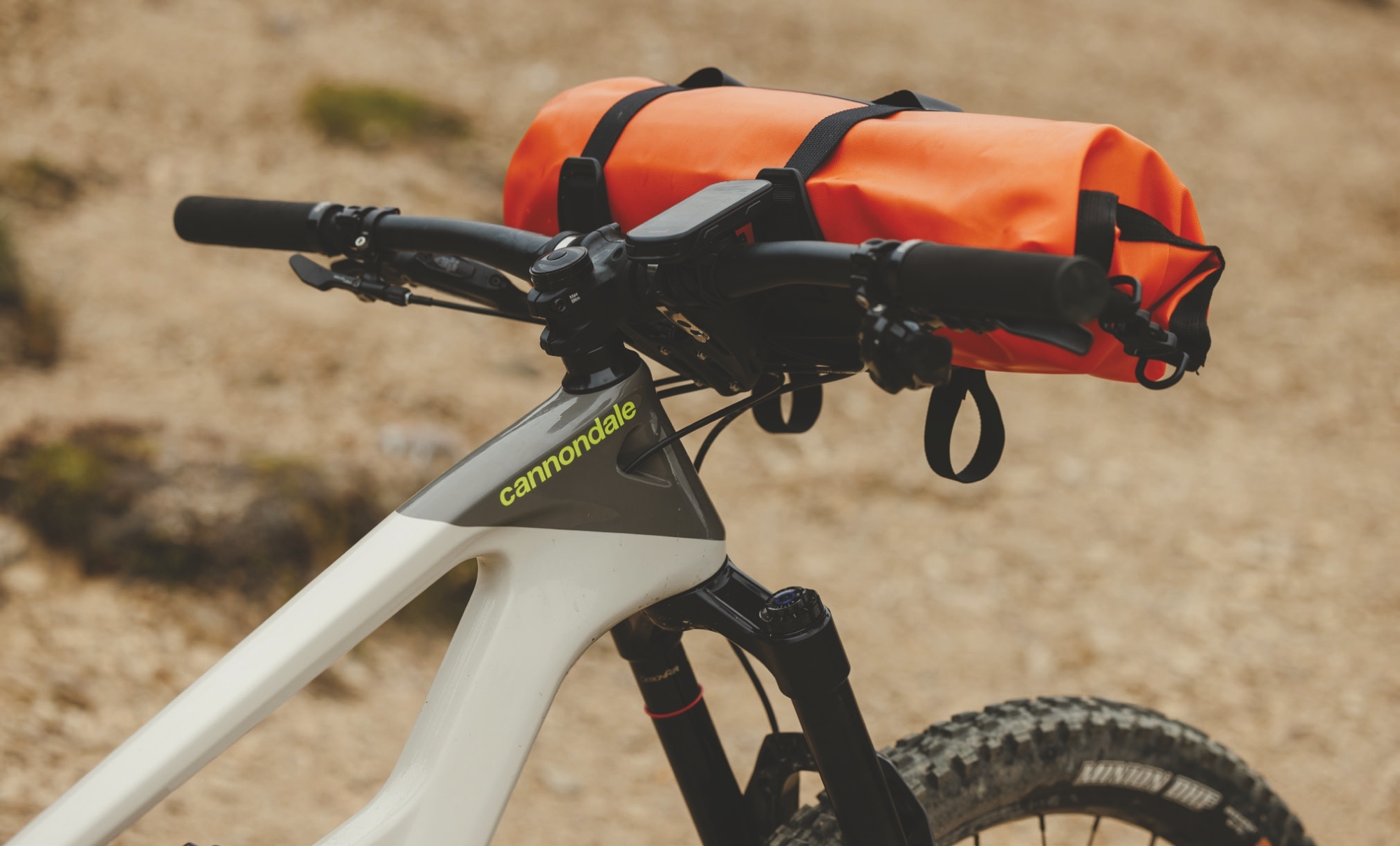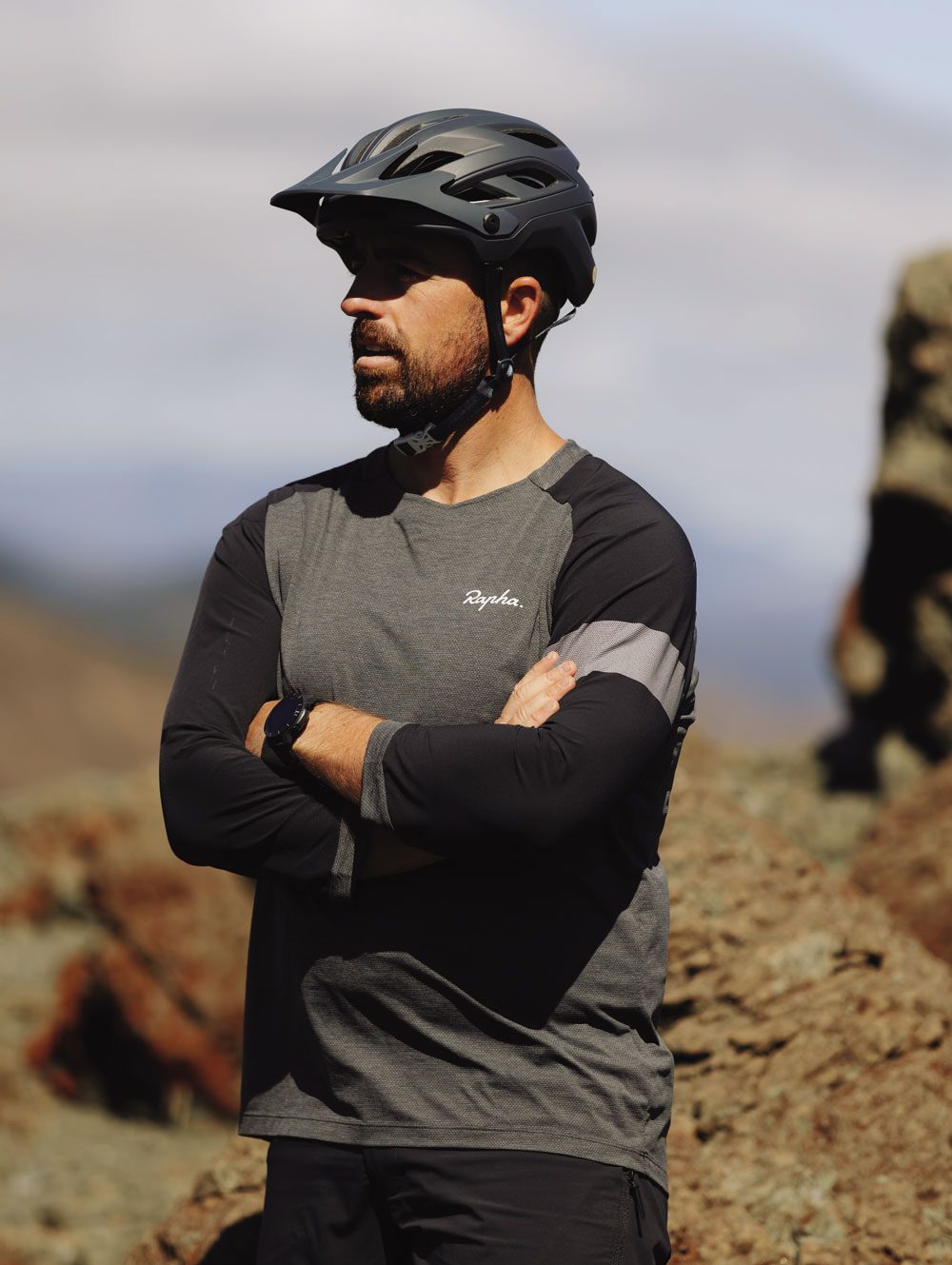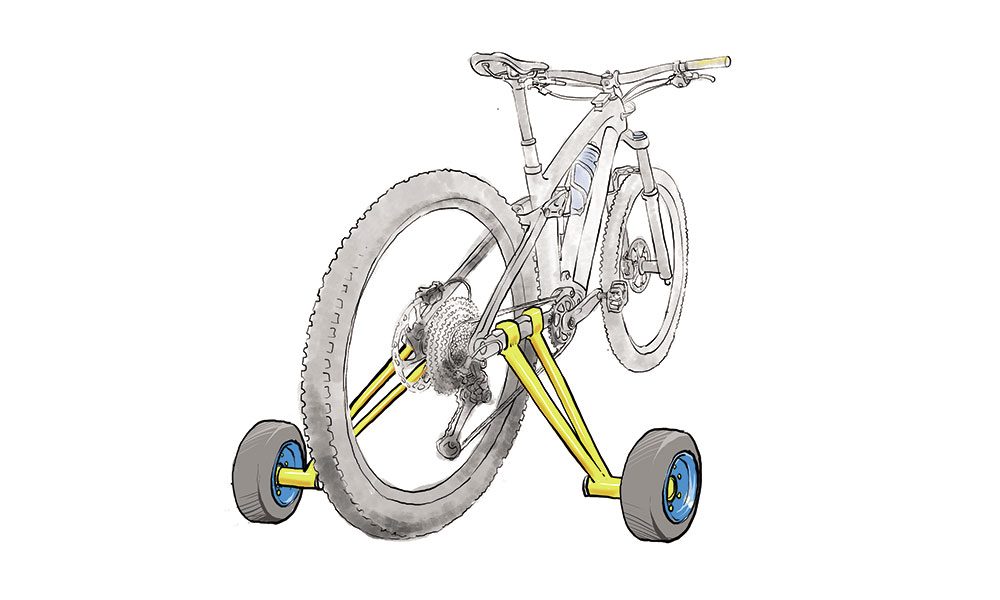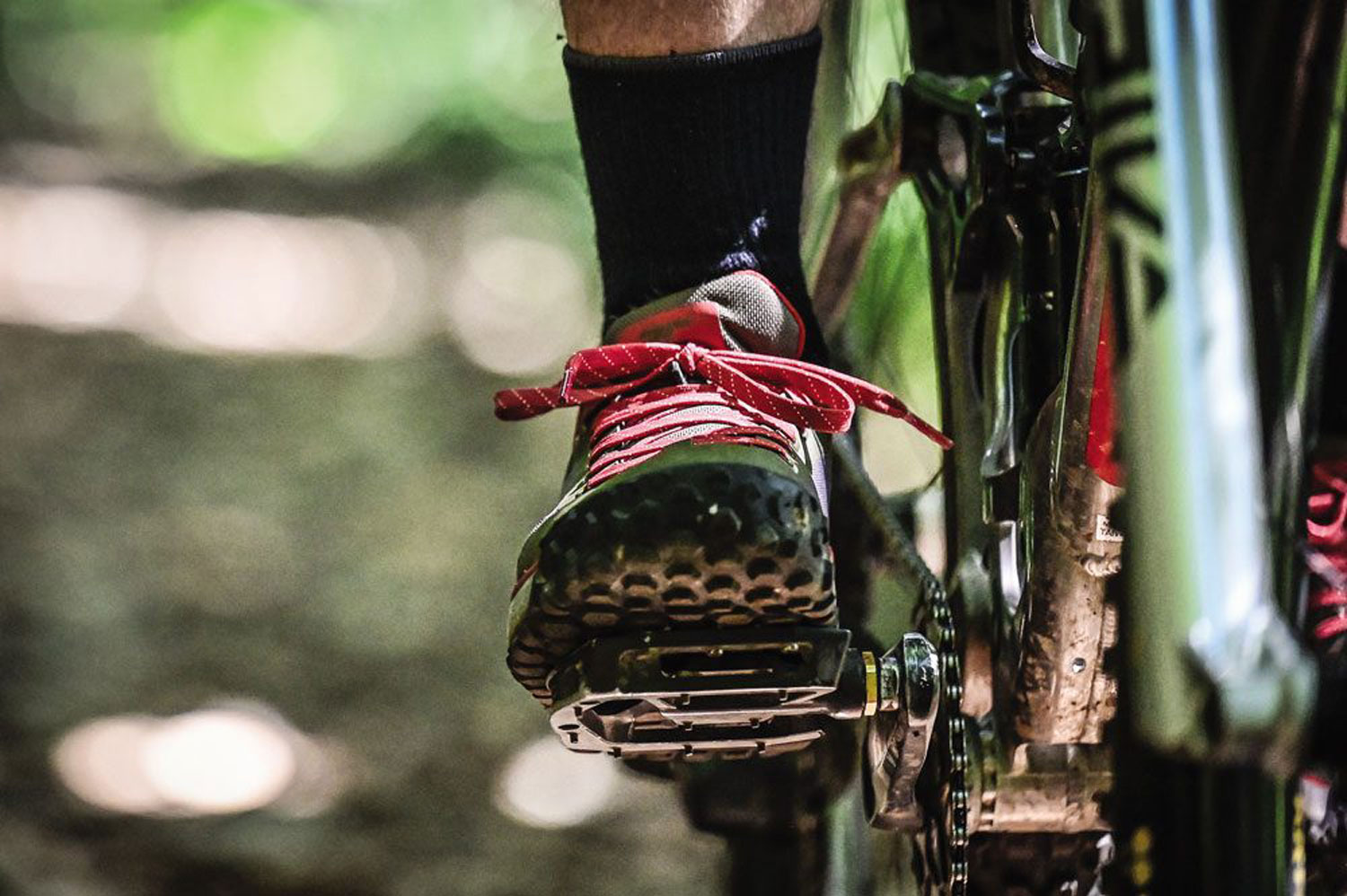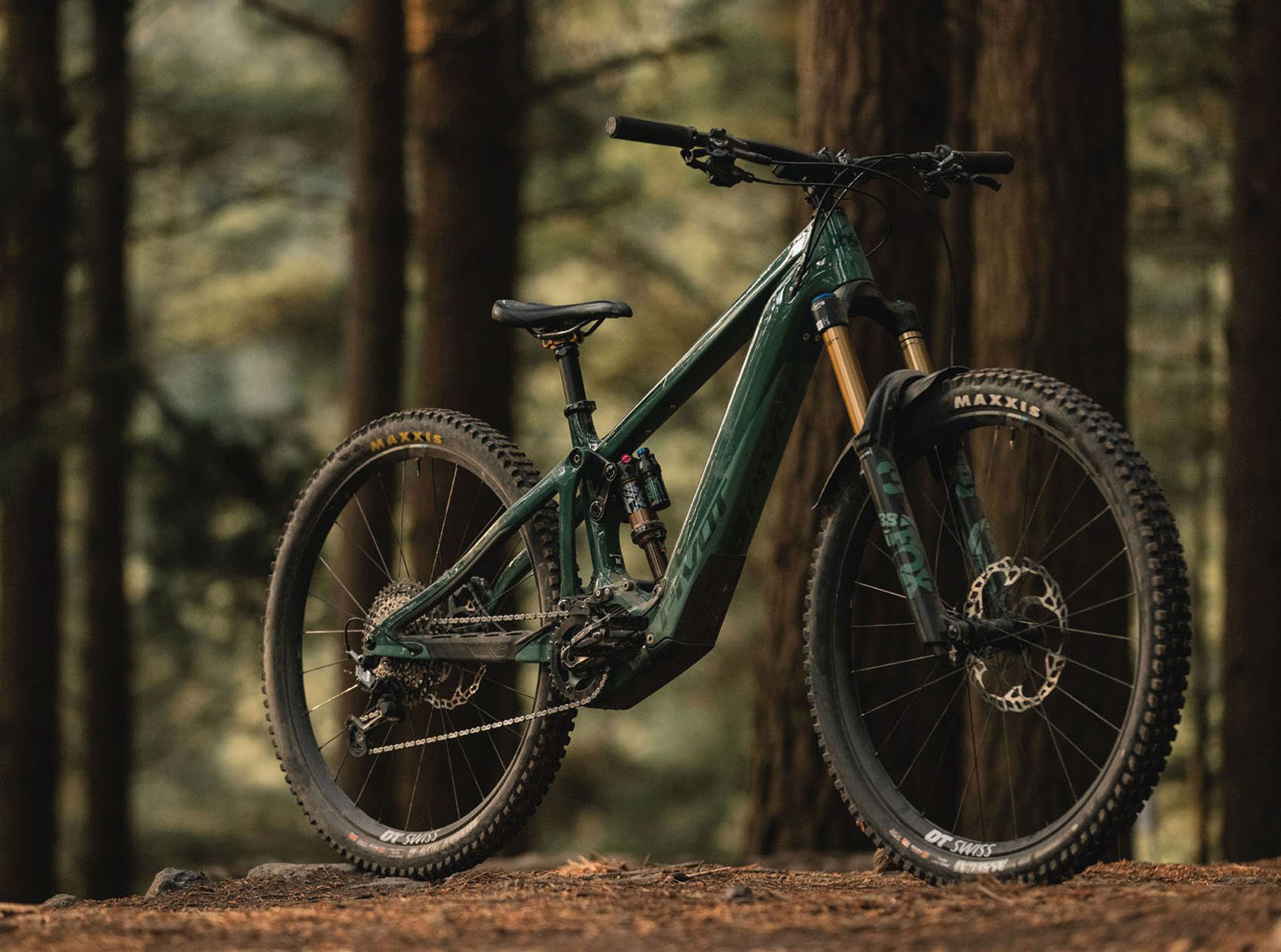CamelBak M.U.L.E 5 Waist Pack
Words Lester Perry
Image Cameron Mackenzie
RRP $179
Distributor Southern Approach
Let’s face it: most people avoid riding with a backpack at all costs, particularly on hot summer days. Out on the trails, we see all sorts of things strapped to bikes, but if you’re hoping to go further afield and into the outback then you need more than that tube, a CO2 canister and a tyre lever strapped to your top tube, let alone the need for extra hydration.
The CamelBak M.U.L.E is a worthy attempt to solve the problem of not wanting to wear a pack, whilst carrying almost as much gear as a small pack, along with some extra hydration. The hip-pack weighs in at 320 grams and offers a 3.5-litre capacity. It’s sewn from a hardwearing, lightweight 200D Nylon Ripstop material. An Air Support back panel helps with airflow between the pack and the body, using an open mesh and foam combo to help air move between the two.
The M.U.L.E has lots of storage options; the main compartment has a pocket for the bladder and some internal pockets to help keep small items in place and right where you put them; and there’s also a smaller outer pocket. On either side of the main compartment are bottle holders, designed for a regular-sized CamelBak Podium bottle but ideal for whatever you want to stuff in them. The waist strap helps support the load on the hips and adds stretchy pockets with envelope closures on either side of the main compartments, ideal for small items you want easy access to without needing to rotate the pack forward. Compression straps can be cinched up to hold the contents in place and help keep the weight close to the body. Along the bottom of the pack are some elastic loops, offering additional external storage, ideal for a jacket, large salami, or half-eaten baguette.
The M.U.L.E comes supplied with a Crux 1.5L hydration bladder, offering effortless access for your sipping pleasure thanks to its nifty QuickLink magnetic holster and high-flow bit valve. If you wanted, you could forego the bladder and add bottles to the side pockets for a more versatile and adaptable setup.
Having a waist pack on some of our hottest days, rather than a full pack, has been great - it’s so much cooler to wear.
As you can see, there’s quite a lot going on with the M.U.L.E. I’ve found it a versatile piece of kit, using it on some lengthy rides, sans bladder, mainly as a place to stow some tools, food, and a jacket, while keeping bottles on my bike. I’ve generally left it loaded up after each ride so I can just clip it on when I’m heading out for a dawn raid, knowing I’ve got everything I need for every eventuality, within arm’s reach. Having a waist pack on some of our hottest days, rather than a full pack, has been great – it’s so much cooler to wear. Without a full bladder in there, the capacity is quite large and I can’t imagine anyone would need anything bigger than this to carry a day-trip worth of gear.
On adventures where I’ve added the 1.5-litre bladder into the mix, I’ve found the pack quite heavy, probably a good couple of kilos hanging off my hips. When I was breathing heavily while seated (think a steep hour-long climb) the waist belt got in the way of breathing freely – not ideal. Trying to remedy this, I’ve taken to fitting the strap as low on my hips as possible; this helps to a point, but doesn’t solve the problem. I have found it’s better suited to riding a more relaxed, upright position (i.e. on an Enduro bike) and when I’m not puffing hard it’s certainly not as noticeable.
Does it work well? Yes. Is it comfortable and unobtrusive to use? Sort of. It’s comfortable to wear and I’ve appreciated being able to have a bunch of kit on hand, but when the bladder is full, all that weight hanging off my hips and interfering with breathing kills the advantages of using it for me. I’ll keep using it to carry gear and food when required, but only use a full bladder when there’s really no other option.
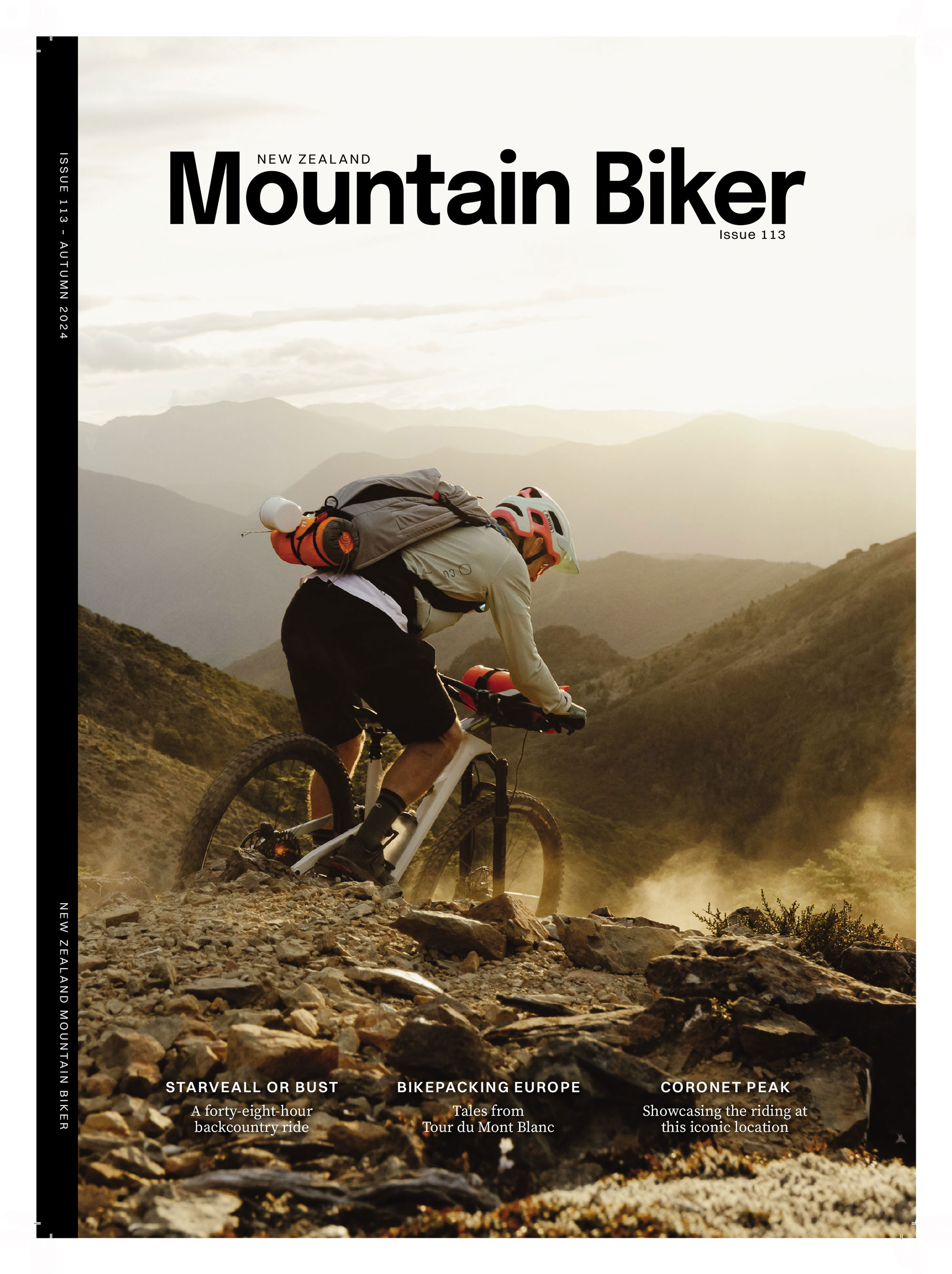
Shimano GE700 Shoes
Words Lester Perry
Image Henry Jaine
RRP $249
Distributor Shimano NZ
If the shoe fits, wear it.
The GE7 is part of the latest range of redefined Shimano shoes. Much like the flat pedal- focussed GF6 we reviewed in our previous issue, the GE7 has received a new silhouette and last, as well as incorporated a host of Shimano’s latest tech and buzzword features.
Striking a healthy balance of inspiration from skate, MTB, and outdoor shoes, I’d say there are equal parts of each included in the design; the GE7’s styling doesn’t delve too far into any one category. Internationally. I see there’s a light grey colourway available with some nice earthy-toned accents – certainly in line with current fashion trends, but unfortunately this appears to be unavailable in NZ. If you like black then these will be right up your alley. And, fortunately, black goes with everything! Want some colour in your life? You can step up a level to the GE9 – essentially the same shoe but with a BOA tensioner.
I’m roughly three months – and a tonne of varied rides – into my time with the GE, and I’m stoked about these kicks. The synthetic leather upper is showing few signs of wear, although just like a glossy black Audi, it’s tough to keep them looking clean. Sturdy laces keep the shoe secure on foot and, rest assured, there’s nothing mechanical to worry about breaking when you’re in the back blocks of nowhere. The chunky Velcro strap at the top of the shoe can be cranked down as tight as you’d like, providing a super secure heel hold if that’s what you’re after. Laces can be tucked tidily under the strap for snag-free riding or hiking.
If you’ve ever kicked your toes into a rock while foot out drifting through a turn, or clipped a root while rodeoing through a section of trail, you’ll appreciate the robust cap over the front of the toe box.
I’m roughly three months - and a tonne of varied rides - into my time with the GE, and I’m stoked about these kicks.
There’s a substantial amount of fore and aft adjustment in the cleat bed, so regardless of your beliefs on cleat positioning, you should find your nirvana with these shoes. While clipping in, there’s no interference from the sole with the pedal and, in classic Shimano fashion, the cleat glides right on into, and out of, the pedal unhampered. Honestly, I’ve had a hard time with shoes over the years, and I’m always nervous to try anything new.
I’m after a reasonably stiff sole for pedalling but want a shoe that’s equally as walkable; the holy grail, Goldilock’s porridge sort of vibes. I’ve had gravity-focused shoes from Shimano that were plenty comfy, but too flexible while pedalling for my liking. Utilising Shimano’s Torbal 2.0 midsole, the GE7 offers what I reckon is edging on the perfect level of stiffness for trail and gravity endeavours, ticking all the boxes for me. I’ve been impressed by how solid they feel on the pedals, there’s minimal flex under power – there is some but it takes some watts to really feel it, and there’s enough flex that they feel quite natural through the transition from heel to forefoot while walking.
The Volume Trail Last gives a snug fit through the midsection up to the ball of the foot, then widens significantly towards the toes. This shape is ideal for us jandle-wearing Kiwis or anyone with a wide foot. The roomy heel cup doesn’t strangle your Achilles but is secure enough for minimal heel movement while on the gas, and even while walking the heel remains pretty well locked in place.
The midsole has an EVA foam section running the length of it, providing a comfy level of cush for walking – plus it noticeably dampens vibrations while clipped in. Shimano have nailed the rubber outsole by utilising their new ULTREAD GE rubber. While unclipped, there’s a stable platform and traction to stop you from getting too sketchy on the pedals in those situations when you just can’t get clipped in. Scrambling up steep inclines is sure-footed thanks to deep knobs under the toes. These, combined with compliance at the toes, give the shoe an almost hiking boot feel while tackling hike-a-bike sections – impressive for sure.
These are hands-down the best all-round MTB shoes I’ve used. I’ve struggled to find any fault or weak point and I think you’d be hard-pressed to find a better pair for general trail use. I don’t make that statement lightly: they really are that good.

Cannondale Habit LT1
Words Lester Perry
Images Henry Jaine
RRP $8699
Distributor Worralls
A summertime fling.
I was sitting at the top of St Arnaud’s ‘What’s Up Doc’ climb; my watch showed 7:30am. It took me an hour and a bit to get here from where I’d camped, and the sun had just peeped over the ranges beside me. Alone aside from the bike, I pondered how many days we still had together, knowing our time together was soon to end.
It wasn’t love at first sight, and although she had some flaws, I’d learned to live with them. Eventually, when the curtains closed on our time together it was tough; this diamond in the rough had left a mark and I didn’t want to part with it.
I was stoked when Cannondale hired a host of creative and stylish riders to form the Waves team, including the unmistakable ’Rat Boy’ Josh Bryceland, to rep their Habit platform. At the time, a short travel trail bike leaning towards a playful style of trail riding. I wasn’t sold on its relatively short travel though; its 130mm in the rear and 140mm front travel left me wanting more. It was just too limiting for my preferred riding spots.
Step forward a few years and in comes the Cannondale Habit LT 1, a longer-legged version of the Habit. The new LT (Long Travel) platform followed on from the Habit, taking its rugged good looks, balanced geometry and all-around fun factor, but in a slightly more forgiving 140mm/150mm package – right up my alley. The LT’s longer travel broadened the type of riding it’s suited to, pushing it toward the rowdier end of the spectrum but without the excess weight and sloth of a full gas enduro bike.
Having spent the bulk of my recent summer months aboard the Habit LT 1, both on my local trails and across a full buffet of South Island holiday road trip adventures, I’ve put this rig well and truly to the test, discovered what I liked and disliked, and ultimately got a good appreciation for what it’s all about.
Before I even set eyes on the bike, I needed to let Cannondale NZ know what size I’d need. According to the Cannondale size chart, at 176cm tall I sit right at the top of the Medium, or bottom of the Large size. What to do? Comparing the geometry of the Medium to that of my own ride I decided it was too short, and the Large was probably larger than ideal, sort of a Goldilocks’ porridge situation. I came to the decision that I’d likely feel cramped on the Medium but could get accustomed to the Large and its 475mm reach. A few weeks later the rig arrived fully built and ready to roll. The Large did feel ‘large’, but not too big; game on!
Clean lines and oversized junctions set the scene for the Habit LT1’s frame. Visually, there’s nothing too out of the box or polarising, although the headtube junction and bottom bracket cluster are pretty substantial. I wouldn’t go so far as to say they’re overbuilt, but those junctions are a noticeable feature of the front end. A full carbon construction, everything other than the suspension linkage is sweet, sweet, carbon fibre, including the chain and seat stays. With no seat stay bridge to be seen, the seat stays are separate, tied together only by the yolk that drives the shock, and the rear wheel axle.
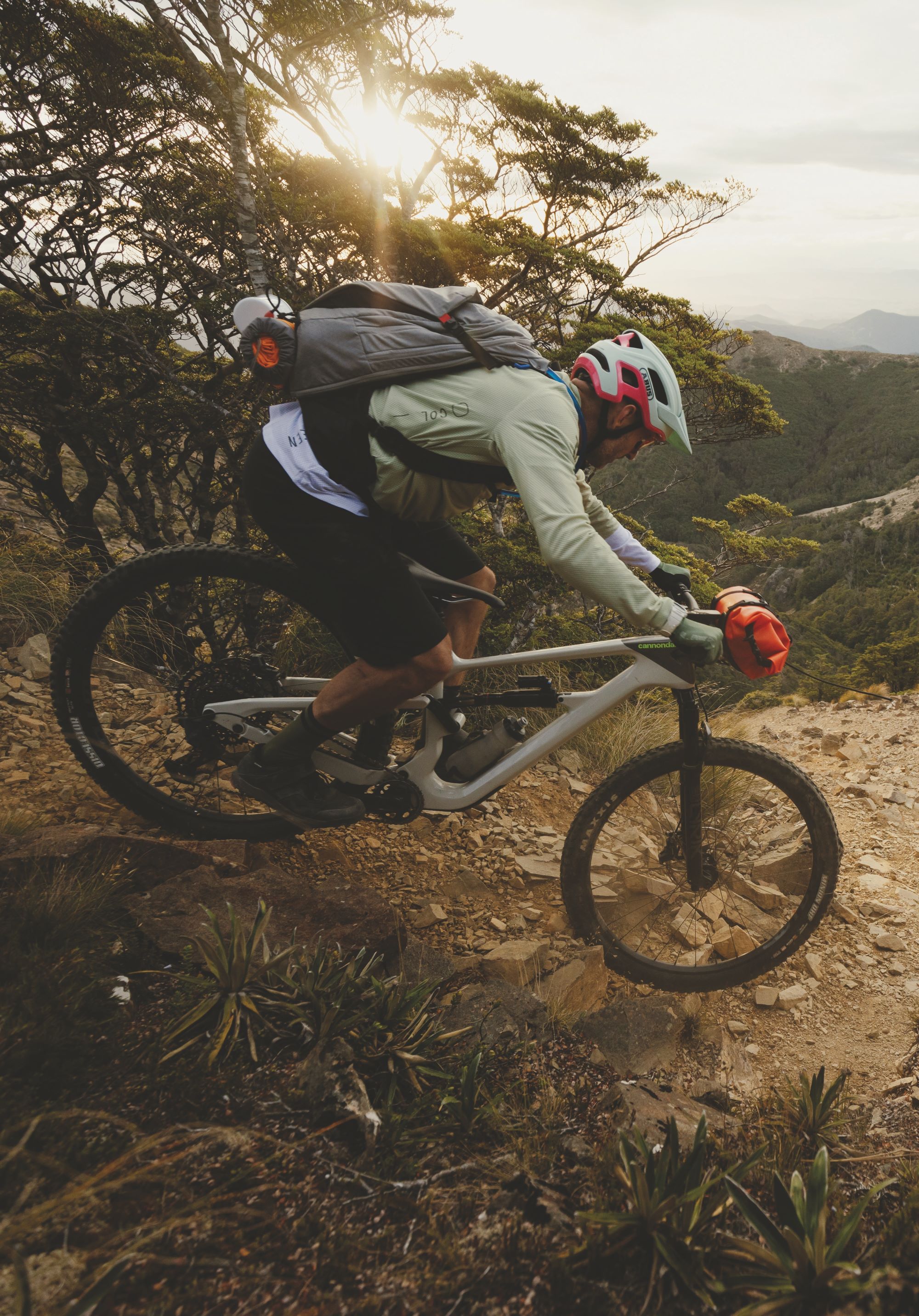
With its comfortable geometry, it’s a bike that you can easily manoeuvre around, or jump over whatever’s in front of you - think a paring knife as opposed to a meat cleaver; they both get a similar result but get there in distinctly different ways.
Cannondale has a somewhat chequered past in some respects, due to regularly adding proprietary technology or features on their bikes, which has ultimately put some riders off making the step onto the brand. It’s great to see nothing too out of the ordinary on the Habit LT line, just industry-standard sort of stuff. A threaded bottom bracket, 148 boost spaced rear end, and regular tub-in-tube internal routing for cables, no niggly headset routing or strange rear wheel offsets on this bike!
Five frame sizes are available, all with 29” wheels, aside from the XS with 27.5” wheels. It’s great to see some size-specific chain stay lengths across the sizes. Small and Medium share the same chain stay length, all other sizes are unique in length. Different length rear ends also mean size-specific rear shock and suspension kinematic tunes, keeping the bike optimised for the rider, however tall they maybe.
The head-angle sits at a conservative but precise 64.7° and the seat tube is an acceptably steep 77.1°(effective). Geometry that’s neither here nor there, but current, and nails the use case for the bike. The main frame has a single bottle cage mount on the downtube, and an accessory mount under the top tube. In the large frame I tested there was heaps of room for a full-size bottle in the front triangle – that’s a win in my book.
Cannondale designers have done a nice job of helping to keep the frame looking fresh long-term, and quiet to ride with well-thought-out rubber protection on the downtube, chain stay and seat stay. Strategically placed top tape keeps other key areas on the frame scuff-free. The addition of a rubber mudguard behind the bottom bracket, over the main pivot, keeps the area contaminant-free and helps with bearing longevity.
Spec-wise, we’re looking at some familiar, tried-and-true hardware on the Habit. A complete SRAM GX Groupset, there’s only one cable and it’s not an electronic one, a complete manual setup here. If you want to upgrade to the latest T-type transmission, there’s a UDH hanger on the frame to allow for that. The GX groupset in this most recent iteration has been around a few years now and it’s a workhorse on a lot of bikes of this level. No complaints here, it just needs the occasional tweak of cable tension, and a clean chain to maintain hassle-free performance.
SRAM’s Code R brakes, with a 203mm rotor up front and a 180mm out back, offer just enough power for this rig. I don’t think I’d manage with anything less on this bike. There’s plenty of adjustment on offer, so even the pickiest of fingers can find the perfect lever position. They’ve got a decent, solid feel at the lever and only on the longest descents I found a little fade in the rear, no doubt exacerbated by my rear-biased braking and that 180mm rotor, a 203 rotor on the back would be ideal.
The bike has a stable, planted feel on the trail, but still feels that there’s enough support to keep it playful and responsive rather than subdued and dull, allowing you to boost from trail features and not feel like you’re blowing through all the travel on landing.
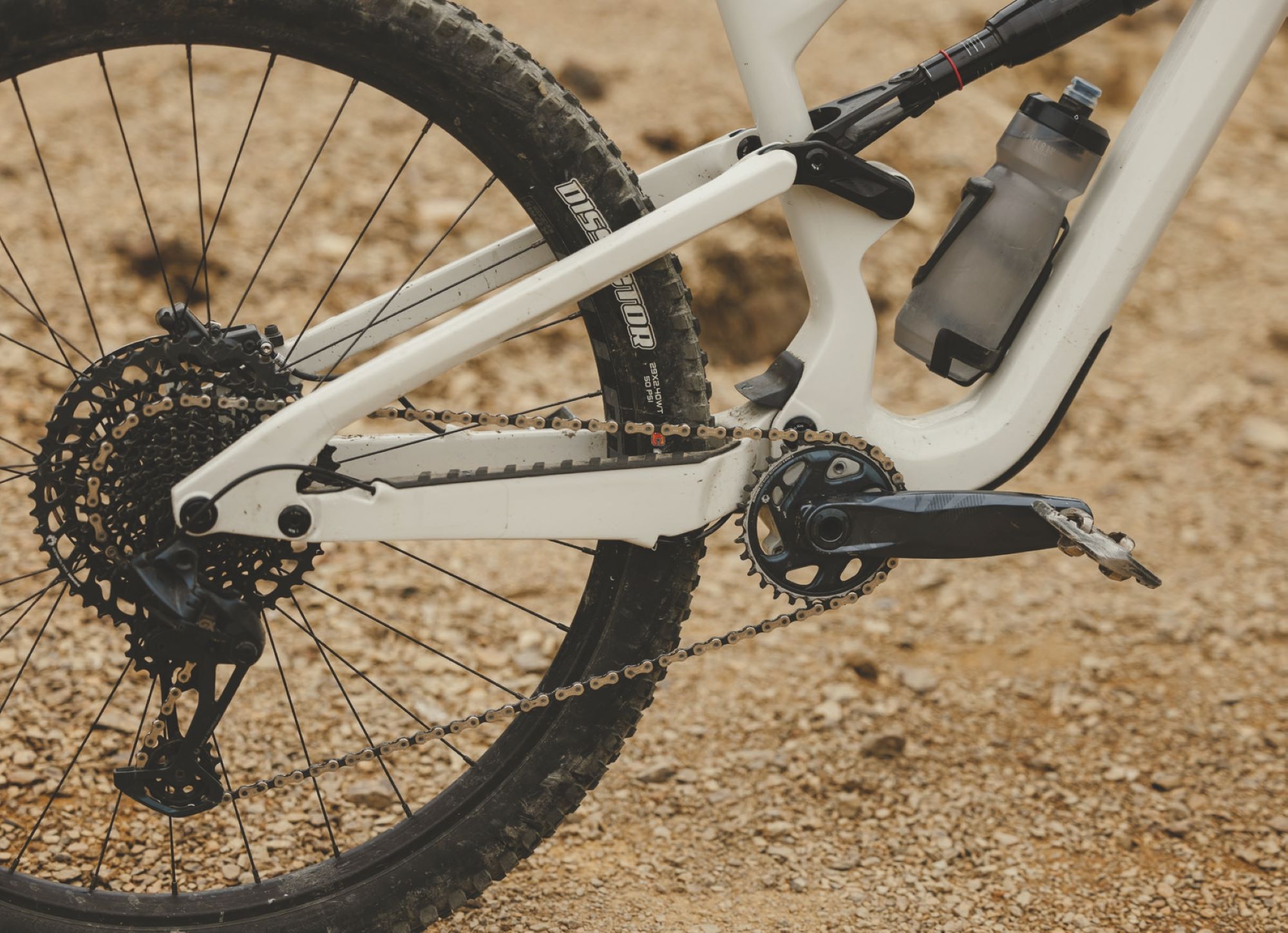
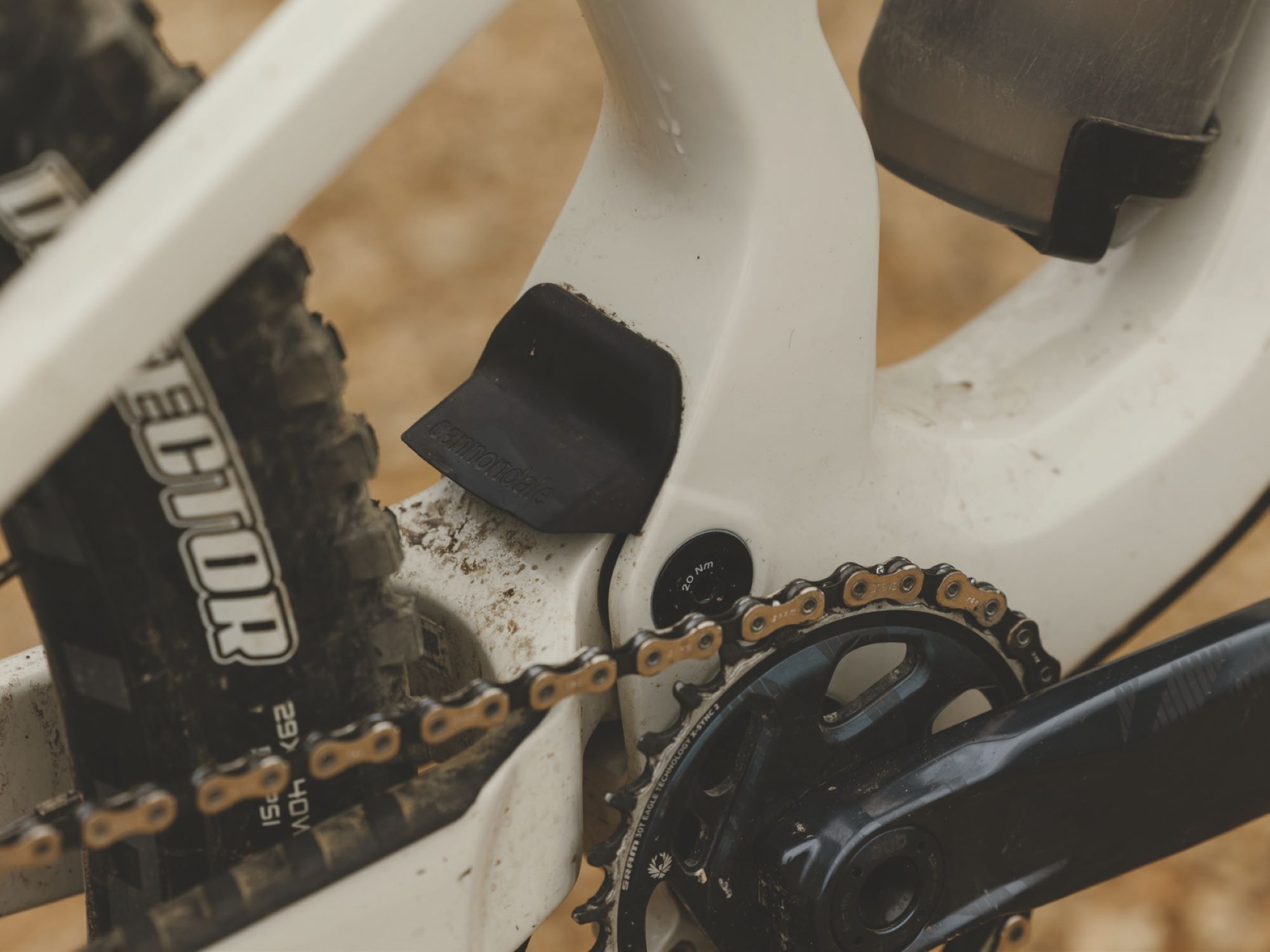
The cockpit and dropper post are taken care of by Cannondale in-house labels, while the grips and saddle are Fabric branded items. The dropper is 170mm and is nice and smooth – not a shotgun fast return but not so slow as to be an issue. The post doesn’t have the lowest stack height, but the length worked ok for me, although with a lower stack post, I’d comfortably go up to around a 190mm drop. Considering I’m right at the bottom of the height recommendation for the Large, I’d imagine the 170mm post won’t be ideal for those more towards the centre or top of the height chart. The seat tube on the Habit LT isn’t the shortest at 445mm, limiting the maximum drop possible on the bike. The dropper lever does its thing with no qualms, and is nice and smooth with a light action.
The HollowGram carbon bar is huge for a trail bike with a 30mm rise, and a full 780mm width – that’s a lot of height for a trail bike, especially one with such a large stack. Riders on the taller end of the spectrum will appreciate this much height, but as you’ll see further on, it was a slight niggle for me. The stem is also a Cannondale in-house number and comes in a nice new-school 40mm length.
The WTB KOM i30 TCS 32-hole wheels on proven DT Swiss 350 hubs have been trouble-free as expected. Not once have I had to pull out the spoke key to remedy a wobble after a cased gap or smashed root. There’s no need to discuss the hubs as it’s fair to say these beauties would see a tonne more riding before I’d even need to look at any bearings. A clean and lube of the freehub may have been necessary, had I been riding in the wet regularly – but over the review period, I touched the mud just a few times.
Shod with a pair of Maxxis tyres, there are no surprises here, or sidesteps needed from the stock spec: a Minion DHF 29×2.5” takes care of tracking up front, while highspeed rolling, but is sketchy in some conditions, with Dissector 29×2.5” features on the rear. It’s good to see Cannondale have the foresight to spec the EXO+ casing version of the tyres, no need for immediate off-the-floor upgrades if you’re an aggressive rider or live in a rocky area where you’ll appreciate the sturdier EXO+ casing over the often specced EXO. The Dissector is an acceptable summer option as a rear tyre, and great in conditions where it can cut in for some traction, but in loose or muddy surfaces it struggles for braking traction (the central knobs are quite low). The side knobs appear to lack support and fold over on the hardpack; great for squaring off berms or flicking a Scandi’ into a turn, but not so much for overall control – wear it out and replace it with a Minion DHR2, problem solved… although a little slower rolling.
Hanging off the front of the chassis is the supple and controlled (thanks to the new Charger 3 TC damper) ROCK SHOX Lyric Select + fork. I’ve been impressed by how good the fork is in all circumstances; high-speed chatter, no matter; big- hitting bangers, no biggie. A bit of experimenting with the high and low-speed compressions left me with the high-speed wide open and two clicks from fully open on the low speed; this seemed a decent setup for most conditions of trails I ride.
The rear end is damped with a ROCK SHOX Super Deluxe Select +. A visit to the ROCKSHOX TrailHead website for some baseline setup advice left me at a few hairs under 30% sag. I subtracted a couple of clicks from recommended on the rebound, speeding the back end up to just how I like it.
For sure I prefer the Habit LT’s active, supple suspension over a higher-anti squat and consequently more ‘locked out’ pedalling experience, particularly at this mid-travel level.
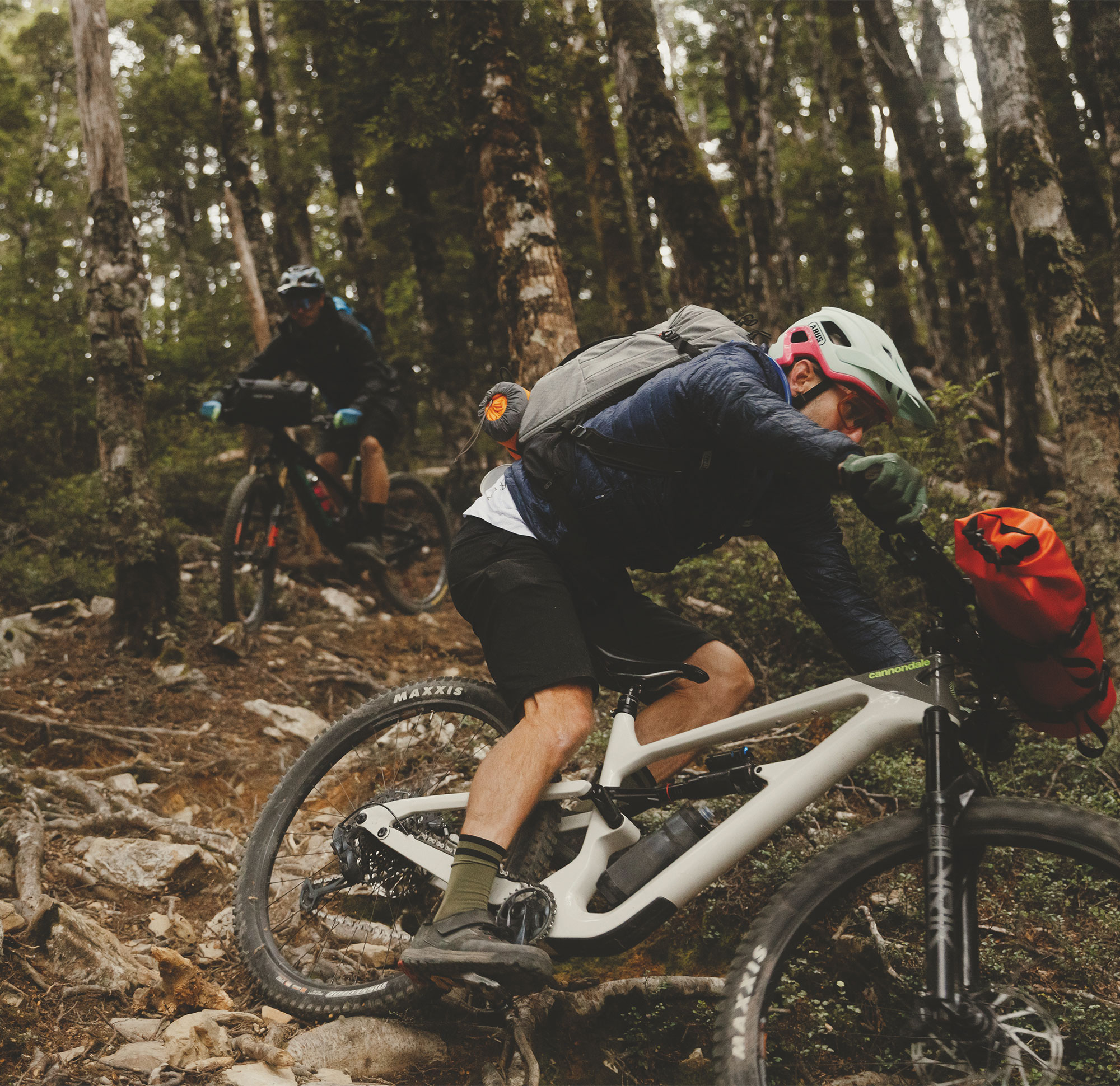
Once the suspension was dialled in, I took the bike for a quick ride and my first impression was that this bike is built for fun: poppy and playful. My second impression is how high the front end is. The large 644mm stack combined with the 30mm rise of the 800mm wide HollowGram SAVE handlebar made it super easy to chuck a sweet wheelie, or manual through a section, but on everything other than steep descents left me feeling disconnected from the front tyre. After some time with my trusty tape-measure, I landed on a 760mm wide, 15mm rise bar and a single 10mm spacer under the stem. Lowering the front made me feel more centred on the bike, with more weight over the front but still keeping the front end high enough for some aggressive riding. Once I got the front end to an acceptable level (for me), it unlocked the cornering of the bike and I felt comfy and at home. Swapping handlebars from new may be needed by some riders, but as bar height and width are certainly a personal preference it likely won’t be necessary for everyone, particularly if you’re on the taller side.
The rear suspension kinematic is linear through most of the travel, feeling consistent through most of the shock stroke and finishing with a steep ramp-up at the end of the travel, preventing harsh bottom-outs. The bike has a stable, planted feel on the trail, but still feels that there’s enough support to keep it playful and responsive rather than subdued and dull, allowing you to boost from trail features and not feel like you’re blowing through all the travel on landing.
Descending on the Habit LT is just plain fun. This isn’t a huge travel rig you can plough un- controlled into chunky rough sections, relying on huge travel and slack geometry to keep you out of trouble. With its comfortable geometry, it’s a bike that you can easily manoeuvre around, or jump over whatever’s in front of you though – think a paring knife as opposed to a meat cleaver; they both get a similar result but get there in distinctly different ways. Central rider weight keeps the bike planted, aiding traction and helping keep you very much under control. Multiple times I exited a trail surprised at how the bike handled some of the rowdier sections, particularly as it hasn’t got the longest travel, or most progressive geometry. On steep trails, with lots of large successive hits, the suspension stiffens up somewhat under the braking forces, causing the back end to feel quite harsh. Not a deal breaker, but more noticeable than some other bikes in this travel range and we’re not really riding that type of terrain often.
Low anti-squat means the rear suspension is still plenty active under pedalling, ideal for a bike aimed at descending fun, rather than pedalling prowess. Of course, this means it’s obviously very active on steep climbs, sagging into its travel and creating bob. I found this quite noticeable and was surprised by just how much it could sink into its travel on really steep uphill pitches. Fear not though; the lockout lever is within easy reach and very effective. I found most of the time I’d throw the lockout on for any extended, consistent climb but leave it open for anything resembling a technical climb as the extra traction it allowed was welcome. For sure I prefer the Habit LT’s active, supple suspension over a higher-anti squat and consequently more ‘locked out’ pedalling experience, particularly at this mid-travel level.
The bike tracks well across off-camber and through flat turns, partly due to the geometry putting rider weight centrally between the wheels, partly due to the supple suspension kinematic, but also because of the back end having a healthy amount of torsional compliance, aka flex. In recent years, designers have been moving away from the aim of having the stiffest bike, aiming for a perfectly tuned flex through the frame. If done effectively, a back end with more flex can also mean better tracking, assisting with overall rider confidence, and feel; I reckon the Habit LT nails this, whether that was the design team’s intention or not. This compliance means the Habit LT isn’t the spriteliest bike while sprinting, but it isn’t a cross-country bike either, so pedalling is secondary to overall roost-ability and fun.
Mellow trails (i.e. most of what we ride) are a blast on this bike; it picks up speed quickly, and jumping into sniper landings or pumping through sections gives a noticeable speed increase.
Cannondale reckons the ‘LT’ moniker stands for Long Travel, but I wonder if it really stands for, as the youth of today say: “Lit Time” (i.e. a “great time” to those of us who are slightly less youthful). Out of the box, as you’ve seen, there were a few things I wasn’t a fan of and, although they’re all personal preferences, they meant I needed to spend precious time getting to my optimal setup, this isn’t exactly a ‘get on and go’ bike. That said, once I got my setup dialled, this bike was awesome. It’s really changed my perspective on what bike I need as my ‘everyday ride’ and, with modern suspension, geometry and frame design, a shorter-travel bike like this can now be on par (or better) than a longer- legged bike from only a few years ago and make for an overall better experience, regardless of the few scenarios it’s not in its element.

KTM Macina Prowler Prestige & Exonic eMTB
Words Lester Perry
Images Bevan Cowan
RRP $23,499 – KTM Macina Prowler Exonic | $17,499 – KTM Macina Prowler Prestige
Distributor Electric Bikes NZ
Although the familiar orange logo is shared between the moto and bicycle brands, since 1991 they’ve been two completely separate entities after the company was split into four individual companies: motorcycles; engines; bicycles; and radiators, leaving the bicycle company standing on its own two feet under new ownership. Nowadays, the brand has a comprehensive range, from high-end eBikes to Tour de France road racing bikes and even kid’s offerings. Unfortunately, only selected models are available here in NZ.
Having seen KTM eBikes on international websites and under a few E-Enduro World Cup riders over recent years, when the opportunity came up to throw a leg over one I jumped at the chance. Then the opportunity to ride one bike turned into the opportunity to ride two levels of the same platform, a real back-to-back comparison to see the difference between two similar bikes with a $6000 price differential.
We put two bikes to the test, the Macina Prowler Prestige ($17,499RRP) and the Macina Prowler Exonic ($23,499RRP). The bikes share a premium price tag (granted, there’s a chasm between the two values), and both share the same frame, handlebars, stem and tyres, but everything else is distinctly different.
First off, both bikes are stunning to look at. There’s a nod to their moto roots with long travel suspension (170mm rear; 180mm front) chunky tyres, mullet wheel setup (29” front; 27.5” rear), and, of course, their Bosch drive units. Paint schemes are distinct: the Prestige in its platinum bronze matte, and the Exonic in a translucent orange and black. Both bikes look slick, but the Exonic takes the cake in the right light, layers of carbon are visible through the paint and the sunshine really makes it pop!
Frame
Featuring a carbon front end, the lines are clean and lead the eyes back to the aluminium 650b/27.5” specific back end. There are bosses and space for a bottle in the front triangle – great! The frame features headset-routed cables and, being an eBike, there are a few tucked in there.
It’s a nice change to have the cables tucked out of sight instead of the commonly seen bird’s nest of cables some eBikes have. Headset routing of cables is a pretty polarising topic, although with so much going on with the bike in terms of cables, controllers, drive units, battery etc, this is not a cause for concern in my book as there’s lots going on elsewhere on the bikes, too.
The battery can be removed through the hatch along the top side of the downtube. It’s a slick operation, but if there’s a bottle cage mounted it could be fiddly as space will be limited to manoeuvre the hatch lid off.
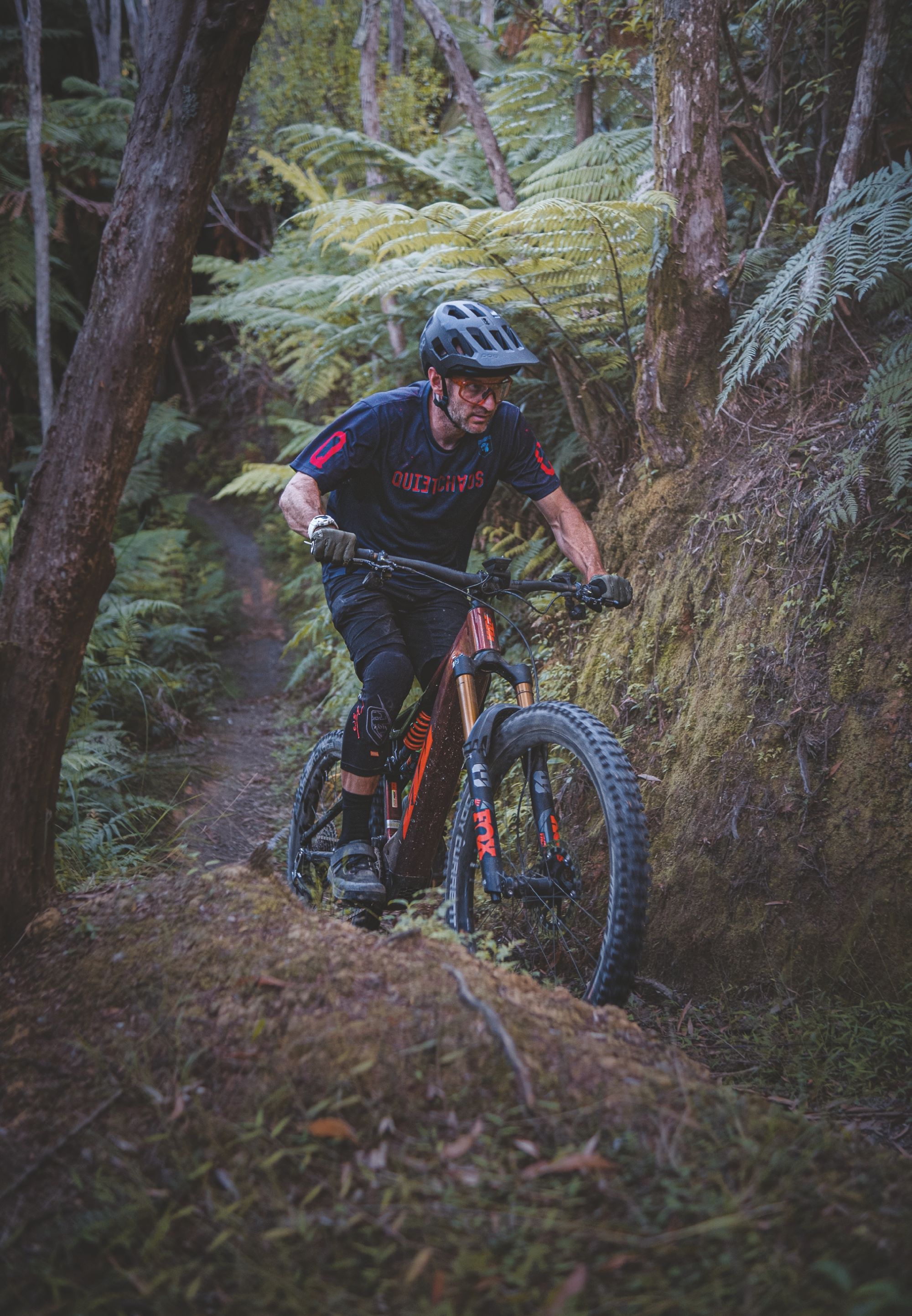
Both bikes look slick, but the Exonic takes the cake in the right light, layers of carbon are visible through the paint and the sunshine really makes it pop!
Drive Units
Bosch has cemented itself as one of the top-performing drive units for the eMTB segment, and both our test bikes feature top-level units from the German powerhouse. The Prestige features the tried-and-true Performance CX Gen 4 motor, delivering 85nM of torque through its assistance levels; Eco, Tour+, eMTB and Turbo modes. Maximum assistance is 340% in Turbo mode.
Exonic-level bikes get the CX’s newer, more brutish sibling – the Performance CX Race – it’s about 150 grams lighter than its little brother and can deliver its power faster for less effort, getting you up to speed just a fraction quicker. It can crank out 600 Watts peak power – the same as CX but with up to 400% maximum assistance – in its Race mode. The Race motor shares the same lower three assistance modes as the CX, but trades Turbo for the full gas Race mode. The CX-level motor is great for a bike like this, but the Race motor is both figuratively and literally next level. I found I had to be on my toes when riding in Race mode; if I wasn’t taking notice or weighting the bike quite right, particularly while tackling a steep pinch, the power could easily spit me off the bike. The Bosch Flow app allows some customisation for how the power is delivered across assistance levels, and given some more time I might have tweaked the setup to not be quite so peppy.
It’s great to see the drive units specced with 160mm length cranks, anything longer on an eMtb is too long in my book! Prestige bikes get solid-looking alloy KTM E-TRAIL cranks, and Exonic bikes step up a notch to a swanky FSA CK-702/IS Carbon crankset – very nice indeed. Out on the trail, there’s no discernible difference, but I’d imagine the carbon cranks of the Exonic would be marginally lighter.
An often-overlooked feature both motors share is the Extended Boost. When in eMTB or Race mode (where applicable), the motor continues to run on slightly after coming off the pedal power, continuing to deliver drive for a split second longer. This helps keep a consistent delivery of power, regardless of how bad your pedal stroke is, or having to stop pedalling to get through a technical section – think, a quick pause or half pedal kick while climbing a technical section to avoid clipping a pedal. The CX motor has the same feature, but the Race motor takes it up a notch giving a bit more of a kick. A subtle feature that I really dig.
Both systems share a 750w/h battery, offering riders great range. Of course, this also comes with a bit of a weight penalty over smaller batteries, but is well worth it in my book.
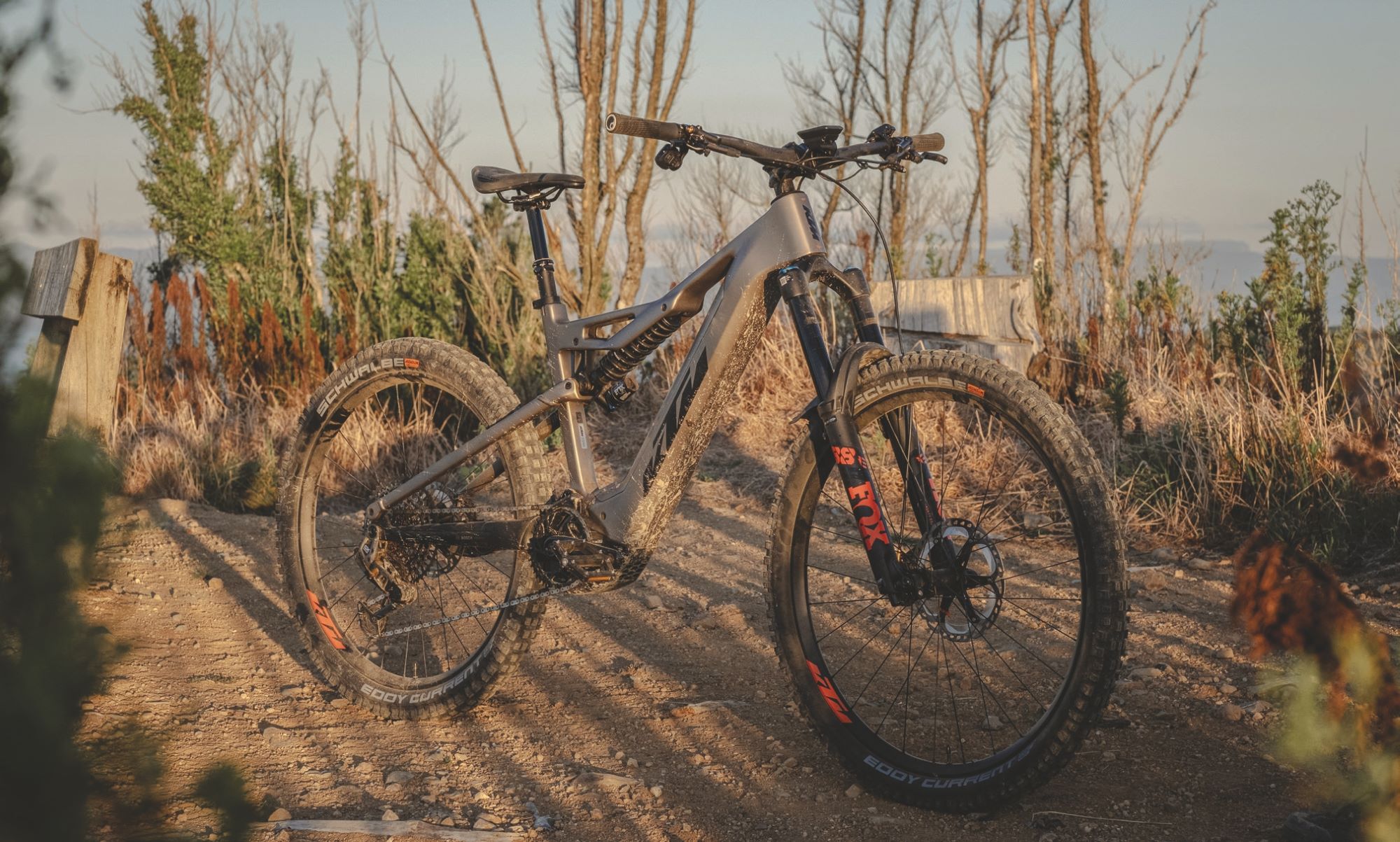
The back end of both bikes perform equally well, with a good amount of support on offer and, even on the heaviest of flat landings, there’s no feeling of a harsh bottom out.
Suspension
The Prestige features a 180mm FOX 38 Float 29” Performance eBike edition fork – simple and effective; while the Exonic runs a 180mm FOX 38 Factory Float FIT4 Kashima eBike edition. The Exonic gets the premium gold Kashima coating on its Factory stanchions, as well as dials for a 3-level compression adjustment: Open mode compression adjustment and obligatory Rebound Damping dial.
Although the Prestige’s Performance Elite fork simply has a compression lever with three positions, and a rebound dial, it’s still a top performer and is honestly so simple you can just jump on it and go – sometimes the extra adjustability of a fork like the Factory Fit4 can take a bit more effort to set up properly. Both forks are fitted with the sweet Fox-specific bolt on the mud-guard. Between the two bikes, I really like the simplicity of the Performance Elite fork – just dial in the air pressure, hop on and ride! Out the back, we find the FOX DHX2 Factory 2Position coil-sprung damper on the Exonic, and a FOX DHX2 Performance Elite 2-Position on the Prestige. Both shocks are a great option for a bike like this.Providing an exceptionally plush 170mm of rear wheel travel, the Factory level shock has just a little more of a buttery feel thanks to its Kashima coating. With high- and low-speed adjustments on compression, and rebound on both shocks, there’s plenty to twiddle with. Both shocks also have a lever to firm up the compression which, once flicked, calms the shock down while climbing. It’s not a lockout as such, but does heavily damp the compression of the shocks. I’m not entirely sure the nuances of the tuning will be that noticeable when you take into account the large tyres and the weight of the bike; some adjustment is good, but more doesn’t mean ‘better’ in all cases. Although, if you’re keen on a bit of tuning – and happy to spend the time – the results should be stellar.
The back end of both bikes perform equally well, with a good amount of support on offer and, even on the heaviest of flat landings, there’s no feeling of a harsh bottom out. Being coil-sprung, the back end is far more supple than a more commonly found air shock and thus tracks super well, keeping the wheel glued to the ground and holding its line across rough terrain. Between the two shocks, the difference when out riding is negligible and, if blindfolded, I doubt anyone could feel the difference between the two models. Depending on rider weight and preferred rear suspension feel, it’s likely a different spring may need to be fitted to achieve optimal performance – not quite as easy as just whipping out a shock pump.
Drivetrain
KTM knocked it out of the park when selecting drivetrains for these bikes. The Exonic gets a top shelf SRAM AXS XX T-type derailleur, chain and cassette. On the Prestige, we get the SRAM GX AXS T-type derailleur, chain and cassette. Both these drivetrains are ideal for an eBike; with their pin-point precision and ability to shift under power, nothing comes close to how positive they feel out on the trail and I’ve been happily snapping through gears whenever I felt the need. Handily, both bike’s derailleurs are powered by the bike’s battery, rather than the normal AXS batteries. The downside is, if the bike isn’t turned on the gears won’t shift, so should something go drastically wrong, you’ll be single-speeding home. The gear range is ample; there’s no need for any lower gears, and there are more high ratios than anyone would ever need, particularly as pedalling any faster than the 32km assistance limit is a total chore and this limit is met with two to three gears remaining, depending on your cadence.
Dropper Posts
A 150mm dropper post on a Large bike? You read that correctly. Both bikes have a 150mm dropper fitted. The Exonic gets the slick RockShox Reverb AXS, and the Prestige – a FOX Transfer Performance level post. Both are great units, the Reverb AXS gets my vote between the two, with its AXS button actuator mirroring the AXS XX shifter pod. A click of a button makes it all very easy to use. A tall rider will likely want to put a longer drop post on the bikes, but for shorter-legged riders like myself, options will be limited by the frame’s 450mm seat tube length. I found this a bit of a pain, as I’d really like a 170mm drop at least and may struggle to find one to nail my optimal saddle height without interference from the frame’s seat tube.
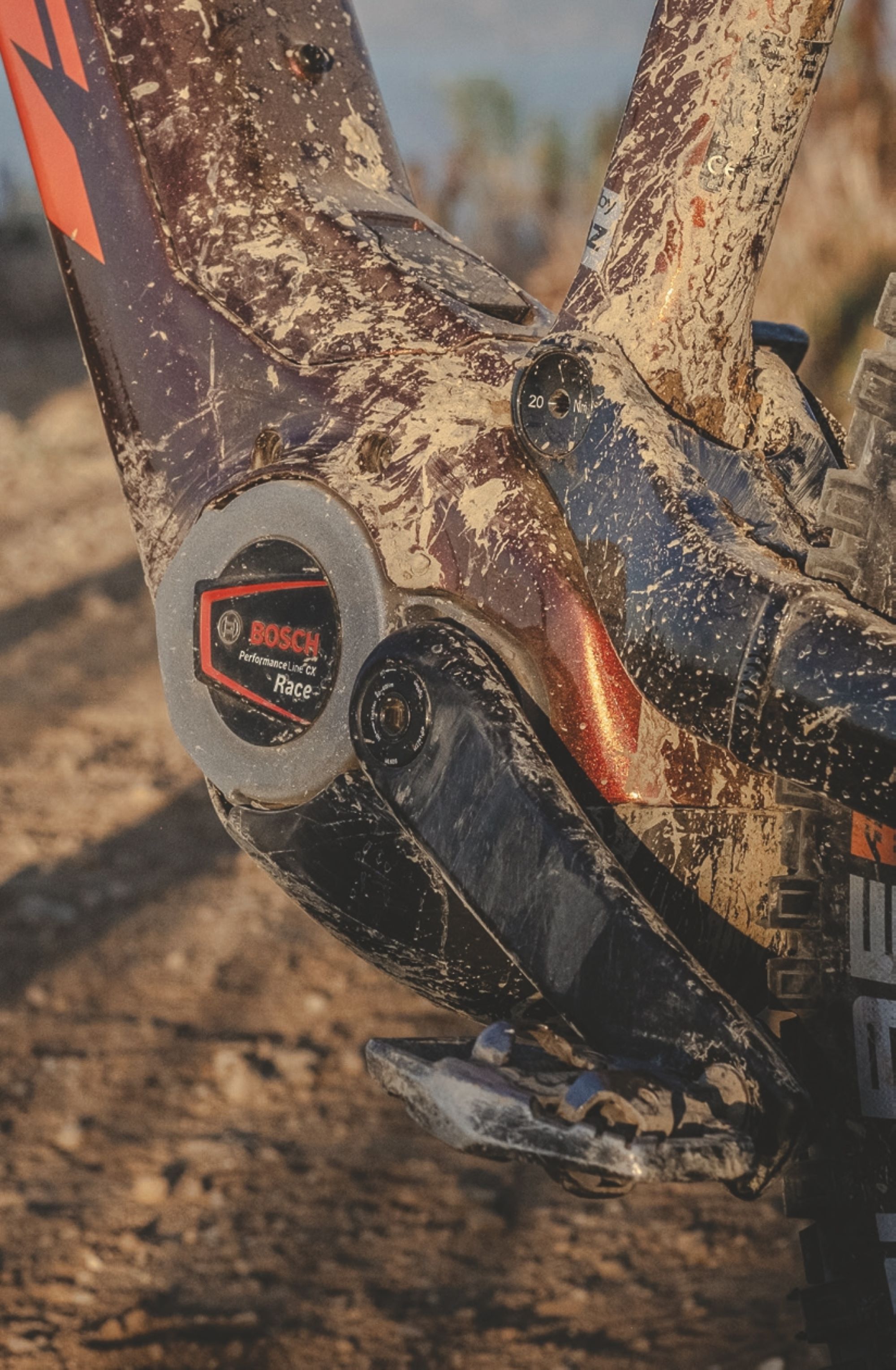
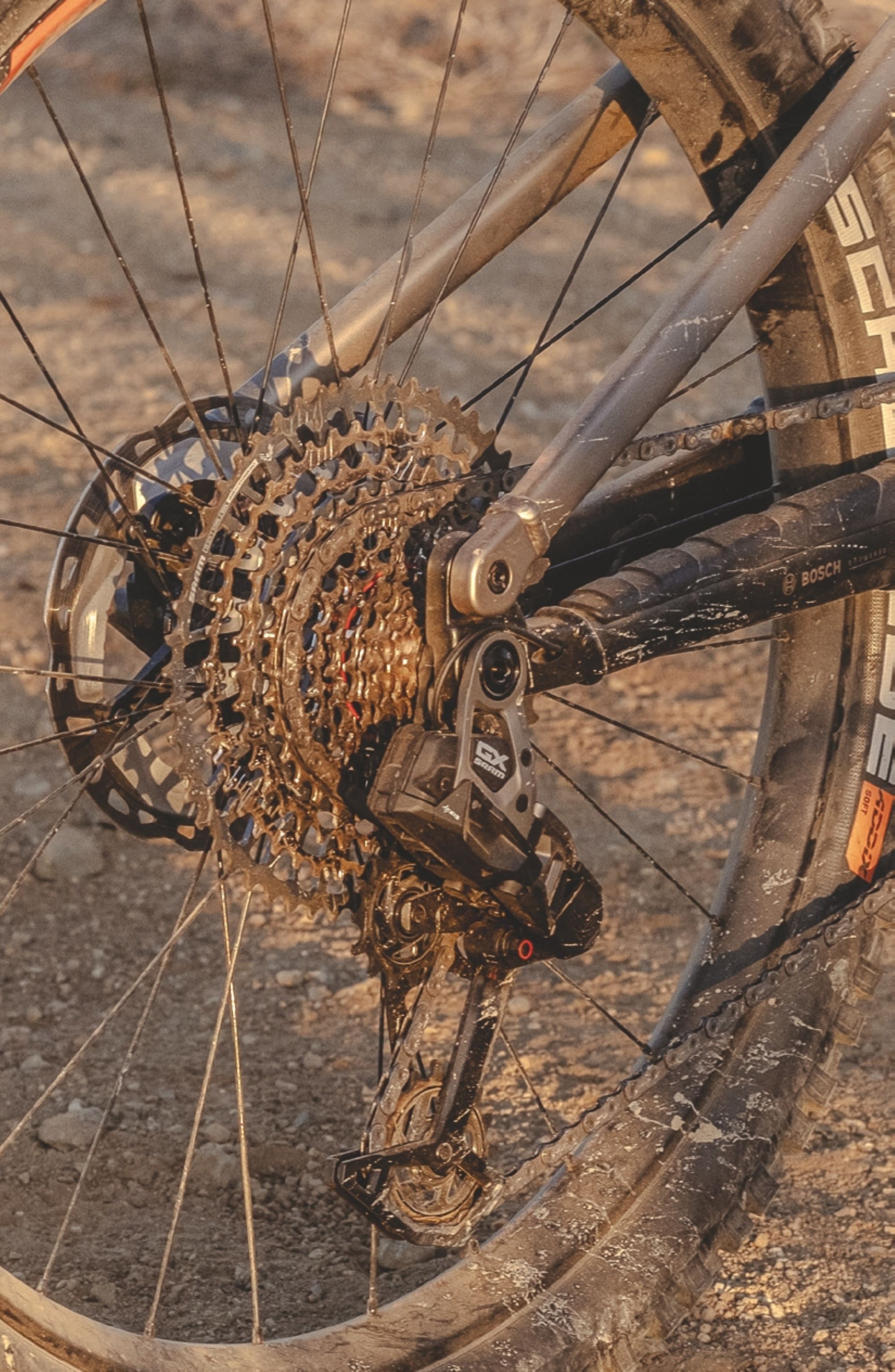
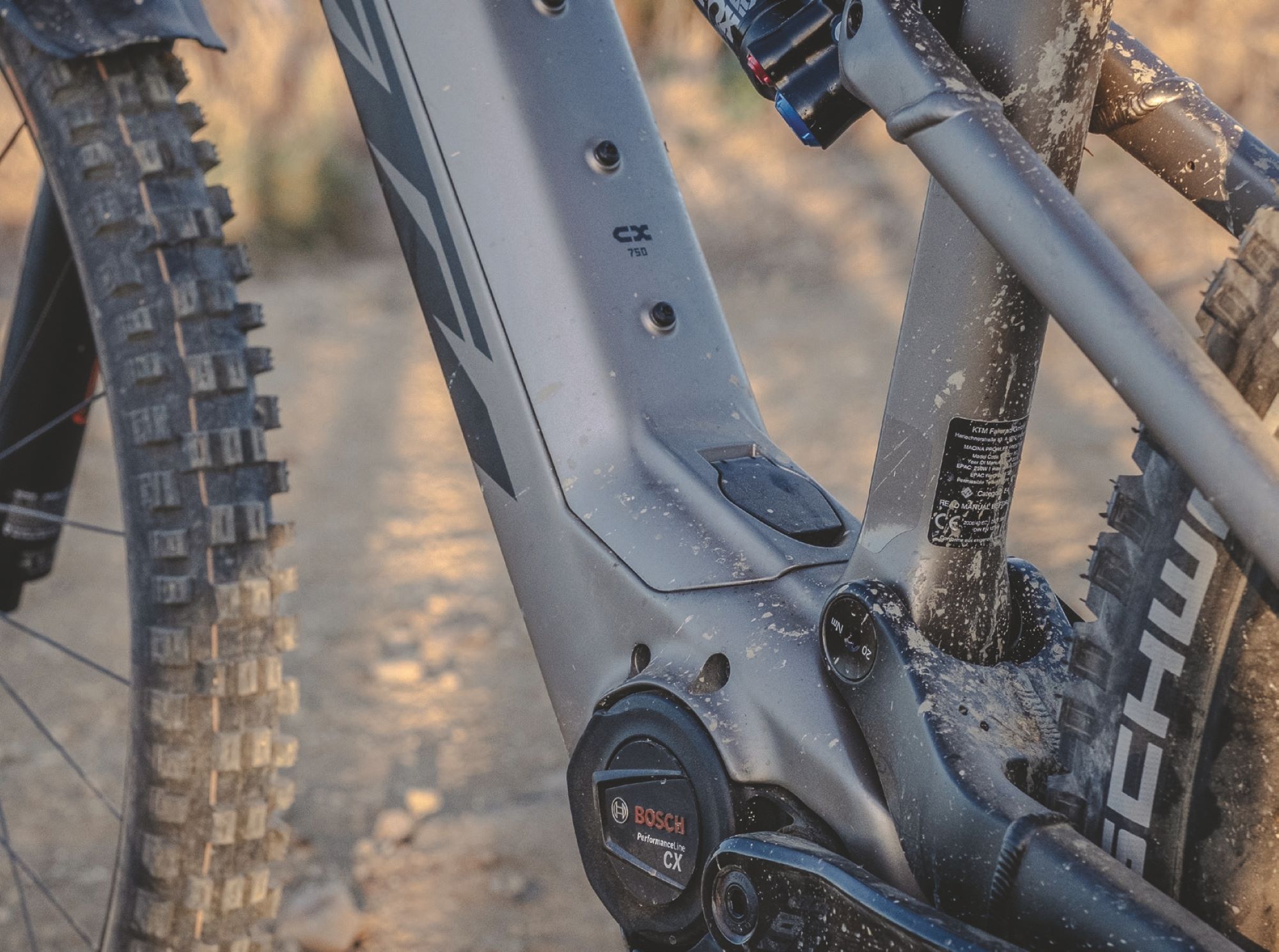
Overall, the bikes excel on flatter terrain; shining on slower, technical trails more than wide open, fast and chunky steeps.
Wheels
Wheels on eMTB are generally not something to sing about but, in this case, we see a couple of solid and distinctly different options. The Prestige has a pair of KTM E-Team Trail rims (made by DT-Swiss – and they appear to be the same as one of their downhill models) on DT 350 Hybrid hubs. The Exonic gets a pair of very swanky, carbon DT Swiss HXC 1501 SPLINE rims on DT 240 Hybrid hubs. Both wheelsets are very stout and, as you’d expect, the Aluminium rim of the Prestige gives a bit more forgiveness. But, with its faster-engaging rear hub, stiffness, weight, and overall swag-factor, the Exonic’s carbon wheelset gets my tick. The only question mark is, being carbon, does the longevity of the rims come into question – particularly if you love bashing rocks? Fortunately, DT Swiss has a good warranty policy!
Brakes
The combined weight of an eMTB and its pilot travelling at speed is a lot to slow down. KTM have specced great brakes on both bikes, but a bit of an oversight sees them both let down in the braking department. Prestige has the tried-and-true Shimano Saint 4-piston downhill brakes; they bed in quickly and offer consistent power and performance. The Exonic level gets a set of Magura MT7 HC3 4-piston brakes; they have great adjustment and, once set up, they feel nice, solid and consistent; the levers feel comfortable and ergonomic once the multiple adjustments are dialled in. Both bikes get a 203mm rotor up front which is great and offers enough bite and overall power for any scenario. Unfortunately, both bikes have just a 180mm rear rotor, simply not enough to effectively slow the momentum of bike and rider. During long steep descents the rotor overheated and the brake just lost power.
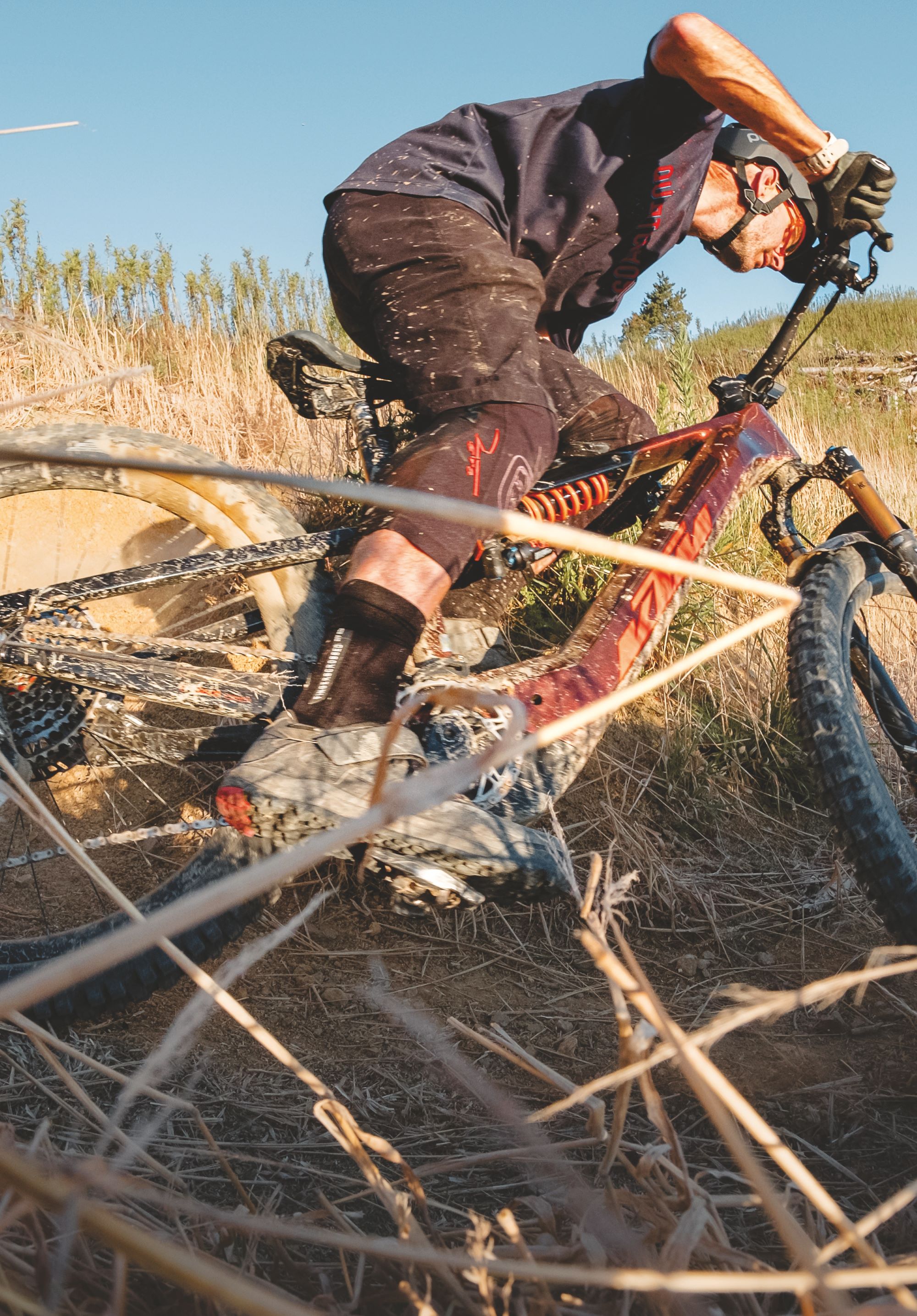
Geometry and Handling
The head angle sits at 64.1 degrees, pretty normal for a bike with 150mm of travel. The upside of this is it keeps the bike nimble in most scenarios, even on mellow or flat trails. The bikes climb well, their shorter reach and comparatively long stem (50mm) help keep weight on the front and keep the wheel on the ground.
Thanks to a high anti-squat, the bike sits up in its travel while climbing steep sections. In scenarios like this, when there’s high torque through the drivetrain, a lower anti-squat would see the suspension being sucked into its travel – not something to worry about on these bikes though. Once accustomed to the weight, jumping the bikes was fun and you’re able to use a bit of body language to float sizable jumps and make sure of smooth landings. Nothing strange stood out while hitting take-offs, but it does take a little to adapt to the weight.
Overall, the bikes excel on flatter terrain; shining on slower, technical trails more than wide open, fast and chunky steeps. I found the bike easy to corner and quick to change direction, thanks to its short wheelbase and mullet wheels; but on steep, rugged trails, I couldn’t get confident – likely a combination of the underpowered rear brake, short reach and longer stem than I’m used to.
Overall Thoughts
“A mixed bag” is how I’d sum up the Macina Prowler Prestige and Macina Prowler Exonic bikes. Outside of a couple of minor things, the component package on both bikes is solid. It does feel a little like KTM has taken the geometry of a shorter travel eBike, aimed at trail riding, and stretched the travel out to that of a heavy-hitting all-mountain bike. A bike with 170/180mm of travel would normally have longer, slacker and lower geometry than we see here. The downside is that a bike with that geometry wouldn’t be as good as the Prowlers are on mellower trails, or for ‘touring’ style riding where there’s as much climbing and flat as descending. So, where does that leave us? These bikes are perfect on what I’d call the ’middle ground’ of trails: not the flat, smooth trails of one end of the bell curve, or the steep, rough technical trails at the other end of the scale, but right in the middle; the riding a majority of us spend most of our time doing, pure trail riding. Rolling trails, some technical, some rough – but not extreme.
If money was no object and I wanted a top specced, high end eMTB with the best drive nit money can buy, then I’d jump on the Exonic. If my budget couldn’t quite stretch that far then the Prestige bike is an exceptional alternative.

Trek Fuel EXe 8 GX AXS T-Type
Words Georgia Petrie
Images Cameron Mackenzie
RRP $12,499
Distributor Trek NZ
The past two years have been abuzz with exciting product launches for the superlight (SL) eBike nerds among us. Between the likes of Transition, Orbea, Specialized and more recently, Santacruz, the lightweight eMTB market is now a smorgasbord of “too light to be true” offerings. And, with each new bike launch, the discreetness of the “e” factor across the market blurs the line between acoustic and electric even more. Motors and batteries are becoming more compact whilst, simultaneously, the power, torque and range abilities are increasing exponentially, to the point the reliability of my once sharp “eMTB radar” is becoming a little questionable.
Trek’s Fuel EXe takes ’stealth’ to a new level and their alloy offerings combine budget and performance to create an economical yet hard-hitting package that will tempt the appetites of even the purest acoustic bike riders out there – you might want to unblock your ears for this one!
With a chassis deriving from the popular and proven Fuel EX, the Fuel EXe electrifies it’s do-it-all acoustic counterpart, giving riders the ability to do more: turn your post-work lap into two, remove the “dread” from climbs, and descend without the clumsiness of traditional full power offerings. Sporting 150mm front and 140mm rear travel, the bike is a capable descender that’s isn’t afraid of tackling jumps, drops and steep grade five descents far above its paygrade, whilst maintaining nimble-ness at its core. It’s a comfortable, versatile all-rounder that’ll leave you wanting more – and with a punchy 360Wh battery and 50Nm torque motor to boot, why not?!
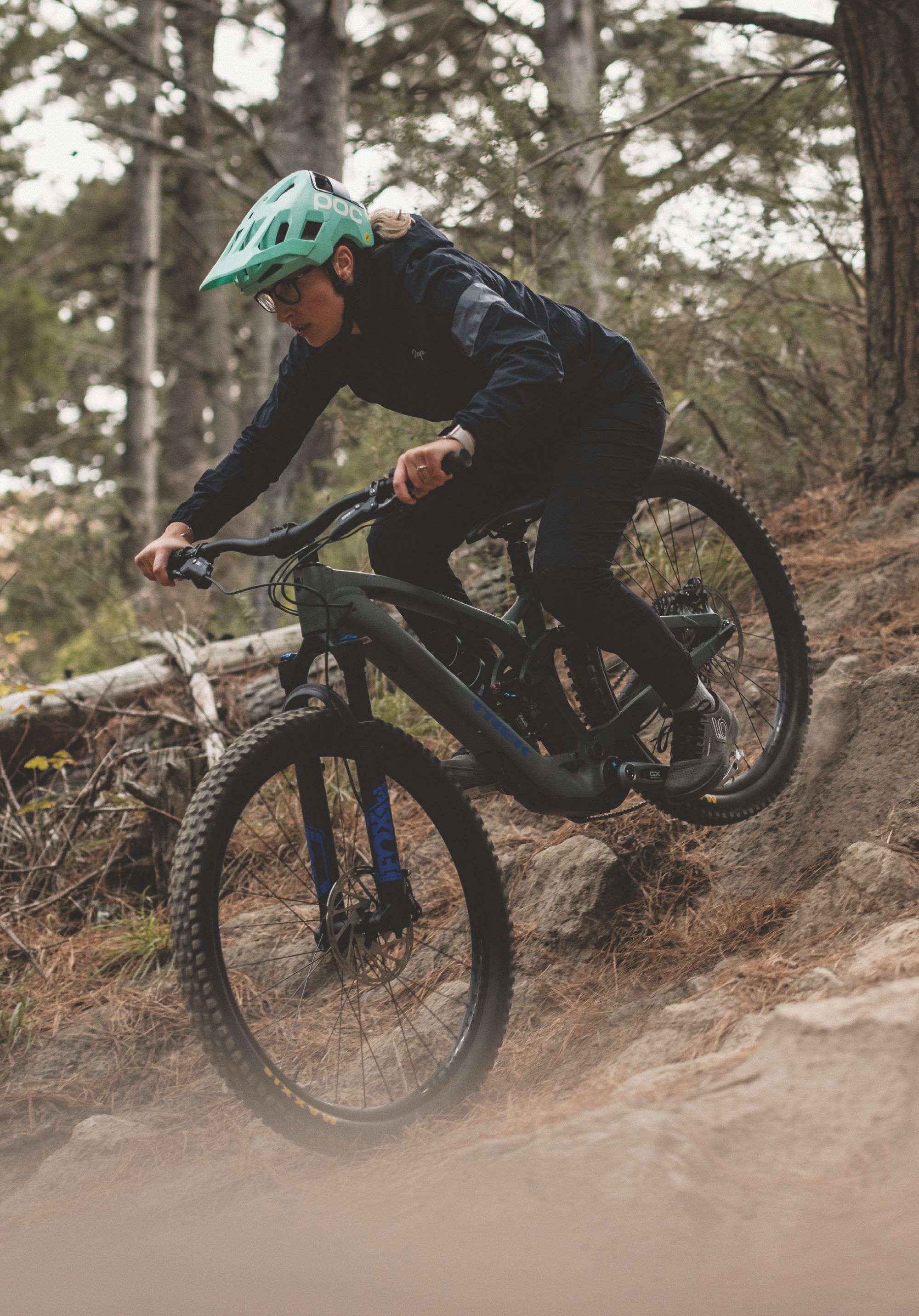
Power is delivered smoothly and naturally – there’s no sudden jerk forward when the assistance kicks in, and it really does feel like you’re just riding a non-powered bike with a little pat on the back for some extra help.
eBike Features
The Fuel EXe is powered by the TQ-HPR50 motor, which has made quite the name for itself within the lightweight eMTB segment, sported by the likes of Mondraker, BMC, Cube and Unno to name a few. Producing 50Nm of torque and 300-watt peak power combined with a 360Wh battery, the TQ-HPR50 is a punchy package – enough grunt to get you up nasty climbs, and enough battery for a decent after-work pedal and then some. Comparatively speaking, these numbers reflect a blend of those seen on competing lightweight offerings. The torque output mirrors the Specialized Levo SL Gen 2 but the Fuel EXE has a slightly higher battery capacity, while the Shimano EP8-RS seen on the Orbea Rise matches the Fuel EXe in battery capacity, but sports slightly higher torque at 60nm.
It’s little wonder the Fuel EXe masks its eBike nature so well, the battery and motor weigh in at just 1.85kg and 1.83kg respectively – our EXe 8 GX AXS T-Type review model weighs in at 20.25kg/44.65lbs, which is very respectable given the bike’s alloy frame, budget friendly componentry and removable battery. Riders can also purchase a 160wh range extender that sits discreetly in the bottle cage, providing an extra one to two hours of juice for only 950 extra grams of weight.
Adding to the sleekness is the TQ display that’s cleanly integrated into the top tube, which can be adjusted to display your preferred units. This is paired with a simple three button handlebar mounted remote, used to toggle between the bike’s three primary modes – Eco, Mid, High and Walk. The max power, assist level and pedal response for each mode (except for Walk) can be tuned using Trek’s Central app, where you can also track ride statistics, activity and even get recommendations on tyre and suspension pressure.
Out of the box, I felt the stock motor tune provided not only efficient, but natural assistance. Having ridden a range of different lightweight and full power eBikes, a key learning I’ve encountered is that whilst two motors might have largely similar numbers on paper, when it comes to power, it’s how that power is delivered that truly differentiates the experiences across the SL offerings. The TQ-HPR50 delivers power instantly but smoothly – instead of the bike jerking forwards with each pedal stroke, it provides a gradual increase in power that’s akin to someone giving you a light push on the back.
It’s also by far the quietest motor I’ve ridden to date, delivering power almost silently and descending with equal quietness – whilst it doesn’t bother me, I’m certainly aware that the decibel level of a motor is quite contentious a topic for some SL shoppers, so this is great news for those not so keen on listening to their bike whirr away whilst pedaling.
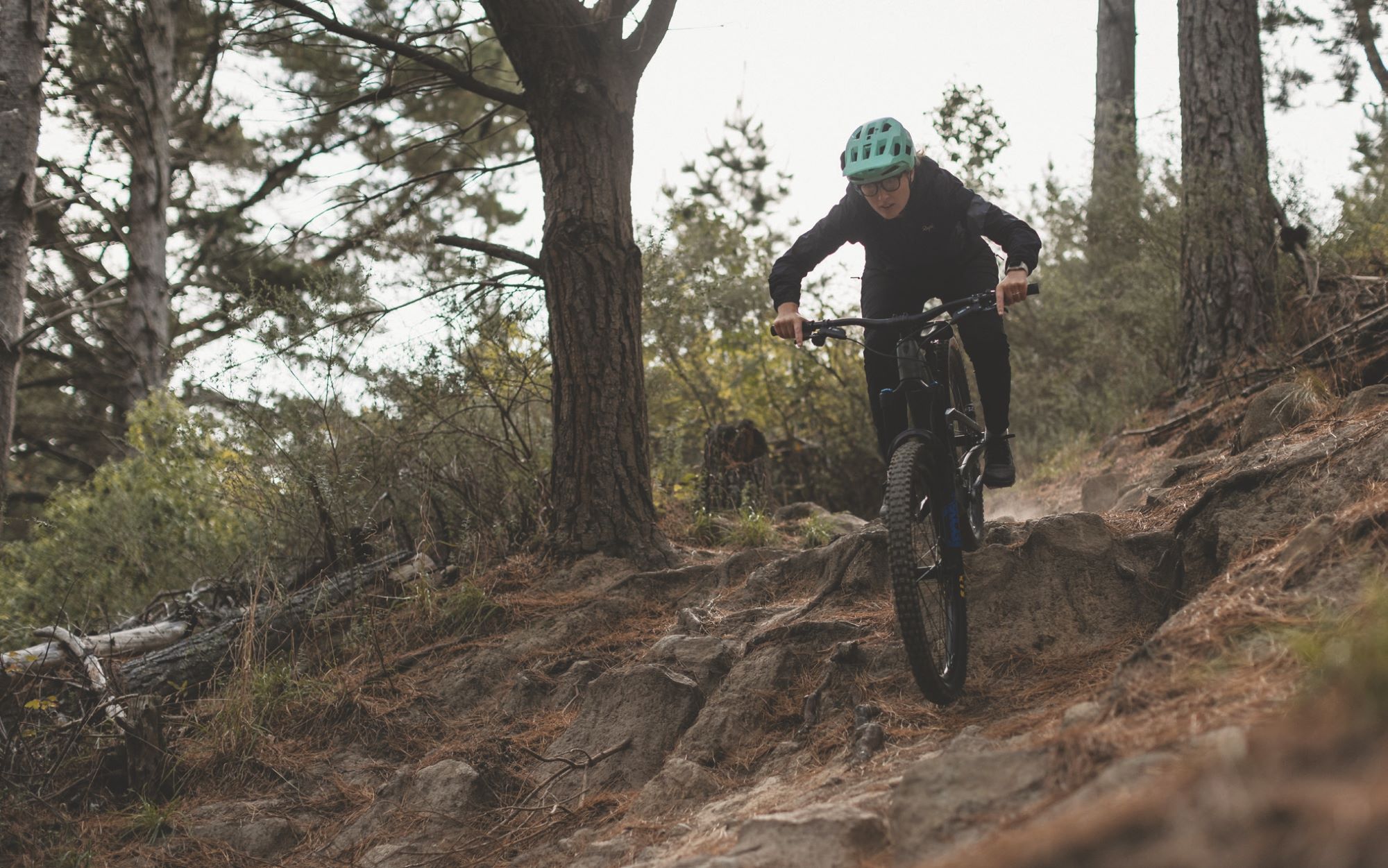
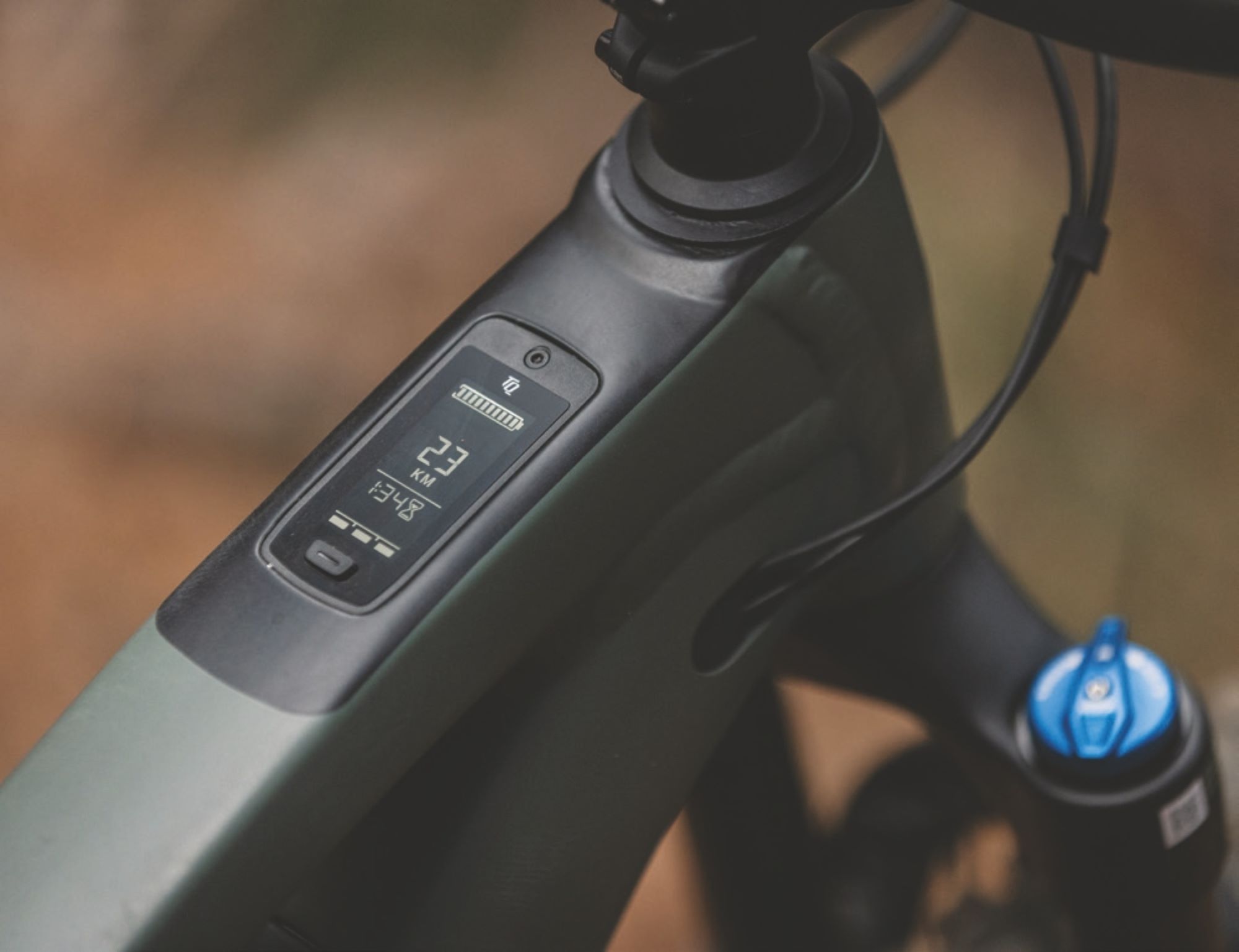
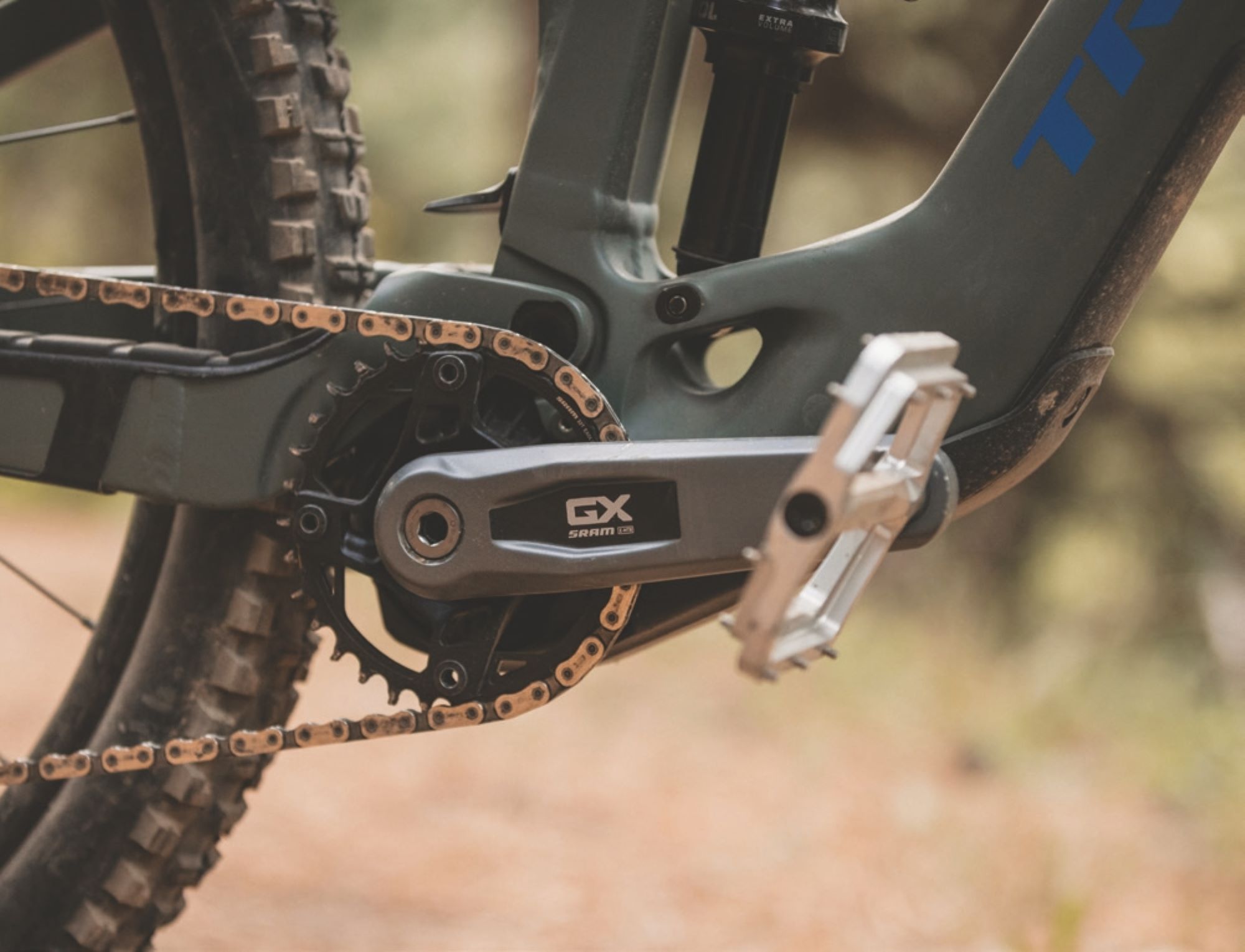
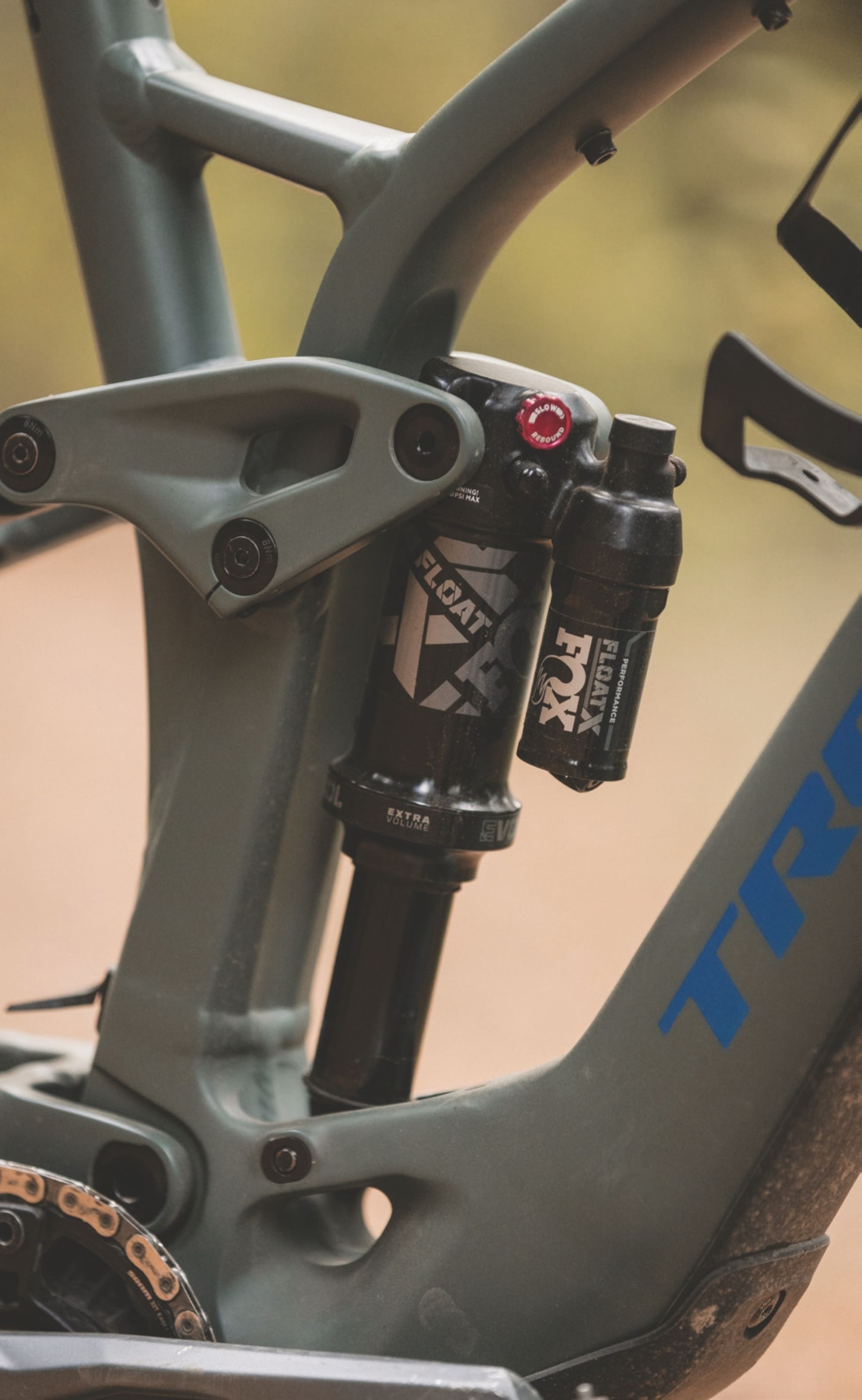
I was highly impressed with the bike’s performance tackling chundery roots and rock gardens, drops and jumps – you’d be forgiven for thinking the bike has 10mm more travel than it really does.
Geometry
The Fuel EXe sports do-it-all geometry that’s “just right” – an aggressive enough 65.3° head angle meaning it doesn’t shy away from steep, technical trails, paired with a 1216mm wheelbase that plants the bike nicely on rough, open terrain, particularly in combination with the damped feeling of the alloy frame. At 77.3°, the seat angle is a welcome addition on a bike that sits in the SL market – this is a touch steeper than competitors such as the Levo SL (75.8°) and Orbea Rise (76.5°), making it a comfortable all-day climber and enabling the front end to remain planted on steeper ascents.
With a wheelbase of 1216mm, the Fuel EXe evokes a sense of stability on wide-open descents – you’ll struggle to feel unstable on this bike or hit the point of ’wobbliness’ that can occasionally be felt on mid-travel range bikes. Paired with a reach of 459mm, the overall size of the bike does feel slightly on the big side relative to other SL offerings, and if you’re in-between sizes, I’d highly recommend swinging a leg over one first. I felt that these characteristics didn’t penalize the bike’s performance, in fact I quite enjoyed the stability and planted feeling that came with the slightly longer bike – overall it felt really balanced and was a confident descender.
Climbing
Now for the nitty gritty stuff – ride performance. Having ridden a range of SL and full powered eMTBs, I was beyond excited to swing a leg over the Fuel EXe – living in Christchurch, we’re fortunate enough to have access to the steeps of Victoria Park, the wide-open flow trails of the Christchurch Adventure Park and the backs and beyond of Craigieburn – an eMTBer’s paradise!
When it comes to overall riding position, Trek have created an excellent balance between a tackle- anything descender, and a comfortable all-day peddler. The steep 77.3° seat angle seats you comfortably, upright and over the bike’s front – you aren’t fighting to keep the front wheel down on steep pitches and it’s extremely comfortable spinning up gradual climbs. The long wheelbase made it a little cumbersome on tight corners – I needed to be quite careful when entering corners and target my lines carefully on technical ascents to ensure I didn’t get too hung up in tight spots. There were a couple of instances where I couldn’t quite make it up the technical switchbacks of my local climb trail – a combination of wheelbase and motor power. I also struggled to get the 150mm Bontranger Line dropper post high enough – if you’re a longer limbed person like me, you may find this a little short, particularly when paired with the bike’s short 73.3mm standover height.
The TQ motor had a unique power delivery relative to other SL motors, such as Shimano’s EP8 or Specialized’s 1.2. Power is delivered smoothly and naturally – there’s no sudden jerk forward when the assistance kicks in, and it really does feel like you’re just riding a non-powered bike with a little pat on the back for some extra help. An interesting observation was that this bike requires quite a high and specific cadence point to generate optimal assistance from the motor – there were a few occasions on steeper climbs where I felt myself having to spin pretty hard to maintain optimal power delivery.
Additionally, whilst the Fuel EXe sports comparatively higher battery numbers than its competitors, the way that power is delivered seems to draw from the battery slightly more than other SL motors I’ve sampled – I ended up with 10% less range on one of my favorite one hour eBike loops than the likes of the Orbea Rise and Levo SL Gen 2. This wasn’t an issue for those quick 1.5 – 2 hour loops from home, but it does mean you’ll need to plan your route carefully should you wish to tackle any slightly longer days in the saddle. As I would with any SL eMTB (depending upon manufacturer), I’d highly recommend purchasing TQ’s range extender which sits perfectly and subtly in the bottle cage, giving you an extra 160wH of battery and alleviating those “range anxiety” moments.
The 12-Speed SRAM GX AXS transmission was an absolute delight, and an excellent drivetrain choice from Trek. I’m a firm believer that wireless drivetrains shine on eMTB’s, particularly those in the SL class, as you’ll often be alternating between motor modes and gears to optimize forward propulsion and power delivery – efficient shifting with immediate actuation makes gear selection a breeze. The bike shifted exceptionally well under heavy load, and I never once had an issue with gears slipping or my chain threatening to drop.
Paired with SRAM’s robustly machined GX cranks, the drivetrain performance makes you forget you’re on the “entry level” alloy model and, at 165mm in length, you’ve got enough clearance to avoid pesky peal strikes, which are much more common on e-mtb’s due to their lower bottom bracket heights. Plus, the Fuel EXe is cleverly designed so that the main battery serves as the derailleur’s power source, meaning you don’t need to worry about remembering to check battery levels. On the flip side, however, it does mean that should your battery run out during a ride, you won’t be able to change gears, which could mean a long ride home or back to the car for some – these bikes are light, but trust me, you’ll still know about it when the battery dies!
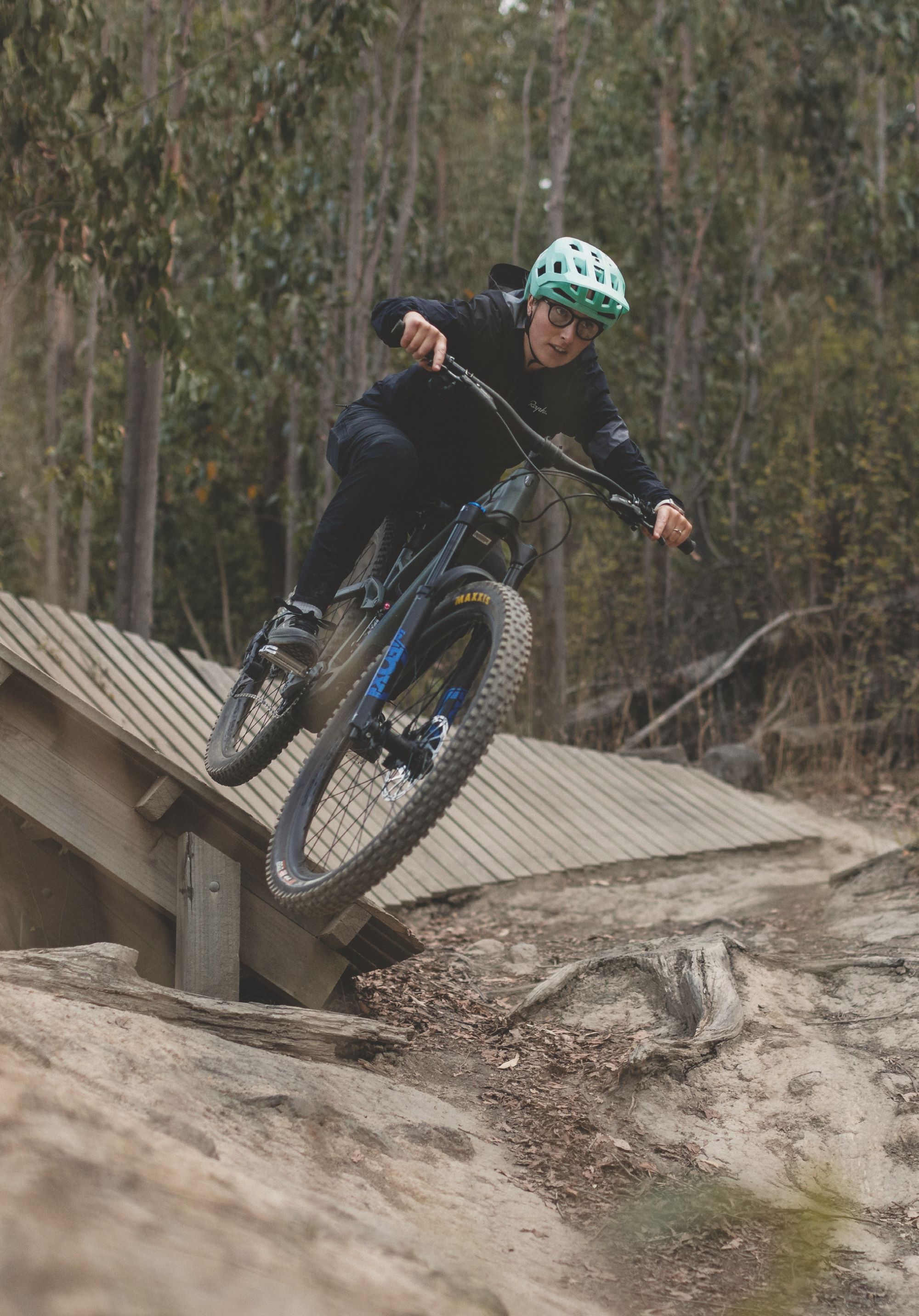
If you’re like me and a busy schedule means limited riding, this bike enables you to cover ground much more efficiently whilst still getting a great workout in, meaning you get to ride more, especially the best parts – the descents!
Descending
Descending, the Fuel EXe comes alive. It excels on wide-open descents, maintaining a planted, compliant feel and isn’t intimidated by big rocks, or venturing into Grade 6 trails. I was highly impressed with the bike’s performance tackling chundery roots and rock gardens, drops and jumps – you’d be forgiven for thinking the bike has 10mm more travel than it really does. The alloy frame strikes a nice balance of being stiff without losing feel of the terrain beneath you, and the wheelbase creates stability that evokes a certain level of confidence over and above other bikes of this travel range.
The Fox 36 Rhythm was a breeze to set up, and the added GRIP dampener helped with small-bump sensitivity – hitting drops and jumps was akin to lounging on a Lay-Z-Boy. It’s plush and the bike really sits into the travel on big hits – one may think, “bold bruiser” as opposed to “nimble dancer” when characterizing the ride feel, which isn’t a bad thing at all on the right trail – this bike has got your back! Whilst more of a “point and shoot” descender that’s perhaps not as responsive as other SL options, such as the Levo SL or Orbea Rise, the Trek tackled my local Christchurch steeps and rock gardens with ease, making light work of trails that, in theory, should be well beyond its paygrade.
The Fox Float X Performance series shock is the perfect complement to the 36 fork – these shocks pack some serious punch and tackle small bump sensitivity with ease, and the dampening is just superb. In my experience, with its stoic build and piggyback reservoir, The Float X considerably elevates the descending performance of any do-it-all mid-travel trailbike, and its extensive adjustability means that it can be tuned out-of-the-box to a wide variety of rider types and terrain.
The SRAM DB 8 4-piston brakes were new territory for me but fitting for the Fuel EXe, self-described by SRAM as being “simple” and “robust” – a perfect complement to the bike’s tough, sturdy characteristics. Whilst initially hopeful as I set off on the first descent, a mellow tech-blue trail at Christchurch Adventure Park, the powerful bite that I experienced at the start of the trail quickly faded and unfortunately left my hands pretty cramped at the trail’s end as I was pulling hard to try and control my speed. Although the Fuel EXe’s beefy 200mm rotors and large levers were an uncommon, but welcome choice for an SL eMTB, these features weren’t quite enough to offset the limited braking power that the DB8’s offered on longer, or steeper descents, and I would’ve preferred something with a little more bite. Undergunned brakes are not unique to the Fuel EXe – brakes are a component that often leaves a lot to be desired when it comes to many of the out-of-the-box eMTB’s; SL or full power, that I’ve ridden thus far. Due to the extra weight of the eMTB, decent stopping power plays a crucial role in how the bike feels, and underpowered brakes can make a bike feel cumbersome and arduous, which is particularly noticeable on an SL eMTB like the Fuel EXe, where you want to bridge the gap between acoustic and electric, not extend it.
Being a longer limbed person, my only gripe when descending was the 150mm Bontrager Line Dropper, which I found to be a little in the way – a slightly longer 170mm drop option would’ve been a welcome addition. We also found the cable actuated dropper post lever to be a little fragile, with the cable detaching from the mechanism on a couple of occasions, rendering the post unusable trailside. On both occasions, remediating the issue unfortunately required no option other than to drop the motor out (a finnicky job, to say the least!) to reconnect this. Routing non-electronic dropper posts is a cumbersome exercise across the eBike board, so this isn’t unique to the Fuel EXe, however, it does mean that ideally the spec’d dropper post should be as reliable and trouble-free as possible to avoid any technical headaches!
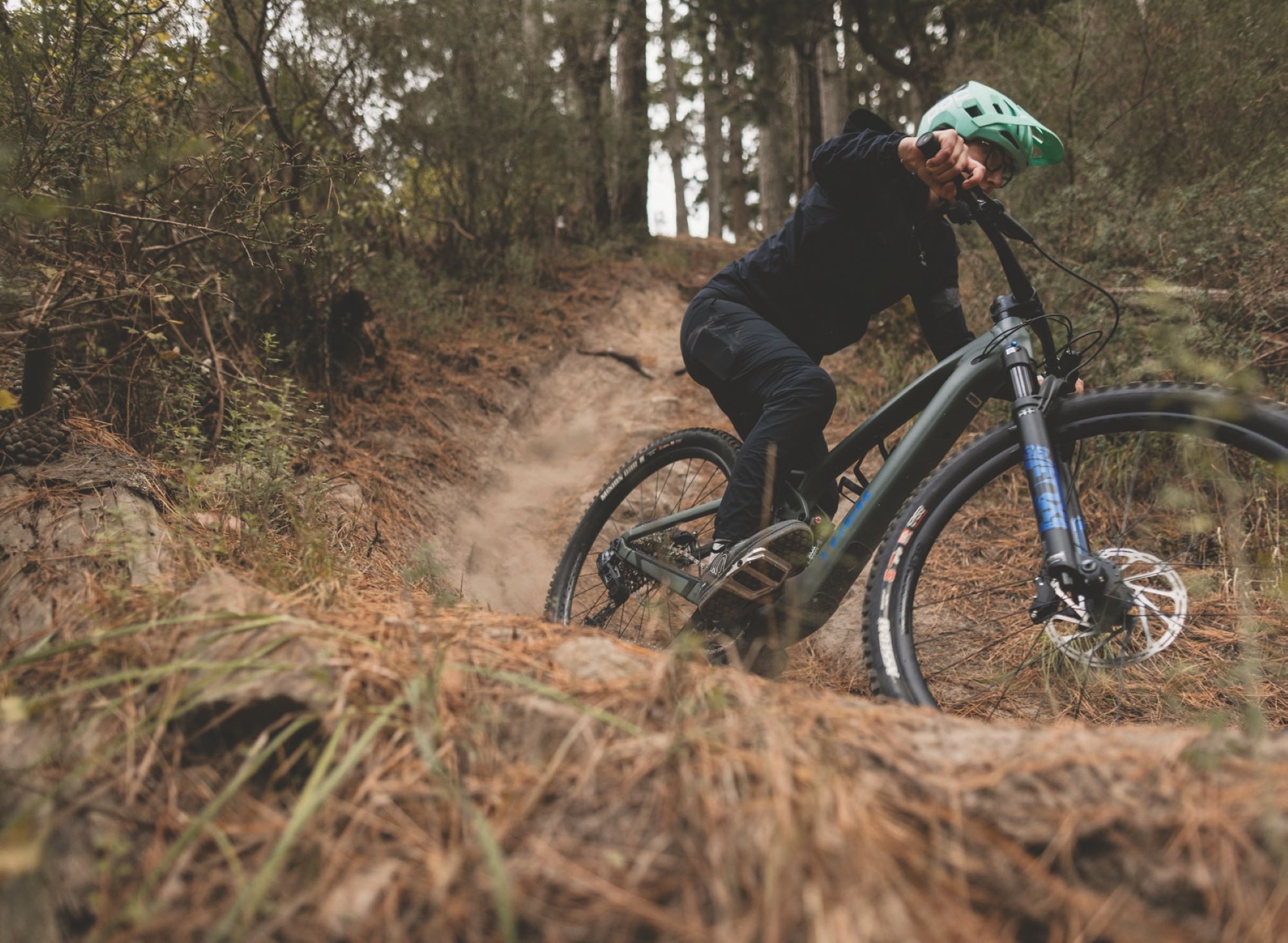
Overall thoughts
The Fuel EXe is an excellent out-of-the-box package that represents great value for money and delivers a ride experience that packs a punch, especially on the descents. With its quiet motor, subtle assistance and stealthy appearance, the bike is a great stepping stone into the wonderful world of eMTB for those wanting to get the most of their ride, whilst maintaining the maneuverability, handling and responsiveness of an acoustic bike.
So, who is this bike for? If you’re on a tight schedule and you’re wanting to squeeze as much riding as possible into a short space of time, this bike is for you. Or perhaps, if you’re looking for a ride experience that mirrors that of your acoustic bike as closely as possible, this bike is for you. If you’re a weekend warrior who often ventures out to the mountains for multi-hour or multi-day backcountry adventures, then this bike perhaps isn’t for you, although the Fuel EXe’s range extender does provide a considerable amount of range anxiety alleviation, depending upon the duration and terrain of your routes.
Whether or not the Fuel EXe is for you depends on the type of riding you’re doing, the type of rider you are and, realistically, how long you often ride for. For me, I loved that the Fuel EXe meant the difference between fitting in a decent ride and not riding at all. If you’re like me and a busy schedule means limited riding, this bike enables you to cover ground much more efficiently whilst still getting a great workout in, meaning you get to ride more, especially the best parts – the descents! Because who doesn’t want to ride their bike as much as possible, right?

Aeroe Spider Handlebar Cradle
Words Lester Perry
Images Henry Jaine
RRP $129
Distributor Southern Approach
With our Mt Starveall mission penned in the calendar, I began pulling gear together for the trip. Sorting through my stuff, it was obvious none of my existing bikepacking gear was quite ideal for a trip like this – my regular strap-on bags just wouldn’t cut the mustard on technical and rough trails; I needed something stable and secure.
Aeroe came to the party and sent me out a Spider Handlebar Cradle and dry bag, and an equivalent setup for Kieran, my mission companion for the trip.
Aeroe set out to create a simple-to-use system for carting gear on your bike, initially developing ‘The Freeload Rack’, which they ultimately sold to Thule in 2011. Not long after the sale, they began quietly working on a new gear-carrying system, presumably waiting until after restraint of trade agreements lapsed to launch under the Aeroe brand. Designed for every mission, from a two-block commute to work to a two-month, multi-country epic, it’s a pretty versatile system – so can be used any time you need to carry gear on your bike, bringing down the cost per use. The entire system consists of the handlebar-mounted Spider Cradle we used during our trip, the Spider Rear Rack, and the more recently introduced Spider Pannier Rack, with the associated dry bags. The entire system is modular, meaning parts of each rack can be swapped over, allowing multiple mounting configurations and helping you to balance the load, or separate gear however you like. The cradle can also be attached to a fork, throwing open the possibilities for how much cargo you can carry.
Compatible with almost any bike, the Spider Cradle was simple to fit to the handlebars. The cradle arrived ready to strap the dry bag on at right angles to the bars (ideal configuration for a fork). I wanted the bag parallel to them so, after a quick disassembly to get the configuration right, I attached the two straps, one on either side of the stem, and tightened up the two 5mm bolts – a quick and stress-free process. There are loads of adjustments on offer, so regardless of the diameter or shape of your handlebars, the cradle should be compatible, even if the handlebar or fork is not completely round. The ease of installation and removal makes switching between bikes or putting away after a mission a cinch.
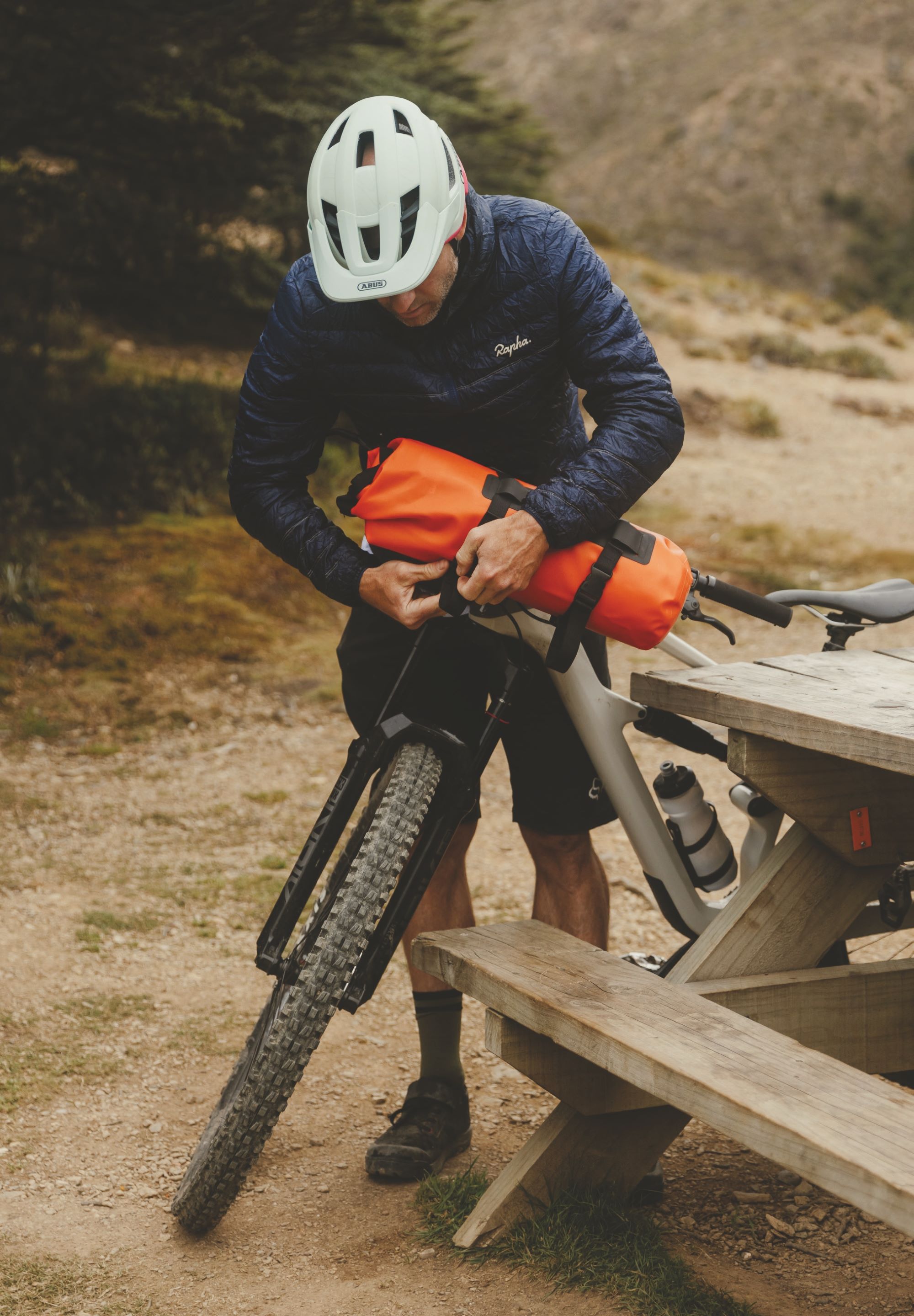
Access to the bolt heads is limited, so I’d recommend a standard L shaped Allen-key to speed up the process (although a multi-tool does the trick, but isn’t ideal). If you run a stem with a particularly wide face plate, it’s worth a quick measure-up to check the cradle will sit comfortably over it. The cradle feet barely had room to fit over Kieran’s stem – let’s just say it was an ’interference’ fit and required a bit more persuasion to fit correctly than on my marginally narrower, more regular stem.
Constructed from glass-reinforced nylon, the Spider Cradle system weighs in at 464g and can carry up to 5kg of additional load. There are two standard dry bags offered by Aeroe; the 8-litre I used, and the 12-litre used by Kieran. The sturdy bags are made with small sleeves to allow the cradle straps to be fed through them, keeping the whole load stable and secure. Any old bag could be used, but I doubt it would be as secure – or offer the same peace of mind – as the Aeroe bags. The beauty of using a roll-top dry bag is the ease of access – depending on how tightly packed it is, there’s no need to remove the bag from the cradle – just unroll the end for easy access.
After being rattled and bumped around during a solid couple of days out on the trail, the bags show very little sign of use and I can’t see them having any issues, provided they’re strapped securely; it’s doubtful the bag would ever wear out.
My Aeroe bag was crammed full with a bivvy bag, sleeping bag and Jetboil style cooker… no room for snacks in there! Kieran’s Aeroe bag had a sleeping bag, sleeping mat, and large jacket – with room for more. To keep our bikes as light as possible – and knowing we were in for a lot of hike-a-bike – we put the remainder of our gear into CamelBak packs. Our setup worked well, and I think we could have scraped through two nights away with no resupply of food given how light we were travelling. Any more nights and we would have needed additional space for food, maybe using the Rear Spider Rack and an additional bag just for food and snacks.
Some gear just works like it should and it’s obvious the designers have thought through multiple different scenarios, solved problems and answered questions.
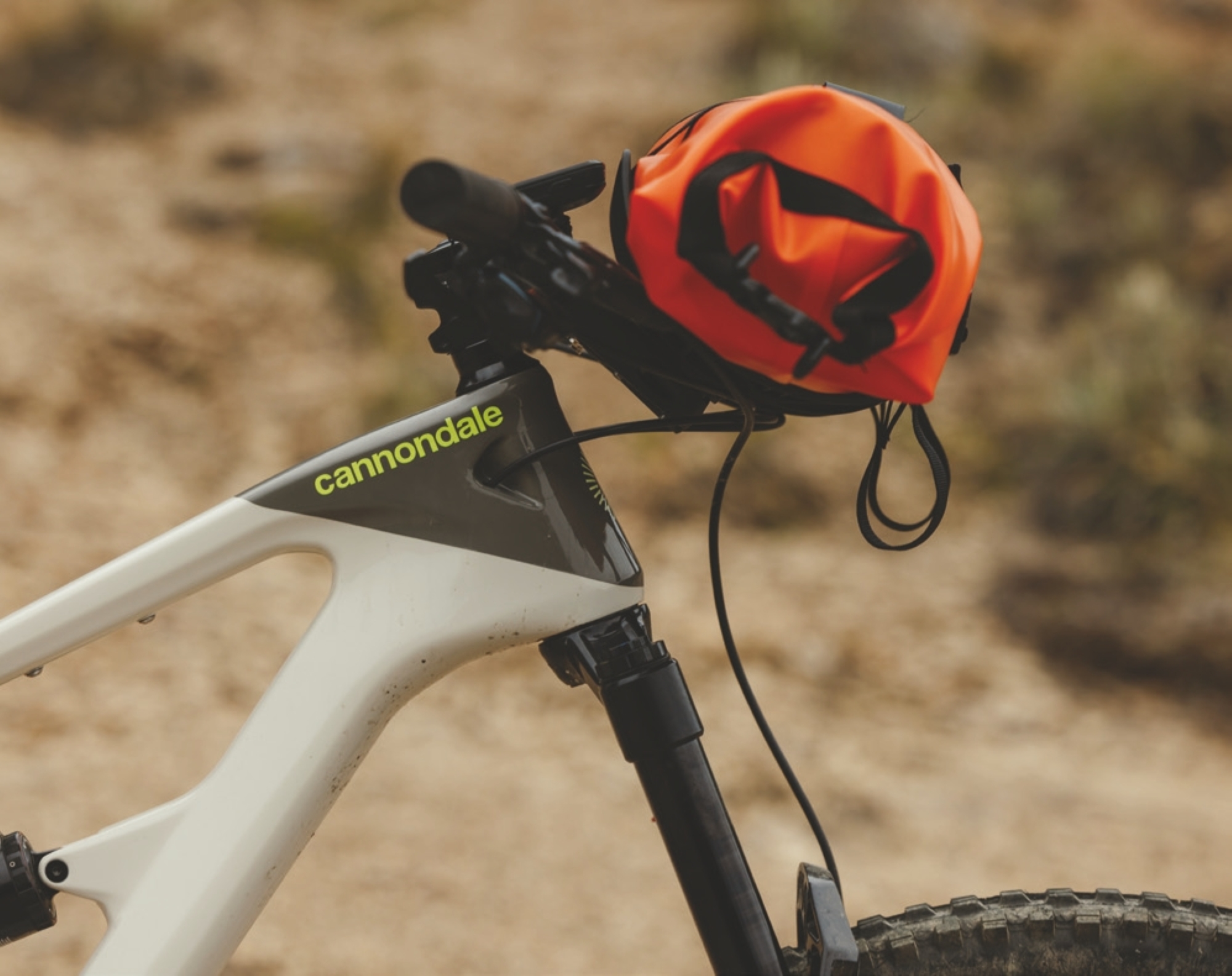
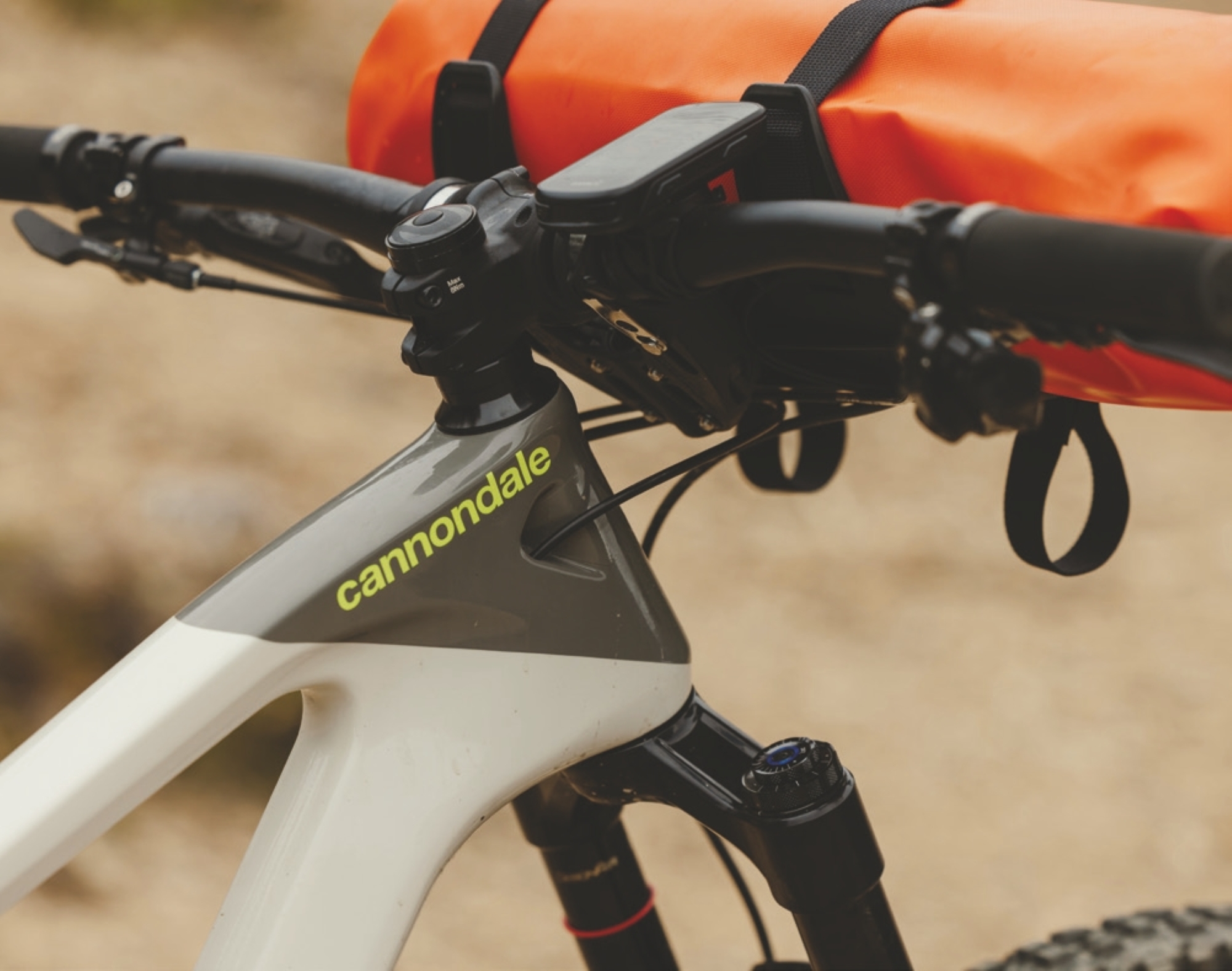
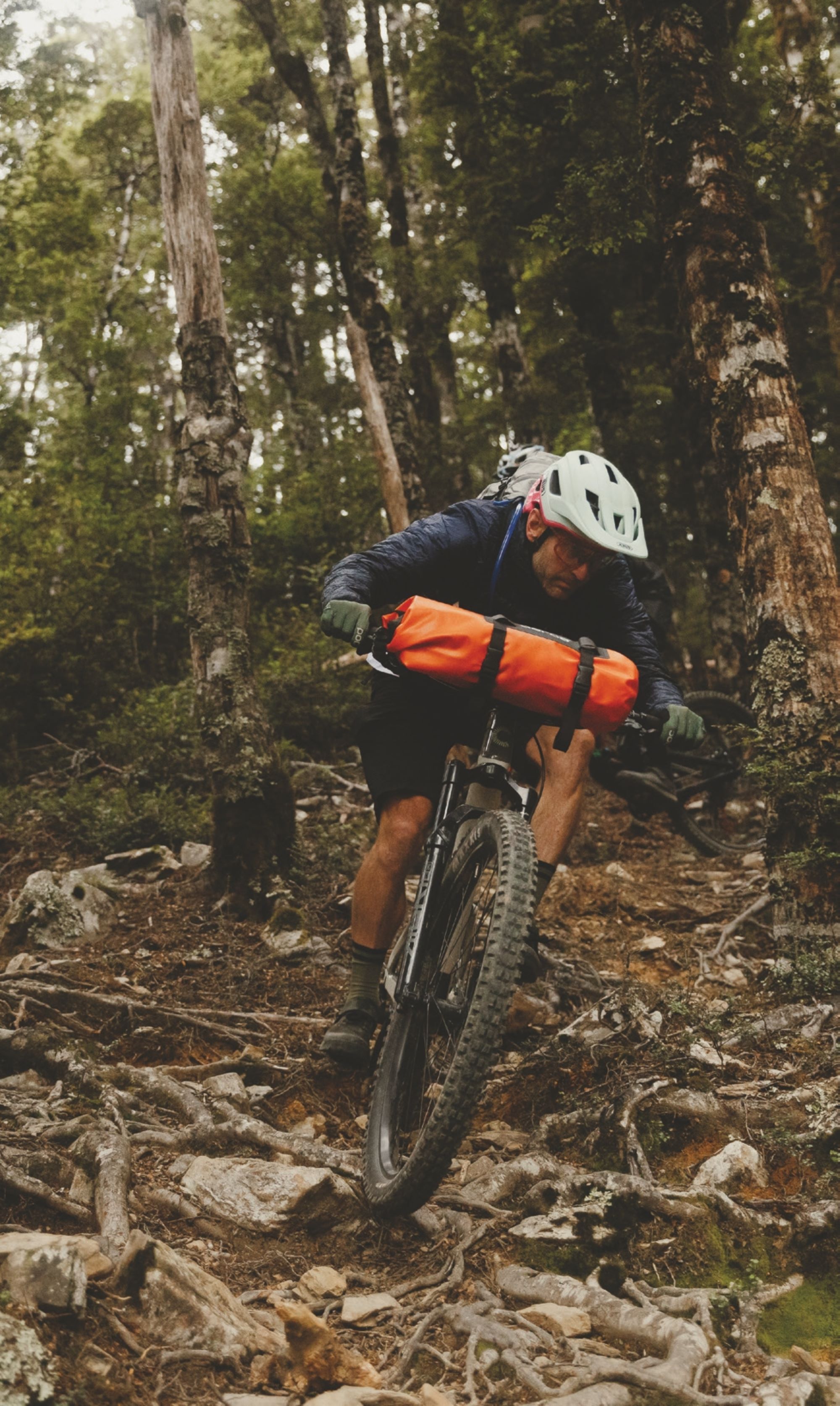
I was pleasantly surprised at how solid the cradle was, even under some heavy impacts, stutter bumps and cased jumps – it stayed put, right where I’d attached it, with no noticeable movement or slippage.
The extra weight on the front wheel was noticeable to begin with, when cornering, but after just minutes in we’d adapted and it didn’t detract from the ride – until we tried to lift our bikes onto our backs for a hike-a-bike for the 20th time! So much additional weight on the front wheel made jumps feel a bit weird and nose heavy. Again, we adapted to the feeling, but it was still noticeable. What was amazing was how much extra front wheel traction the weight gave us – so confidence-inspiring and not something we expected at all!
I haven’t tried the Spider Cradle on a drop bar bike yet, but would assume it will work fine, although depending on how cables are routed; they may foul with the cradle mounting straps, but only time will tell.
Some gear just works like it should and it’s obvious the designers have thought through multiple different scenarios, solved problems and answered questions. The Aeroe Spider Cradle is one such item; I can’t fault it, it does what it says on the tin and stands up to some abuse. I’d recommend this setup for anyone looking to cart gear on their bike, particularly if you’re riding technical MTB trails – I’d be surprised if other systems would be quite as solid. I can’t wait to take the setup out on some more missions!

Product Review: Rapha Trail ¾ Sleeve Jersey
REVIEW: LIAM FRIARY
DISTRIBUTOR: IRIDE / RAPHA
RRP: $155
“The jersey comes with a neat little repair kit with colour-match iron-on patches. You can also get a full repair service from Rapha, should you need it.”
Riding jerseys have come a long way. I think they still have some way to go, but we’re in a good place right now. An interesting observation is that we have gone full cycle, with young shredders now wearing baggy cotton tees. I’m not one of them but do like the appeal of a baggy tee, however, not the gross sweat that lingers on said cotton afterwards.
With that said, let’s talk about the construction of the Rapha Trail ¾ Sleeve Jersey. The main body area is constructed from 100% polyester, 68% of which is recycled. The sleeves are woven from a more durable blend of nylon, polyester and spandex, resulting in a thicker fabric that still retains a degree of stretch. This blend of woven material has been specially developed to add abrasion protection from rogue foliage, branches and involuntary trail lie-downs. The whole garment is finished with an antibacterial treatment, specifically for sweating. Another nifty feature is that the jersey is accompanied by a neat little repair kit with colour-match iron-on patches, for any wear and tear your jersey might suffer from. You can also get a full repair service from Rapha, should you need it. Today, having longevity in the apparel you purchase is super appealing.
The jersey fit is very good; it’s certainly form fitting, so you’ll want to be in good shape. I personally like a bit of room between me and a garment, however, nothing binds or pulls and there is little in the way of extra fabric flapping in the wind. As with most of their garments, Rapha have designed this piece with material that is breathable and feels so bloody nice against the skin. Heck, it still feels good even when you’re a hot, sweaty mess from climbing, or soaking wet from an unexpected rain shower. I’ve got large shoulders and arms, which have been growing over the past wee while – thanks to getting jacked in the gym – so the arms felt a bit tight; and the cuff has been tight since before the jacking programme. They are so slim fit that they pull on the rest of the sleeve when riding. For me, they’re better pulled up nearer the elbow, but could also offer better manoeuvrability. Whilst the body of the jersey is super breathable the sleeves don’t offer the same feature. I would even make some sacrifice for ‘less durable’ but ‘more breathable’ sleeves.
With the cost of living at an all-time high, the RRP does seem like quite a bit for a riding jersey. However, it’s a quality, made-to-last garment, constructed with high attention to detail; it’s comfortable, has subtle style and comes from a prominent and prestigious name within the cycling industry. What’s more, the repair kit means it offers future-proofness, which means a lot in this day and age.
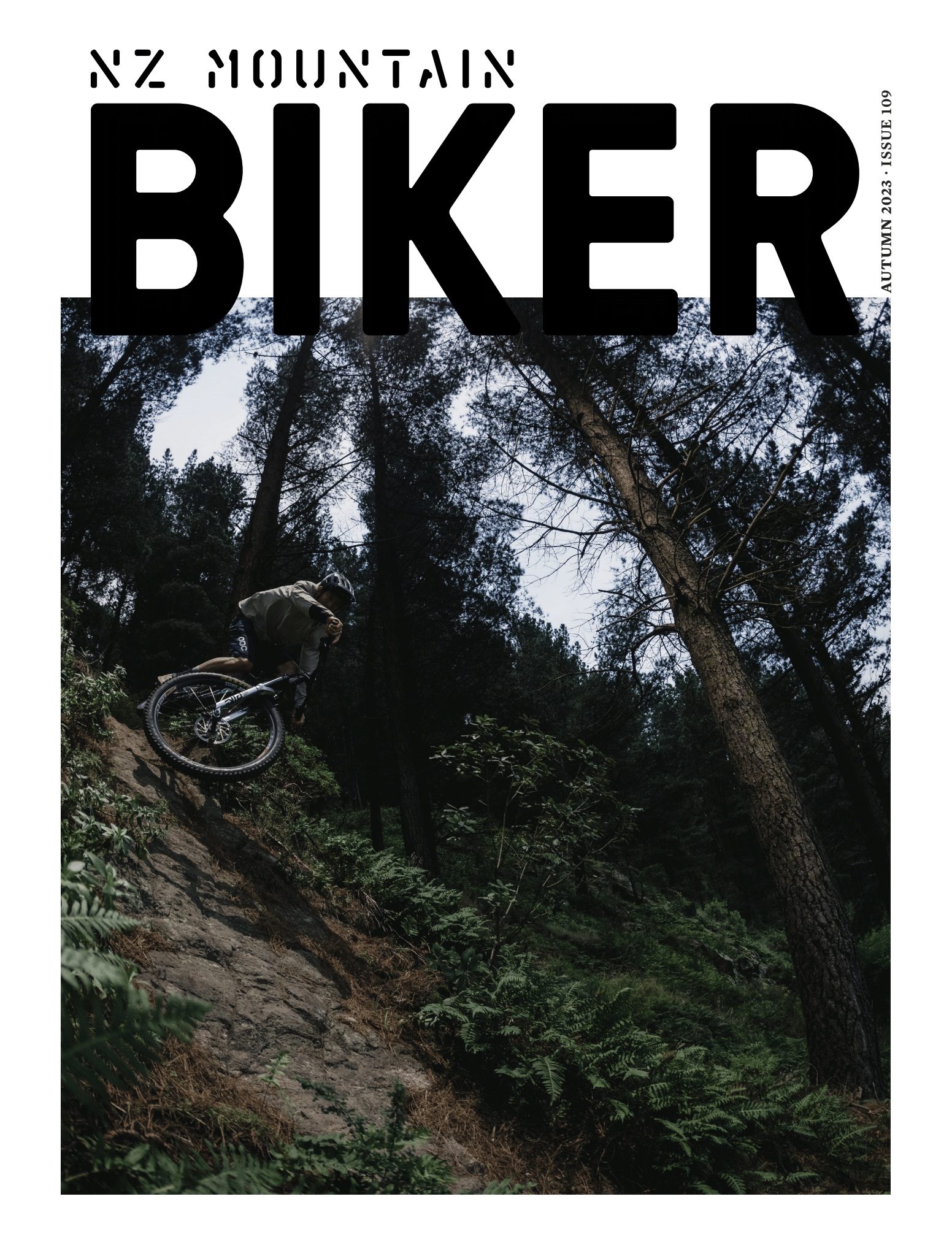
Musings Issue 109
Words and illustration by Gaz Sullivan
“I got hooked up somehow, spat over the bars and into the thicket of manuka that was trailside…”
I worked out recently that 2023 is something of a milestone: I have been riding mountain bikes for 40 years. If practice makes perfect, I should be very good by now. That premise doesn’t necessarily prove to be correct, though. In approximately half a dozen outings so far this year, I have crashed during almost every one.
The first — the one that will require physio — was performed on a short, flat section of a very steep climb. Even with electrical assistance the climb rendered me briefly cross-eyed, and I misjudged a corner. Slight back sprain, but nothing serious. I did knock the control button doofer off its little mounting bracket, but I wrapped it neatly around the brake and dropper cabling and made for the nearest set of Allen keys, down at the car park.
The next bail was executed at a standstill, and involved more pain but less long-lasting consequences. Exiting a favourite trail requires crossing a steep little gully which contains another trail. The procedure is: slow down, check nobody is coming, drop down a bank to get enough momentum to clear the other side. I have done it many times but, for no valid reason, I stalled at the top of the far side. I couldn’t get my foot out of my pedal and toppled over an ancient piece of gnarled wood that is a feature of that section, thus jamming my leg between the wondrous-but-hefty e-bike I am supposed to be reviewing, and the gnarled old log, leaving most of my carcass occupying the trail I was trying to cross, almost upside down. The gigantic battery I like emptying was now making itself felt and, as my foot was still securely clipped-in under the thing, I was sort of stuck. I had to make my biggest effort in living memory to get free before a train of groms ran me over. Lower leg looks worse for wear. Dignity shattered. No other damage.
The best ride of the new year, so far, was out in a jungle I had never entered before, in the company of a gang of very good riders. Here is where the modest skillset I have accumulated after four decades of trying to ride mountain bikes, really jumped into focus. It was a tricky set of trails, most of which I loved. There were a few sections that were well outside my comfort zone. I don’t actually recall any particular crash, but I am sure there was at least one. To demonstrate that falling over from a standing start is my new reality, I made sure nobody missed the next episode. A group ride in Auckland on the roadie was a complete success except for my hard landing. We rode over 50 kilometres in brilliant sunshine, most of it on cycleways or gravel paths on the edge of the Manukau Harbour. Part of that section was a muddy but entertaining bit of singletrack that let us get around a fallen tree, and also filled my roadie shoes and pedals with dirt. We opted for an excellent lunchtime burger in Mangere Village, and I coasted to a halt on the sidewalk in full view of my colleagues and the assembled citizens, and toppled onto the tarmac, feet securely trapped in the pedals. To add to my humiliation I needed assistance to get detached. The consistency of the Ambury Park mud was the perfect roadie pedal glue.
We got back to base a few minutes before Auckland turned on a tropical-style deluge. Rain is never as nice as when it is dodged by a tight margin.
The next day was a bottler, with bright sunshine and high fluffy clouds, making the Rotorua caldera look like the introduction of The Simpsons. There haven’t been two days in a row like that since last year, so bike riding was on the menu again. That jungle I visited needed another look, so I went there again. It was a great excursion, at least as good as the first time. I didn’t crash in any of the difficult bits, but I was steaming along an innocuous stretch on the homeward leg when I made a spilt-second (delusional) decision to get myself out of a rut that had developed in the centre of the trail. I got hooked up somehow, spat over the bars and into the thicket of manuka that was trailside. It bent to accommodate most of me and some of the bike, and I was wedged securely into the landscape, the flexible young manuka trunks were spring loaded and popped in between legs, feet, cranks, frame and wheels, pinning me in position. The prickly foliage was a nice extra feature of that incident, magically distributing itself between my outfit and my skin.
I was tempted to give up and maybe have a nap. I wasn’t uncomfortable really and it seemed like an easier option than trying to extricate myself. But the remains of the trail beckoned, and nothing felt broken, so I wriggled out of the scrub and brushed off the evidence.
Today is Friday 13th. The sun is out, and I am going to push my luck.

Product Review: Ride Concepts Tallac Flat Shoes
REVIEW: LANCE PILBROW
DISTRIBUTOR: SOLIS NZ
RRP: $279
“Finding the ‘just right’ pair of shoes has been something of a challenge for me; admittedly I have, as my wife kindly reminds me, ‘Hobbit feet’.”
Not too hot, not too cold — just right. That’s the Goldilocks approach right? And it pretty much sums up how I approach shoes: always looking for a pair that are just right.
Not too light, not too chunky — just right. Not too subtle, not too gaudy — just right. Not too thin, not too fat — just right. Not too breathable, not too cushioned — just right.
Finding the ‘just right’ pair of shoes has been something of a challenge for me; admittedly I have, as my wife kindly reminds me, ‘Hobbit feet’. Flat and wide. That rules out about 50% of available shoes right away, so trying to find the ‘just right’ pair from the remaining 50% can be tricky. Anyway, first world problems aside, I’ve been pretty happy with the Ride Concepts Tallac Flat.
The Tallac is Ride Concepts’ (RC) latest release and, to me, it’s a bit of a Goldilocks shoe. The sole is decently thick to provide good cushioning without feeling overdone. It almost Not too hot, not too cold — just right. That’s the Goldilocks approach right? And it pretty much sums up how I approach shoes: always looking for a pair that are just right. Not too light, not too chunky — just right. Not too subtle, not too gaudy — just right. Not too thin, not too fat — just right. Not too breathable, not too cushioned — just right. Finding the ‘just right’ pair of shoes has been something of a challenge for me; admittedly I have, as my feels like a more downhill oriented shoe… but, not quite. As I said, just right. The sole is their MAX GRIP compound, and is dialed specifically for the utmost pedal contact and feel whilst also upholding a high level of durability. It’s tacky but not so much that you feel like you are unhelpfully glued to the pedal. The sole also contains some D30 material to help with shock absorption. I really liked the overall feel underfoot. The D30 gives it a noticeably cushioned feeling and the tackiness seemed to be just right for my style of all-day trail riding.
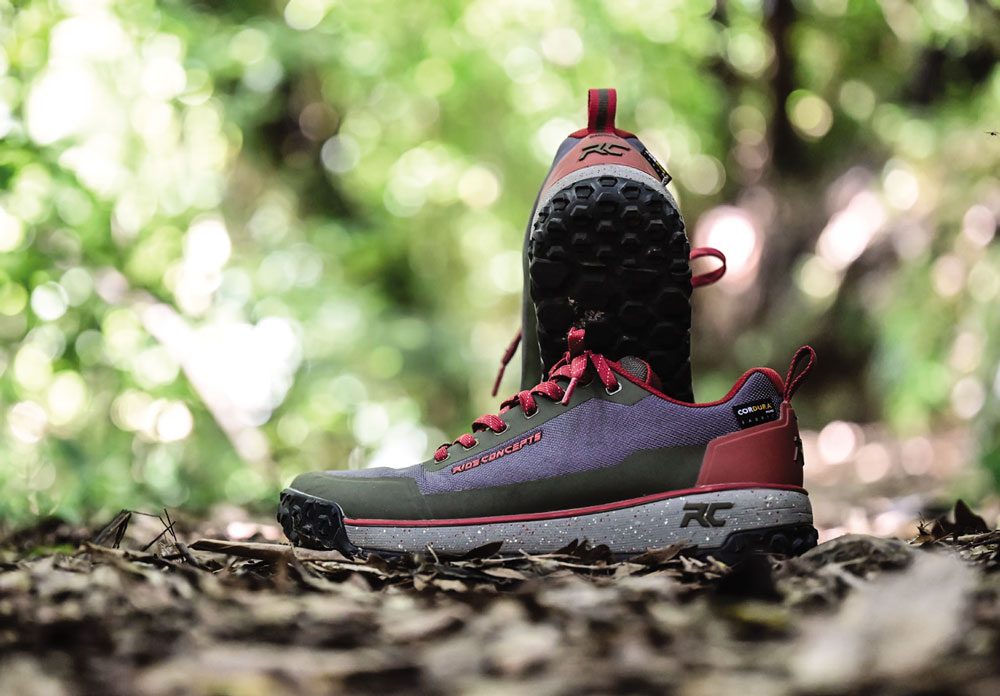
The uppers are made of Cordura and keeping them on are regular ol’ laces. Laces! No boa, no ratchets, no Velcro — good old laces still work great as it turns out. They also have the advantage of just looking like, well, shoes. As a result, these have been on my feet walking around town and getting a drink at the pub as much as they have been used on my bike, which I see as a great bonus. (Admittedly they are a little on the stiff side for walking in, but that’s not what they were designed for, obviously.) In terms of style, the Tallac is available in three colour ways, the Charcoal/ Oxblood that I have had on review, a plain Black/Charcoal, and a bit more wild Olive/Lime. I think the Charcoal/Oxblood is the Goldilocks option – not too Plain Jane, not too ‘look at me!’ either.
After a summer of riding (and walking), I’m still really impressed with the fit, especially for my aforementioned Hobbit feet. I often find shoes feel too tight across the widest part of my foot, (kind of laterally across from the ball of my feet), however, these feel great. They also seem to strike a nice balance between having enough padding internally that they feel really comfortable, without feeling like they will be a complete sponge which will weigh a tonne when it rains. The toe box also offers good protection. While it’s no steel capped work boot, I donked my foot head on (toe on?) — pretty nastily — into a surprise tree stump once and was stoked that my foot came out unscathed, well protected by the Tallac. The tread has also had some thought put into it, with a bit more of an aggressive pattern at the toe and heel — this gives the shoe the ability to hook in nicely if you’re walking up a slippery bit of trail. The Cordura outer seems to have a certain slickness to it as well — mud doesn’t appear to stick and absorb, so they just always look sharp. I reviewed the new Specialized 2F0 Flat last year and while they were fantastic as well, I found they had skimped on the inner padding (presumably in an effort to keep weight down and to help them dry out fast). The downside for me was that they just weren’t as comfortable as I thought they could be. If I was choosing one, I’d personally go for the Tallac. The Tallac is a bit thicker, a bit burlier, and just a bit comfier all round.
Weight wise, my size 44 weighed in at 870g for the pair. That’s fairly hefty compared to some other offerings (the Specialized 2F0’s were around 740g by comparison), but to me it’s a fair tradeoff for a great feeling shoe. I never felt like I had ‘heavy’ shoes on, but I did appreciate the added support underfoot. All in all, this is a great shoe for anyone looking for something with just a bit more to it than some of the other lighter offerings on the market.

Pivot Shuttle LT
Words Georgia Petrie
Images Cameron Mackenzie
RRP $25,995
Distributor Allsports
It’s been several years since we saw Pivot’s first iteration of an eBike. Back then, it was a 27’5” wheel-equipped, 66-degree head-tubed, monstrosity with less power than your toothbrush. Fast forward five years and, thankfully, Pivot’s designs have moved on, along with a lot of the tech hanging between the wheels.
For the eagle-eyed bike nerds amongst us, it was clear to see Pivot’s new design direction from a mile away. It was only a matter of time before we saw them electrify their proven Firebird platform, among others. Those dreams have been realised with the release of the Shuttle LT. Positioned firmly at the top end of their line-up, both in geometry and price, the Shuttle LT isn’t for café enthusiasts.
Frame & Features
Boasting 170mm front and 160mm rear travel, Pivot’s Shuttle LT doesn’t muck around. Paired with aggressive geometry, the bike is a capable all-rounder designed to tackle any trail –the chunkier the better –without compromising on uphill performance. The Shuttle LT comes equipped with Pivot’s long-time, proven, DW-Link suspension platform and atypically short signature Pivot chainstays. That is to say, it’s a nimble climber that, despite its meaty travel, isn’t intimidated by awkward roots and rocks amidst steep ascending pitches. Likewise, on the descents, The DW-Link platform provides superb bump sensitivity, and aids in feeling as if the bike desperately wants you to go faster. This is evident with the Shuttle LT’s non-powered brother, the Firebird, however the added weight of the motor and battery exacerbate its ability to suck up small bumps and heavy hits even further. Like what we’re accustomed to seeing on many other Pivot models, no small details have been missed. It’s clear that a lot of thought has been given to the integration of the eBike specific details on the shuttle, like the power button, charge ports, and custom motor cover/bash plate.
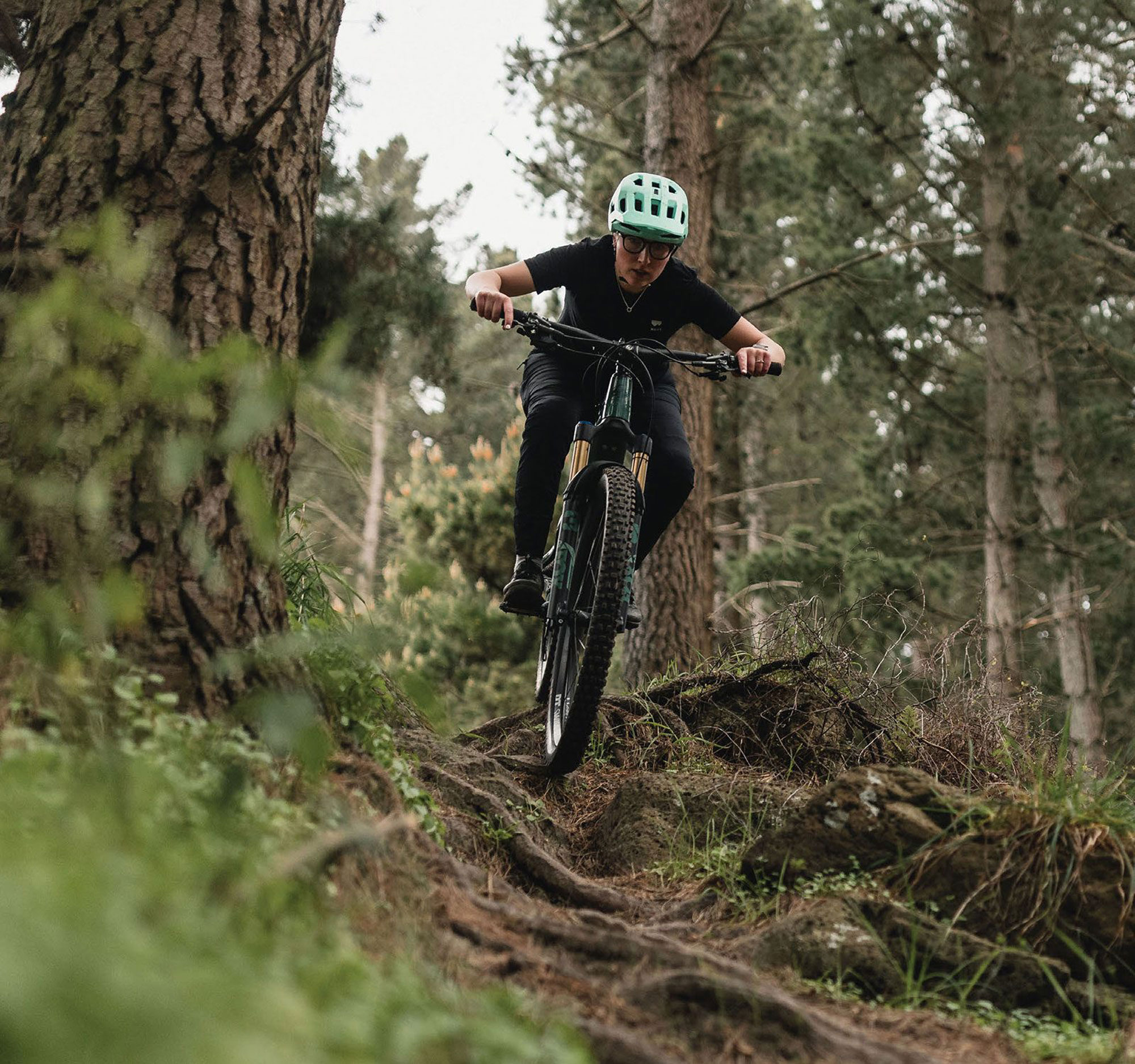
eBike features
The Shuttle LT sports Shimano’s top-tier EP8 system, which boasts 85 NM of torque and a peak power output of 500wh. On trail, the EP8 system performs flawlessly –providing responsive and assertive assistance, whilst not avoiding the high-pitched whirring of generations gone-by. You’d be very hard pressed to find a technical climb that this bike can’t handle – in fact, you’ll find yourself wanting to turn the assistance down, as opposed to up. A key feature of the EP8 system is the connectivity with Shimano’s E-Tube app, which was faultless to connect with and intuitive to use. After a few rides, I found myself wanting to adjust the motor’s tune so that there was more discernible difference between the three modes –Eco, Trail and Boost. I personally found the factory tune to be a little too powerful for my liking, and the difference between Trail and Boost a little too marginal, so I opted instead for a tune with equal difference across the three modes. Out of the box, the Eco tune was akin to riding a magic carpet on climbs – almost a little unnatural, and removing too much of the likeness to a non- powered bike. The difference between Trail and Boost was so marginal that it didn’t really matter which mode you chose, each would fly. Using the app to adjust the assistance offered in each mode improved the riding experience juristically, and helped remove that all-or-nothing feeling -though I’m not sure how many of the prospective buyers for this bike would be aware of that functionality. While the EP8 motor integrates into the frame well, the rest of the system leaves little to be desired. A lot of other manufacturers, such as Brose or Bosch, offer much cleaner and sleeker integration of their displays and controls nowadays, with some handlebar controllers even being wireless, and displays fitted into or onto the top tubes of bikes. In the case of Shimano’s EP8 System, the controls are connected via a network of small cables, linked to a basic display fitted to the handlebar. The system isn’t bad overall, and Shimano’s controller is sleek, but the little cables added have a big impact on the tidiness of the front end.
Geometry
The Shuttle LT sports progressive and aggressive geometry, comparable to many non-powered EDR World Cup winning Enduro bikes. The 64.5-degree headtube angle means the bike isn’t intimidated by steep, technical tails and maintains a “point and shoot” feeling –no matter how tricky the trail, you can be rest assured this bike has got your back. Paired with a long 1245mm wheelbase, the bike excels on fast, wide-open trails where it is stable and planted; however, its heavy weight can sometimes feel a little cumbersome on more awkward, tighter sections of trail, both climbing and descending. The Shuttle LT’s aggressive design continues through into the front triangle, with the bike boasting a longer-than-usual reach – 471mm on the size medium. It’s not uncommon to find many other long-travel eBikes offering smaller reach numbers, as a way to overcome the weight and manoeuvrability penalties of full-powered bikes. In the case of the Shuttle, this long front-centre doesn’t penalize the performance off the bike – rather adding to its point-and-shoot portfolio – but is a critical pinch point for the bike, and prospective buyers whom may be wanting the bike to fit or feel a certain way on the trail. The long reach and wheelbase are complemented by a steep seat tube angle of 77-degrees that balances out the cockpit, creating a forward-riding position that reduces the feeling of reaching far, making the bike delightfully comfortable on lengthy climbs. While the short seat tube ensures the bike is well and truly out of the way when attacking technical descents, those with longer limbs (myself included) may find the stock 175mm Fox Factory Transfer dropper post a little short, leaving more seat post exposed than desired, and therefore find themselves wishing for a 200mm drop post instead.
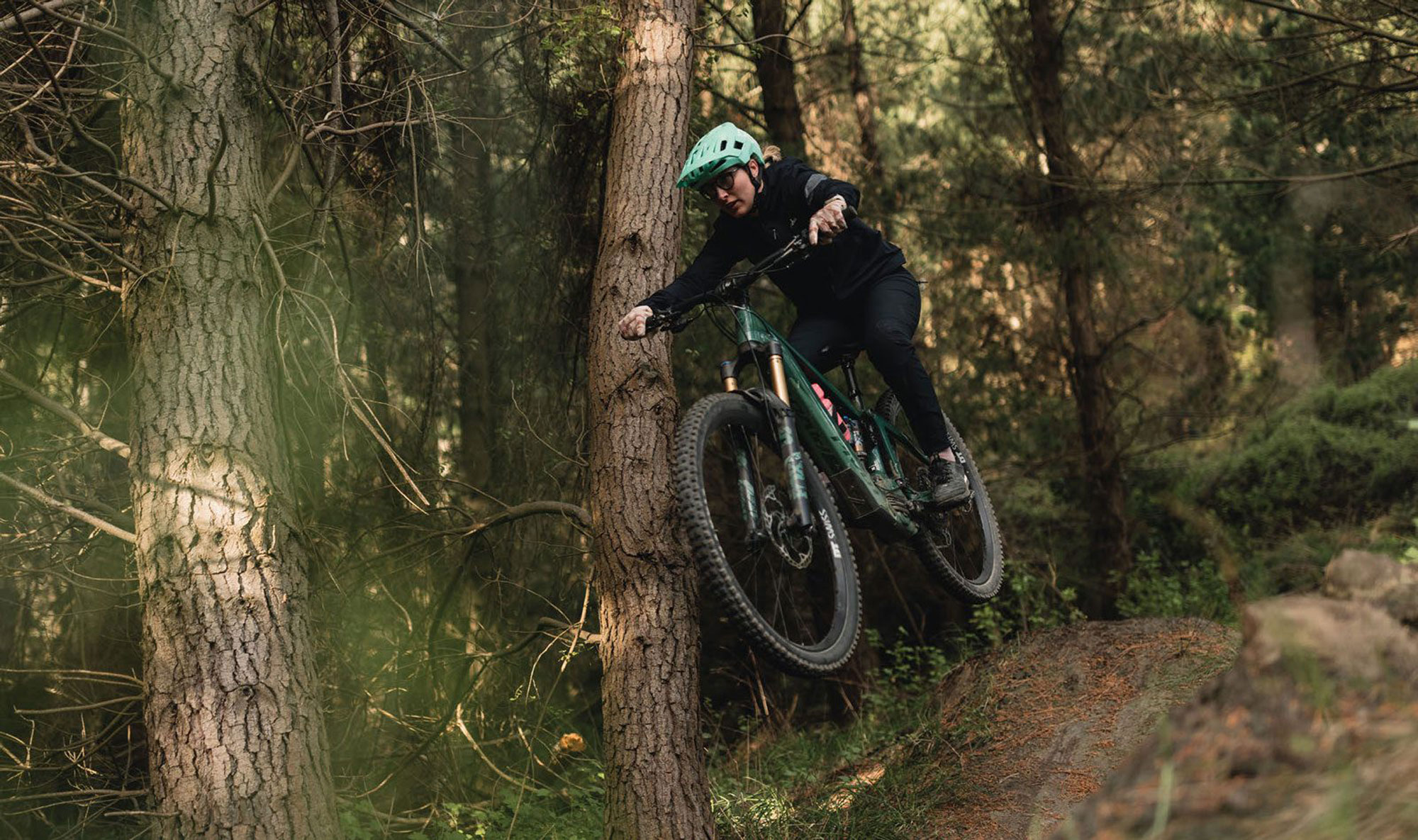
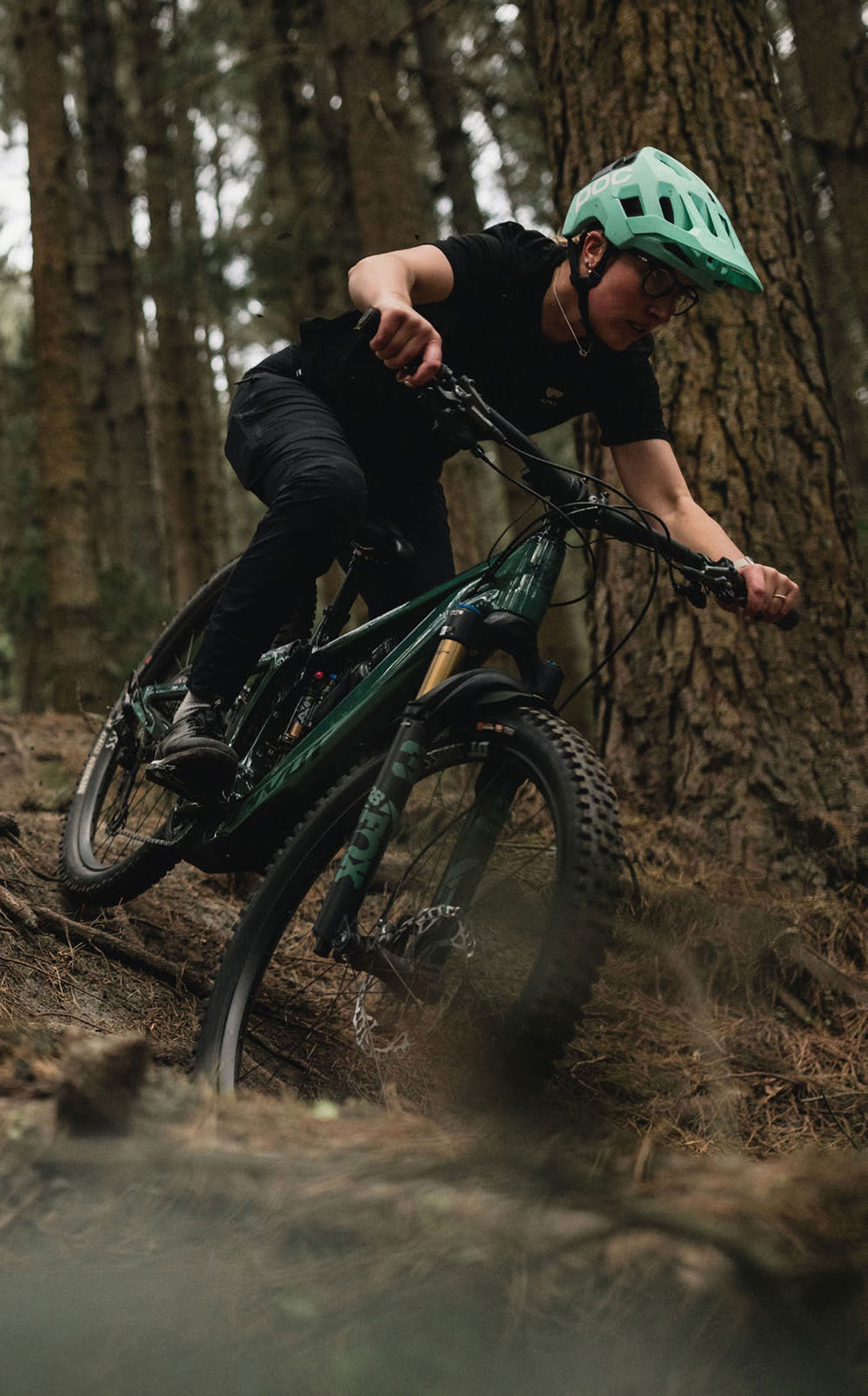
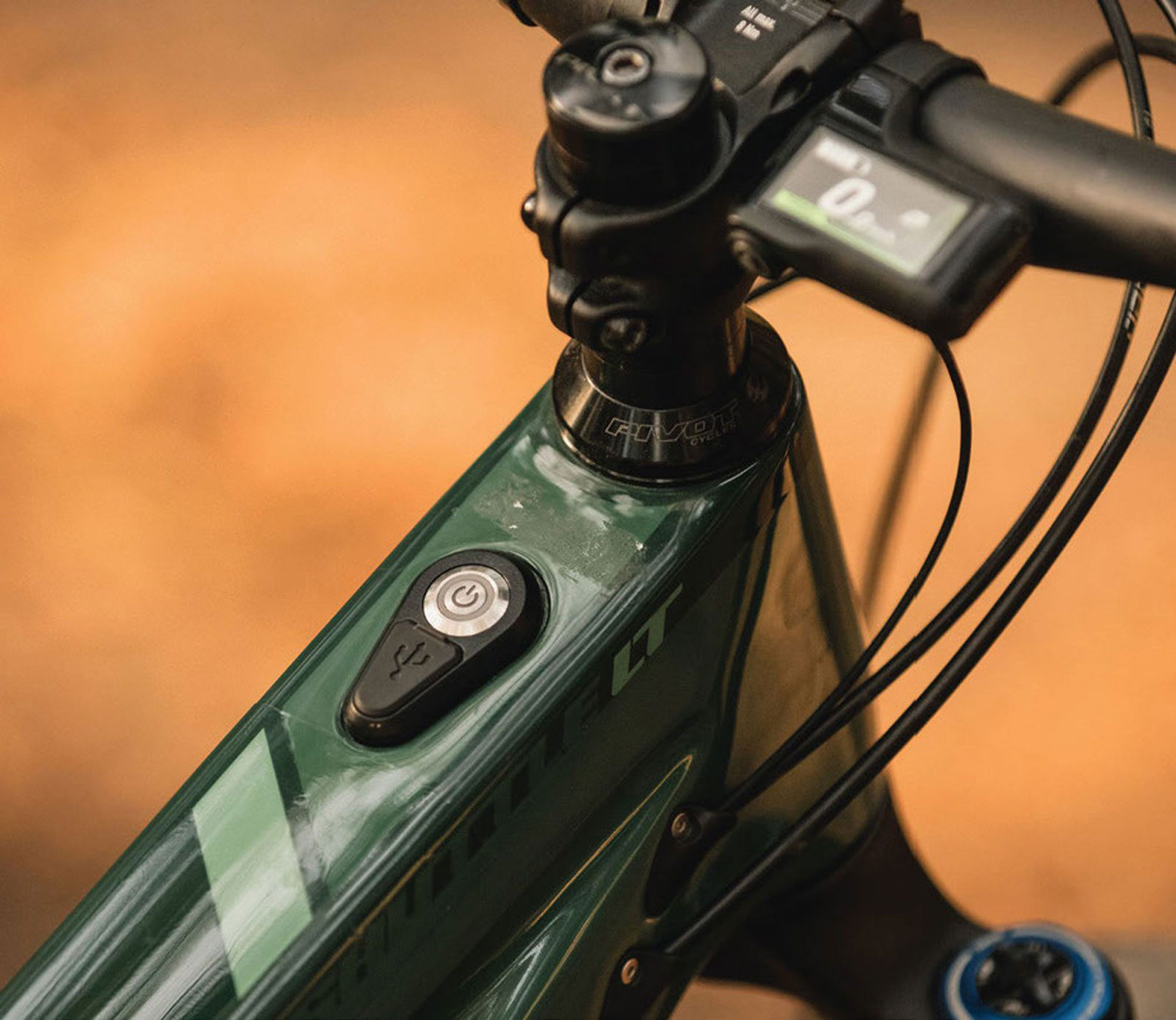
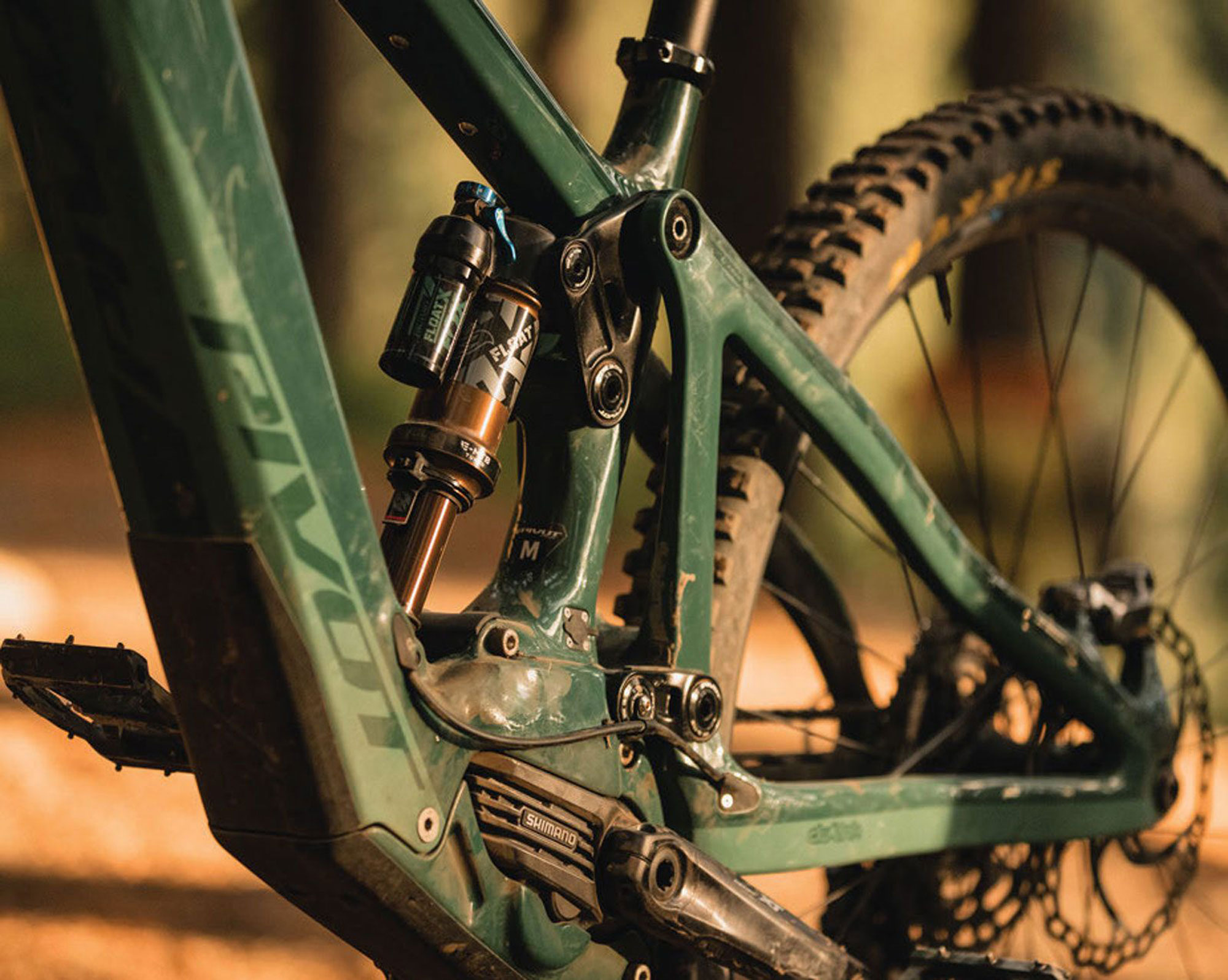
Ride performance
Climbing
Pivot have managed to strike a fine balance between a wheelbase that creates a stable, planted feel on the descents whilst maintaining a cockpit that doesn’t feel cramped when climbing. Without contradicting myself, the only downside to the Shuttle’s long-limbs is that the bike can be a little cumbersome on tight uphill corners, especially when combined with the added weight of the powertrain. I found myself needing to be a bit careful where you point your front wheel to ensure that the power and torque are tracking exactly where you want to be, because if you end up a little off-line, it can be a bit awkward to correct your trajectory. However, all in all it is delightfully comfortable on the ascents; the upright, forward-climbing position makes it feel almost eager to propel you forward with each pedal stroke, even on the steepest of climbs. This will come as no surprise for those familiar with Pivot’s adaptation of the long-proven DW Link suspension platform – having ridden many of their non-electric offerings in the past, the sensation of efficient propulsion is certainly as present on the Shuttle LT. The shifting quality is impeccable thanks to the top-of-the-line Shimano XTR groupset, meaning you need not worry about the bike hesitating or searching for gears upon downshifting, a particularly beneficial quality given the ample
torque produced by the EP8 motor when climbing.
Descending
Let’s not beat around the bush – with 170mm of travel and aggressive geometry, the Shuttle LT is a bruiser that excels on chunky, high-speed and technical terrain. The bike tackles chundery terrain with ease, and small bump sensitivity is superb with the Fox Factory E-MTB 38 and Float X being the perfect pairing to its aggressive geometry. Compared to the non-electric offerings in Pivot’s range that I’ve ridden previously, such as the Firebird and Switchblade, the Shuttle LT frame feels a little less stiff on high-speed descents which was actually a welcome surprise, as it off-set the added weight of the motor and gave the bike a more natural feel. In classic Pivot fashion, the Shuttle LT sports short chainstays and a low standover, making it easily manoeuvrable in awkward, tight spots and making the rider feel “in control”, which is particularly important to note on an eBike, as the added weight of the motor can often bring about a “lead weight” sensation akin to the bike doing all the work for you. Add to this the Shuttle LT’s slack head angle, which creates a confidence-inducing “point and shoot” feel on particularly steep descents, elevated further when combined with the bike’s ample braking traction. After riding a range of both lightweight and full-powered eBikes, I have often found that brakes are one of, if not THE, most under-gunned components spec’d on these bikes relative to their weight and required stopping power. So, it’s fair to say the Shuttle LT’s XTR brakes, paired with meaty 203mm rotors, were a welcome addition particularly given the steep, technical terrain the bike excels on. However, I would’ve preferred a hardier tyre than the stock EXO+ Maxxis Assegai on the rear, as this had a tendency to lose grip in loose conditions and roll around unnecessarily, so I ended up swapping this out for a Maxxis Minion DHRII with a Double Down Casing to achieve a little more support under braking. Pivot’s contact points also leave a lot to be desired –from the thin, slippy grips to the low-rise bars topped off with the harsh, uncomfortable saddle. Arguably, contact points and tyre choice are subjective, but when paying $25k you’d hope that some of these finer details would be a little more considered. Whilst the Shuttle LT’s big 756Wh battery does provide ample fuel for all-day adventures, because this sits within a relatively chunky downtube coupled with the angled vertical shock mounting position, It does mean you are left with limited additional frame space for other adventure essentials. On the size medium frame I was reviewing, it was a push to fit my smallest 600ml bottle, and trying to strap anything extra to the frame – such as a small jacket or even an enduro banana – is out of the question. Whilst not a dealbreaker, it does mean you need to be extra conscious before heading out the door that you’ve got enough alternative means of carrying your knick-knacks, and more than an hour’s worth of water. These may sound like minor points, but the irony of all this is that with the beefy battery the Shuttle LT boasts, you’re able to extend your rides, albeit without the ability to carry to essentials one may need to support such missions.
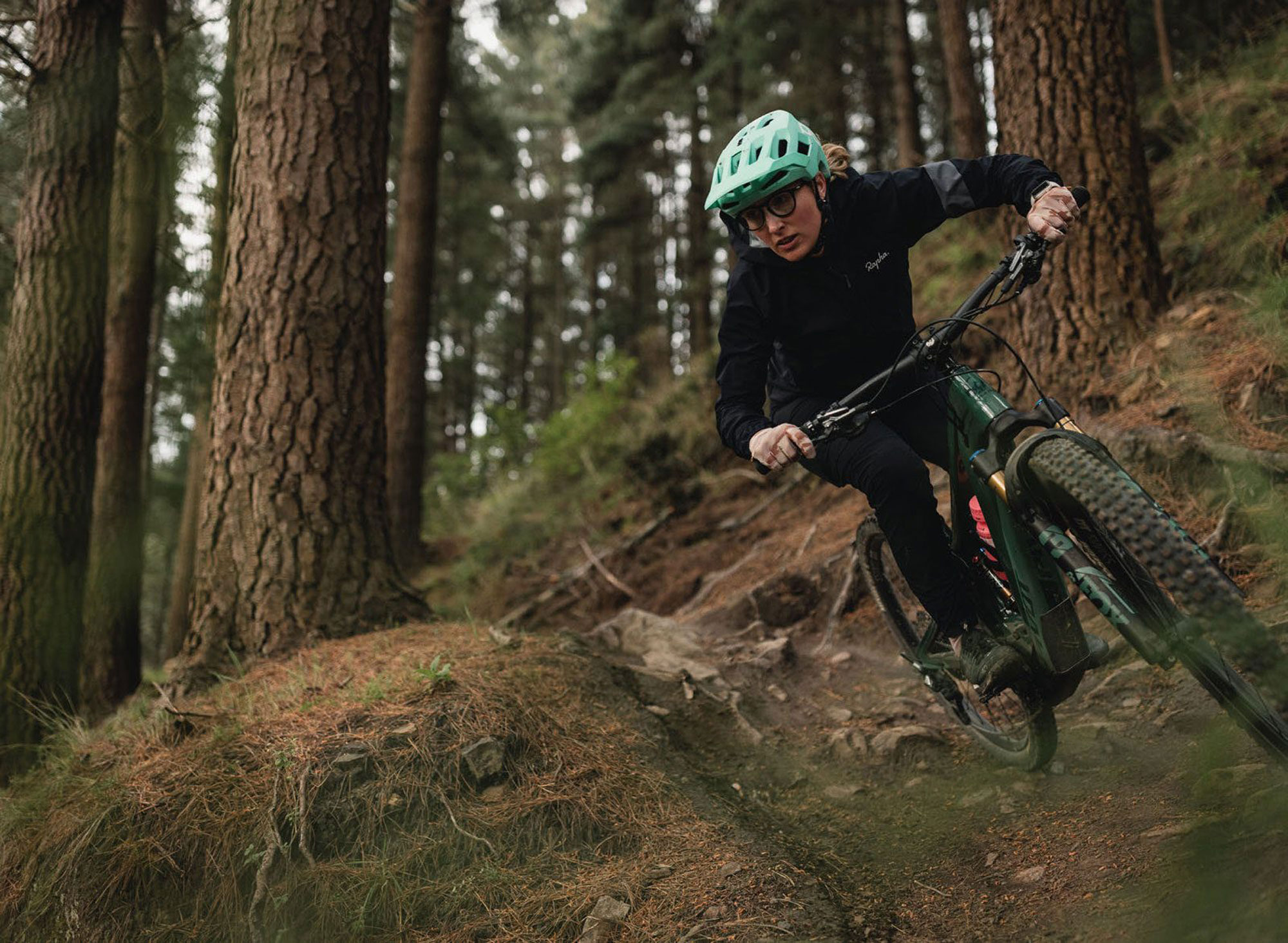
Summary
Whilst the Shuttle LT belongs in the upper-ranks of eBike offerings for its well-rounded capabilities and genre-bending descending characteristics, the little details do impact the bike’s scorecard. If you can look past the angled shock position – yes, I said it – then the Shuttle LT is a strong offering in an increasingly completive segment of the e-market. Whilst there are a lot of small details that have been overlooked – from poor spec choices in the tyres and contact points, to the messy cockpit thanks to Shimano’s reliance on cables – the bones of the bike are solid. A good mechanic – or a 6-pack of beers and a few metres of heat-shrink can overcome the clutter, and things like tyres and grips can be swapped. I’ll let you decide if, for $25,995, you should be having to but, firstly, try one on for size as you may find you’ll want to size down.
